Our two weeks family trip through Georgia Part 2
Journey through Western Georgia: Soviet throwback, rusty cable cars and remote mountain villages (28)
There is a very well-known legend about Georgia, which probably appears in every travel guide in the first chapter and is told in every documentary within the first few minutes and therefore all those who are familiar with the country can confidently skip a few lines. For all the others, here is a short summary of the - extra-biblical - legend:
God was busy with the important distribution of the earth into individual countries, but the Georgians were missing. The rather hungover Georgians came too late after a previous feast, an extensive supra, and everything was already sorted out and all the countries claimed. Clever as they were, the Georgians told God that they had held the feast only in his honor and had sung and toasted to his Glory, and God was so pleased to hear about this, that he gave them the last precious piece of land, which he had originally held back for himself.
And when you travel through Georgia you start to believe this legend as the country is breathtakingly beautiful and even if it’s just as small as the republic of Ireland, we’re surprised again and again by its diversity. And with this short introduction we now take you on the second part of our trip through Georgia with Lisa's parents. From the old capital Mtskheta we are heading west to Imereti and the mountainous region of Svaneti.
Time travel in Gori
After only 45 minutes of driving we reach the small town of Gori with 45’000 inhabitants, known as the birthplace of Joseph Vissarionovich Dzhugashvili aka Stalin. One of the most famous Georgian personalities, the dictator is still honored by some people in Gori who rave about the time under Stalin when the city was doing better economically. The palace-like Stalin Museum is a time-capsule, a homage to the iron leader and remains unchanged since its opening 1957. The museum glorifies the life of Stalin instead of making a serious attempt to present a balanced account of Stalin’s career or deeds. The staff is said to be as vintage as the exhibition, and younger people who are more critical are not given employment at the museum. At least this is what our guide tells us and we decide not to visit the museum. It is also astonishing that there is no new concept for a modernization of the museum in sight. Next to the museum there is the alleged birthplace of Stalin, a large statue and an apparently bulletproof train carriage that he traveled in. It all seems like a slightly unpleasant journey back in time, especially when we see a souvenir stand selling Stalin memorabilia and pins with his face.
Chiatura – the city of iron coffins
The day continues as bizarre as it began with a visit to the mining town of Chiatura (population about 12’000). The town used to be a Soviet worker's paradise under Stalin and one of the most important sites for manganese production worldwide. This mineral is used to manufacture iron and steel and if not for manganese, the town wouldn’t exist. Chiatura lies in a gorge surrounded by high mountains and in order to transport the workers a unique public transport network of 26 passenger cable cars was created. The huge deposits of manganese ore in and around Chiatura had been known for a long time and had been mined since the end of the 19th century, but it was not until the Soviets professionalized mining in the 1950s that the infrastructure was massively expanded and most of the cable cars date from that time. Also known as the "city of iron coffins” or more nicely put as the "Venice of the skies," the cable cars transported workers from the valley to the mines and residents from the then-modern prefabricated mountain settlements to the city center during the boom times. Metal cables from more than 70 material and passenger railroads stretched across the city's skies in total. A ride on one of these rusty cable cars is sure to provide a thrill, but in summer 21 they’re all standing still as a brand new set of cable cars is scheduled to replace the old "coffins" starting in the fall. This will be a great advantage for city dwellers, as many school children and commuters rely on the cable cars, and in the future a ride on them will be much comfortable and safer.
The visit of Chiatura leaves a lasting impression and a bitter aftertaste. Work in the old factories still continues until today and despite their dangerous job, the miners earn only about USD 300.- per month. We see many half-ruined houses where people still live and the river Kwirila has an unnatural dark color from all the toxic deposits. It's no surprise that the inhabitants complain about health problems due to the air pollution and we truly hope that in the future something will change for the better in this forgotten city and that there will be more quality of life for the residents of Chiatura.
Stairway to heaven
Chiatura is located in an area full of limestone caves and other rock formations, and on one of these impressive pillars a monk has taken up residence. The 40-meter high prominent Katskhi Pillar oversees the landscape and holds perhaps the smallest monastery in the country. In 1993, a resident of Chiatura decided to change his vicious life and to live on top of the rock as a monk. The hermit receives water and food from his followers via a rope and only a thin metal ladder leads to the top, but only monks are allowed to make the nerve-jangling ascent. Even a German TV crew that wanted to make a documentary about him was denied access. We wonder if the little monastery has its own wine cellar up there?
Relaxed Kutaisi, impressive canyons and former sanatoriums
For the next two nights we base ourselves in Kutaisi, the third largest city of Georgia (population about 150’000). The center of the region Imereti is very relaxed and has a totally different vibe than Tbilisi and Batumi. One could almost forget that Kutaisi is one of the oldest cities in Europe and at the time of the Greek legend of the Golden Fleece (8th century BC), it was also the capital of the legendary Kingdom of Colchis. And in the center of Kutaisi, you will find the Colchis Fountain, consisting of 30 statues of animals, that are copies of archaeological discoveries from the Colchis era.
We especially liked the large Green Bazaar that offers many fresh products and traditional delicacies such as churchkhelas. And because this market tempts you to buy in bulk, you can also treat yourself to a "personal shopper". Your personal shopper, usually a man, would then follow you with a cart through the market and transports your purchases to your car. Fortunately, we don't need that much, but we do need a few churchkhelas for our trip into the mountains. But before we head up to some remote villages, we’ll explore the surroundings of Kutaisi, as the city is an ideal base to explore various cultural and scenic treasures.
We spend two nights in an accommodation, which unfortunately doesn’t serve breakfast during the pandemic. Luckily, the owner turns out to be a very hospitable Italian woman and we are treated with some real coffee before starting our day. This is not a matter of course, as coffee machines are a rarity in Georgia and Jacobs coffee blends are often the only “coffee” you can find. Not having breakfast in an accommodation is not a problem, unless you are on a guided tour with a schedule and in a country like Georgia, where people stay up late and sleep in and most cafes and restaurants don’t open until midday. We even saw a restaurant that advertises special breakfast menus, but only opens at 11.00 (?). This is just a small example of the numerous cultural peculiarities that we encounter again and again on this trip and that make us smile. However, Georgia is ideal for late sleepers and even during such a guided tour you get enough sleep, because literally nothing happens before 09.00. Fortunately, our guide Nini is good at improvising and manages to find a place that’s open before 10.00.
After tasting some local sweets, we’re ready to visit another monastery. This time it is the Gelati Monastery, which has nothing to do with Italian gelati. The monastery complex is one of Georgia’s most important churches and academies. This UNESCO World Heritage lies on a wooded hillside 8 km northeast of Kutaisi. In the morning there aren’t many visitors around and we can enjoy this outstanding example of Golden Age architecture almost to ourselves. Scholars and intellectuals across Europe visited Gelati and they must have combined philosophizing with drinking, as in the middle of the academic hall there’s a qvevri (clay vessel used to store wine). The extremely zealous Georgian king, Davit the Builder (see the Georgian who's who in blog 27), founded the monastery and he is depicted on a fresco with a model of the cathedral in his hand.
The surroundings of Kutaisi are extremely diverse and we soon realize that we could probably stay here for some time longer. It's unusual for us to adhere to a schedule and not to be able to spontaneously extend a stay somewhere. It’s also quite the change to see the world from behind a car window instead of being on our bikes. On the other hand, we see an incredible amount in a short time and can benefit from the enormous knowledge of our tour guide while being driven comfortably from place to place. And our driver Davit does a really good job and drives very carefully, which in itself is a sensation when you’re familiar with Georgian traffic. We learn from Nini what it takes to get your driver’s permit in Georgia and this includes a theory test, but not a practical test on the road (!). Instead of a practical test, you drive along a line in a model parkours and if you don’t cross a line and manage to park, then you get your permit and then you’re allowed to drive in the real traffic. That explains a lot.
Georgia’s lush Imereti region offers a multitude of river canyons and waterfalls to explore and we let Davit take us to two canyons close to Kutaisi. Both of them are very touristic, but still offer a nice day out in our opinion. In Martvili Canyon we enjoy a short boat ride on the turquoise water and in the Okatse Canyon we walk along an exciting 780m-long treetop walkway that culminates in a glass viewing platform that hangs right out over the canyon. Nothing for people with fear of heights, especially when it’s windy and rainy and everything slippery. But that’s exactly what we got, the worst weather for this excursion and unfortunately, we couldn’t really enjoy the great views over the massive gorge. At least we had a nice walk through the forest and it felt good to be in the middle of nature again and thus having a change from driving.
Unfortunately, it was also raining during our visit of the once flourishing spa town of Tskaltubo, where the ruins of numerous sanatoriums are located. In the 1970s, Tskaltubo was the major spa destination of the Soviet republic and included about 6000 sanatoriums and there was even a train connecting Moscow with Tskaltubo. The elite and Stalin enjoyed themselves in the lush park, theaters and cinemas and bathed in the radon-carbonate mineral springs. After the collapse of the USSR, the town fell into disrepair and after the Abkhaz conflict in 1993 IDPs (Internally Displaced Persons) were given refuge in Tskaltubo. It was supposed to be a temporary arrangement, but these makeshift apartments have become permanent homes for new generations. The conditions of the buildings are extremely poor and there are no funds for maintenance. Until now, it hasn’t been possible to resettle all the families in alternative housing as the new houses were handed over in a shell condition and the refugees couldn’t afford the furnishings. Today Tskaltubo is being discovered by urban explorers that walk around the abandoned hotels and bathhouses and admire the grand architecture of the Soviet times and a spa resort has reopened that gathers to tourists from Russia and the Ukraine. We only had a brief visit of Tskaltubo and the weather was very unpleasant, so we couldn’t see many of those buildings, but on the following pages you can find some interesting photos (https://www.ryankoopmans.com/thewildwithin/ https://jeroentaal.photography/tag/tskaltubo).
Traditional villages, stone towers and a magnificent mountain scenery
Now the time has finally come for us to travel to one of the country's highlights, the mountainous region of Svaneti, the land of a thousand towers. From the very beginning it was clear that we would definitely like to visit the wild and mysterious Svaneti during our stay in Georgia, because the pictures of the remote Ushguli fascinated us long before this trip and now a long drive would actually take us there, to this remote region that had never been tamed by any ruler until the arrival of the Russians. For a long time, Svaneti was isolated from the outside world and the fearless Svans successfully defended themselves against hostile mountain tribes. The numerous defense towers are a reminder of this conflict-ridden time. A long day of driving brings us along the paved road via Zugdidi to Mestia, the tourist hub of Svaneti. This town is connected to the rest of the country all year round and is a correspondingly popular destination. We are a bit overwhelmed by all the infrastructure here with numerous restaurants and there is even a small airport. It doesn’t feel like you’re exploring remote Svaneti here, but it’s a good base for hiking into the rest of the region, where time still seems to stand still. Even though we are in the Great Caucasus here, the climate in Mestia is quite different from Stepantsminda near the Kazbek. The soil is more fertile and the climate warmer and more humid.
We take a walk through Mestia and visit a Machubi, a traditional house. The Svans have their own language and traditions and lived in family groups in fortress-like houses. The central living room is organized around the fireplace. All family members had a fixed seating arrangement and the head of the family took (his) seat on an ornate wooden throne. The animals also lived together with the people and looked out from the sides of the room. The sleeping room was above the living room and newlyweds could have their own separate room for a little more privacy. Of course, each clan had its own defense tower, where one had to hide from the neighbors because of the custom of blood revenge. We climb up one of these 43 stone towers in Mestia, up steep ladders to the embrasures. Nini tells us that even though the archaic tradition of blood feuds no longer exists, it still lingers and certain families change the side of the road when they see another family. Somehow that's hard to imagine in such a touristy place.
In the evening we immerse ourselves even more in local traditions when we watch the movie Dede (2017)(click here for the trailer), the first Svan film that was also screened at numerous international film festivals. The film was shot with amateur actors from Ushguli and is shown every evening in a pub and this time even in the presence of the director. It's a special evening for us as we drink coffee there in the pub, eat cake and then watch the film on comfortable couches.
After watching the movie, we are even more curious about Ushguli, located at 2200 m.a.s.l. and only a two-hour bumpy drive away from Mestia. It's probably the most famous mountain village in Svaneti and was once the highest continuously inhabited settlement in Europe. But only once, because in the meantime this "title" belongs to the village of Bochorna (2345 meters high) in Tusheti as an old man there has decided to spend the winter in the mountains and thus has outranked Ushguli. Whether he is aware of this?
The fairytale mountain village of Ushguli is absolutely enchanting with its 10th century medieval defense towers that are protected by the UNESCO. The 200 inhabitants of Ushguli seem to be very proud of playing a big part in the movie Dede. You can find posters marking the movie locations everywhere and a guesthouse advertises that one of the actors lives there and we even meet him while walking through the village.
The locals in Ushguli live from agriculture and tourism and families have converted their homes into simple guesthouses and offer rooms and meals to visitors. There is also a school up to the 12th grade and a kindergarten. In the evening the cows stroll through the street and small children already know how to ride a horse and we feel transported back in time.
And just like in Mestia, there are several hikes that can be undertaken in Ushguli. The most beautiful one is supposed to be the 5-day-hike from Mestia to Ushguli. One more reason for us to return to Georgia one day. We go on an easy hike to the Shkhara glacier, which leads through impressive vegetation with lush meadows of wildflowers and a forest with hogweed and birch trees backed by the snow-capped Mount Shkhara (5201), the highest mountain in Georgia and the third highest peak of the Great Caucasus. From the forest the past leads us over a scree field directly to the glacier and as we get closer we can hear stones falling down and feel the force of nature.
On the way back, we make a short detour to the Ethnographic Museum, that was just about to close for the day. But we can still catch a glimpse at the pole of the Matshwi, the village mediator. In the past, families used to turn to him in case of disputes and he had a special pole in which he carved a notch every time a dispute was resolved. Ushguli can be visited as a day trip from Mestia, but we wouldn’t recommend this. The magic of this place only unfolds when you spend a couple of days here. In the evening, silence quickly returns to the village, except for a few cows heading home. Visiting Ushguli remains one of the highlights of our time in Georgia.
Raisin bread, a cave town and lots of wine
Completely impressed by this fascinating mountain world we leave Svaneti, this time via a bumpy dirt road over the Zagari-Pass to Lower Svaneti. Soon this road will be smooth tarmac and then more people will find their way to Ushguli. We’re missing our bicycles as we’re looking at the fantastic scenery from our car window. We’re heading back to the east of Georgia towards Tbilisi now and on the road to Gori we pass a village that specializes in the production of a sweet raisin bread called Nazuki. Everywhere there are small houses with a traditional oven inside and we try some of the delicious bread. It remains a mystery to us how an entire village specializes in the exact same product.
Probably nobody has counted how often Georgians and their kings have entrenched themselves from enemies in mountain fortresses and cave systems that are difficult to access, but they have left quite a bit behind and so our last cultural highlight on this round trip is the cave city of Uplistsikhe. This fortress was carved in sandstone as early at 6th to 4th century BC and used to be an important trading center along the Silk Road. Up to 50’000 people are said to have lived here and it was a political and cultural center which included a trading zone with a market, a residential area and a palace district with temples. Particularly impressive is the secret tunnel that leads up into the complex from the riverbank. Some of the rooms are richly decorated with imitations of wooden beams cut into the rough rock, but the average city dweller had to be content with a central room for the fireplace, a sleeping room, and a few wall niches for storage. The dozens of caves that stretch up the hillside are picturesquely crowned by a Byzantine-Georgian church.
Of course, a pharmacy, several clay ovens for baking bread and a wine cellar could not be missing. And that brings us to the ideal transition to our last evening, which we obviously had to spend on a vineyard. From Gori we turn into the scenic Ateni Valley and drive until the valley becomes more narrow and then we reach the beautiful winery and guesthouse of Nika Vacheishvili, the former Georgian Minister of Culture. He has created a wonderful place here with his family in the middle of the vines. We enjoy a delicious last meal together with our guide Nini, our driver Davit and are joined by Fabio from the travel agency MyCaucasus. A perfect evening to end our guided tour through Georgia.
From Nika it is only one more hour until we’re back in the summer heat of Tbilisi. This time we stay in the beautiful old town district of Sololaki in two adjacent apartments with garden. We say goodbye to Nini and Davit, who have guided us through their stunning country during the past two weeks, and enjoy the last days in the city together with Lisa's parents. They also fell in love with Georgia and would like to stay longer. No surprise there, as this small country with its great diversity and its warm-hearted people simply triggers something in the visitors and we already get nostalgic thinking about our departure in the future. But until then, we still have got some exploring to do on our bicycles and you'll hear about our new adventures in the next post.

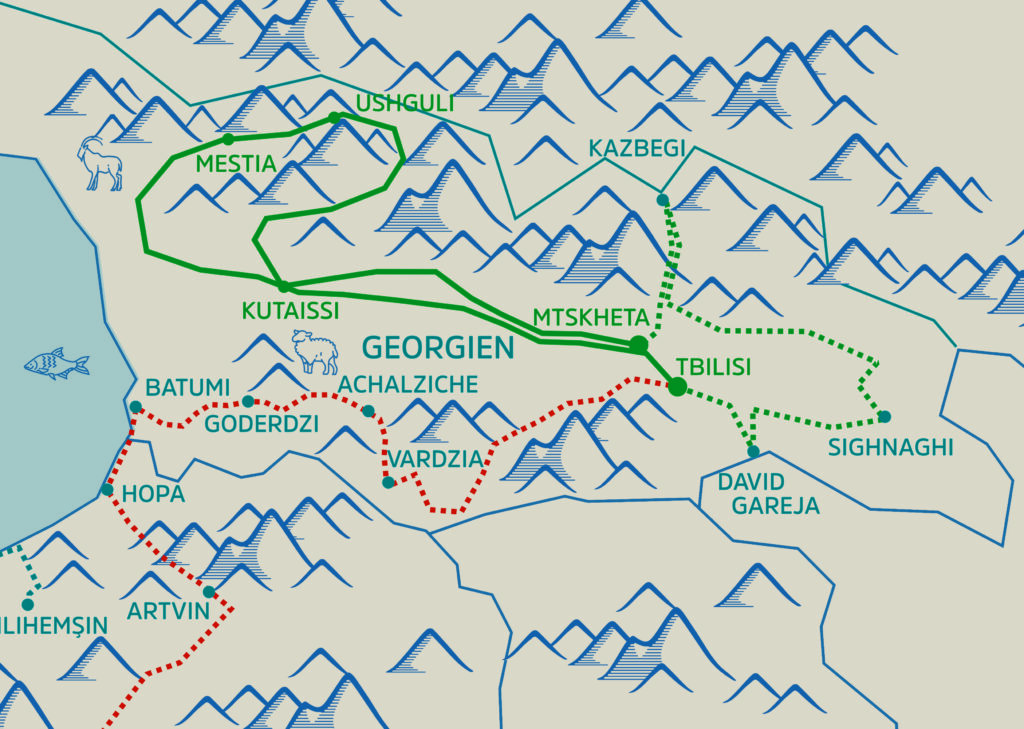
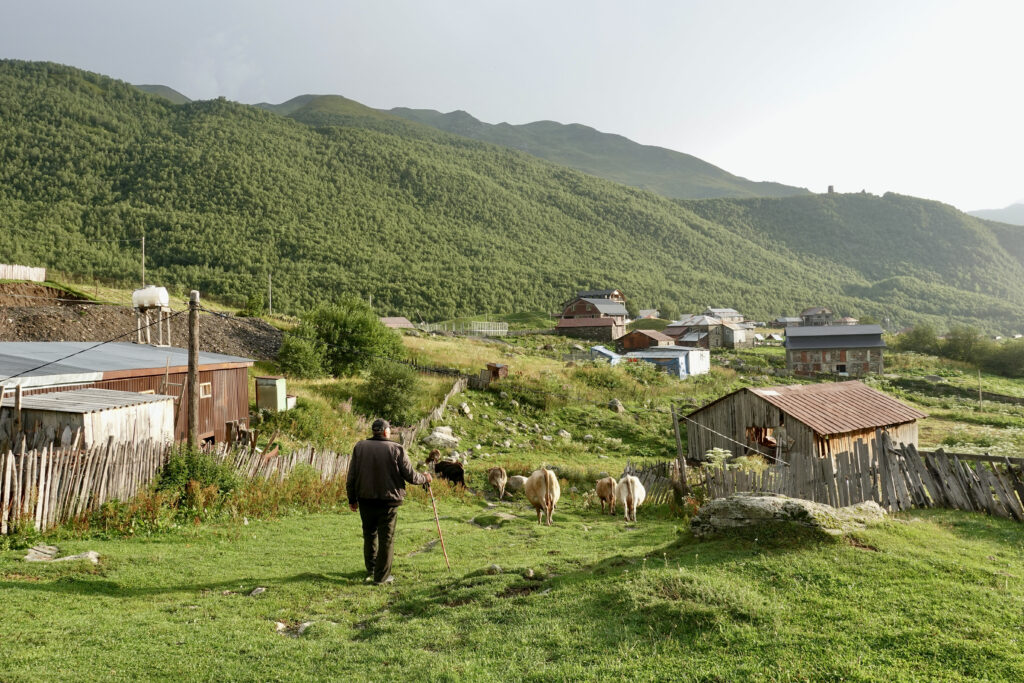
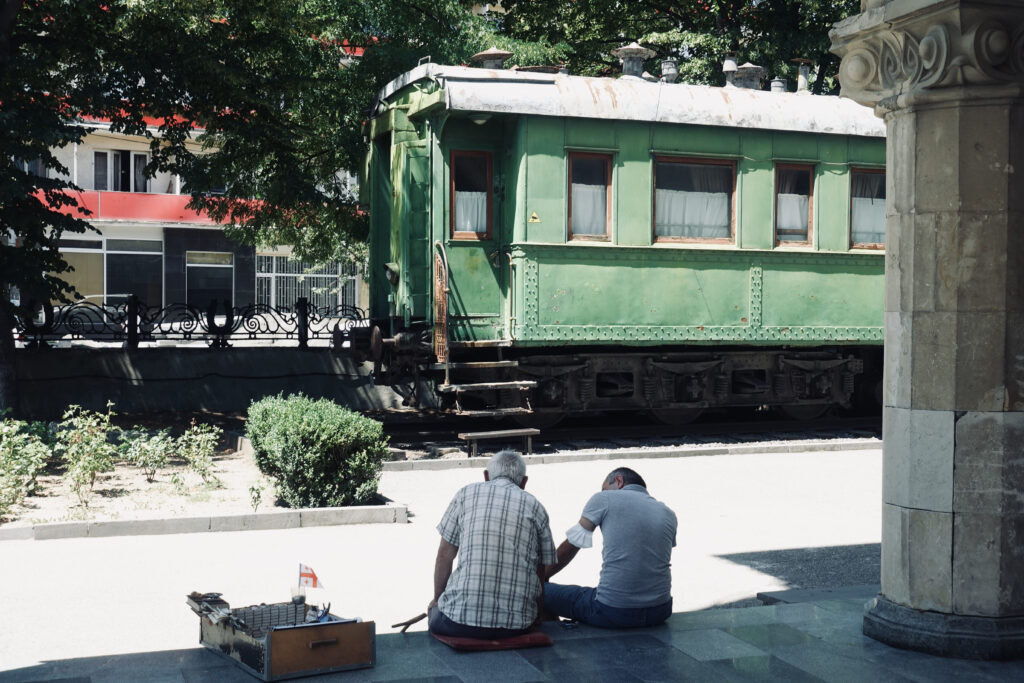
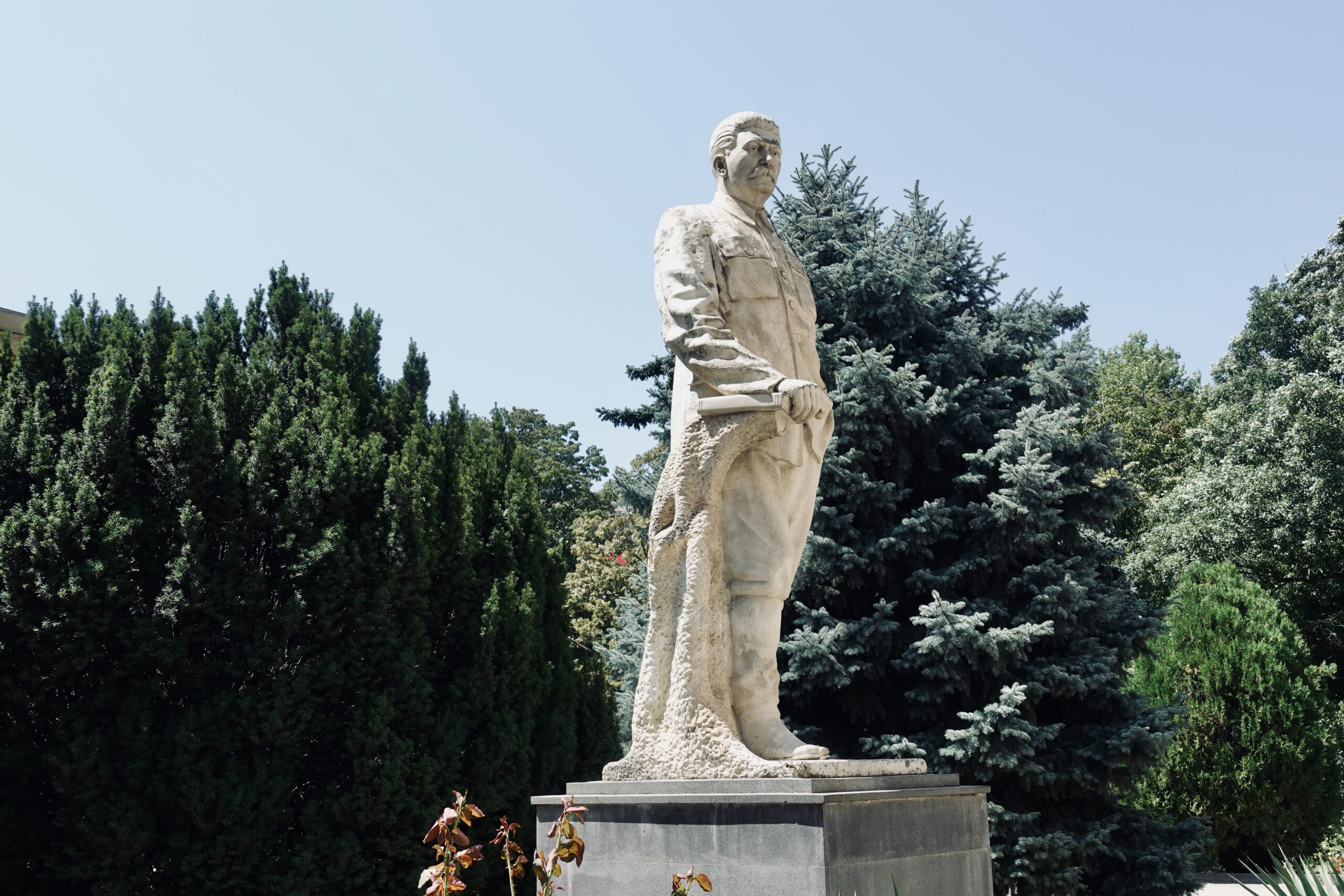
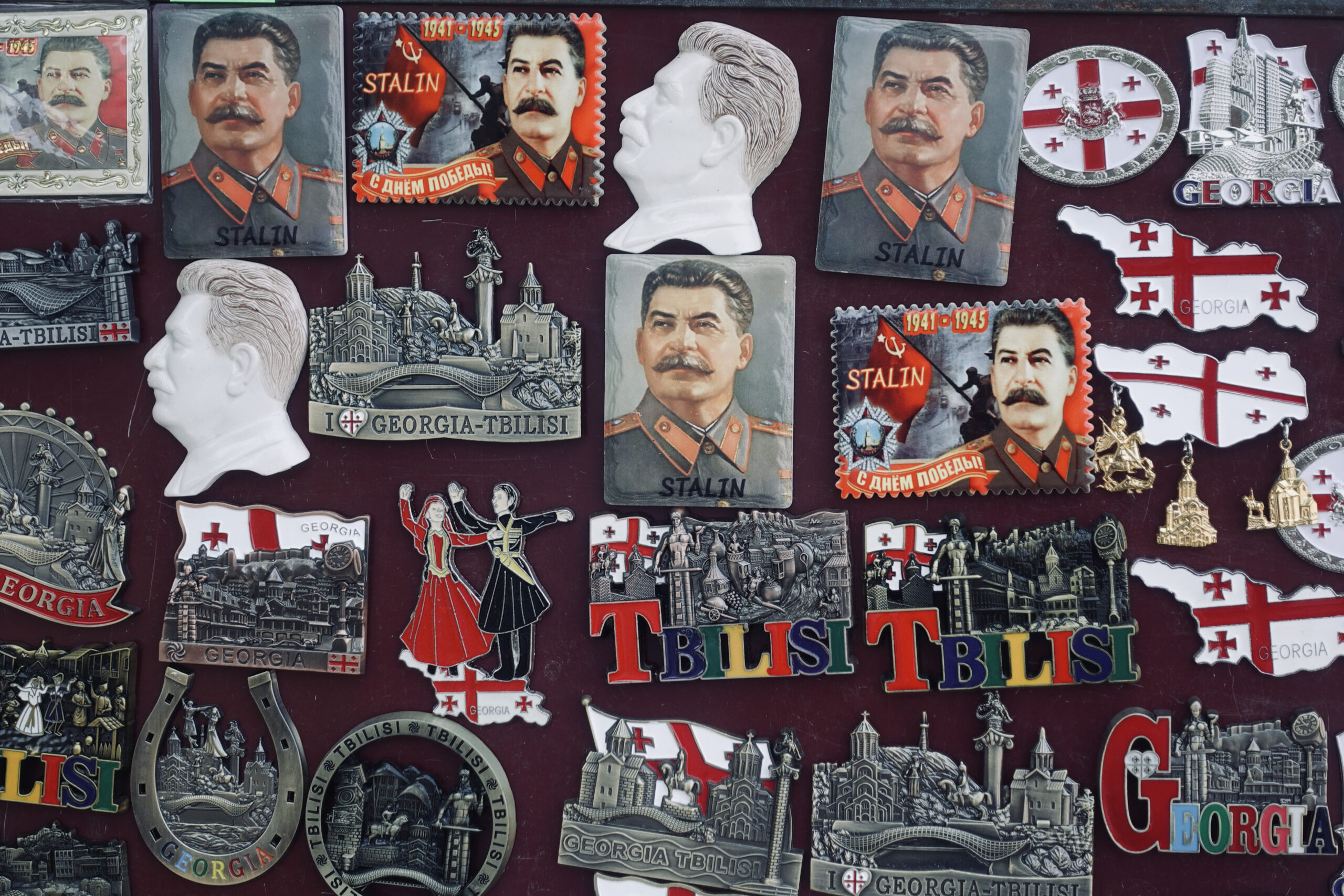
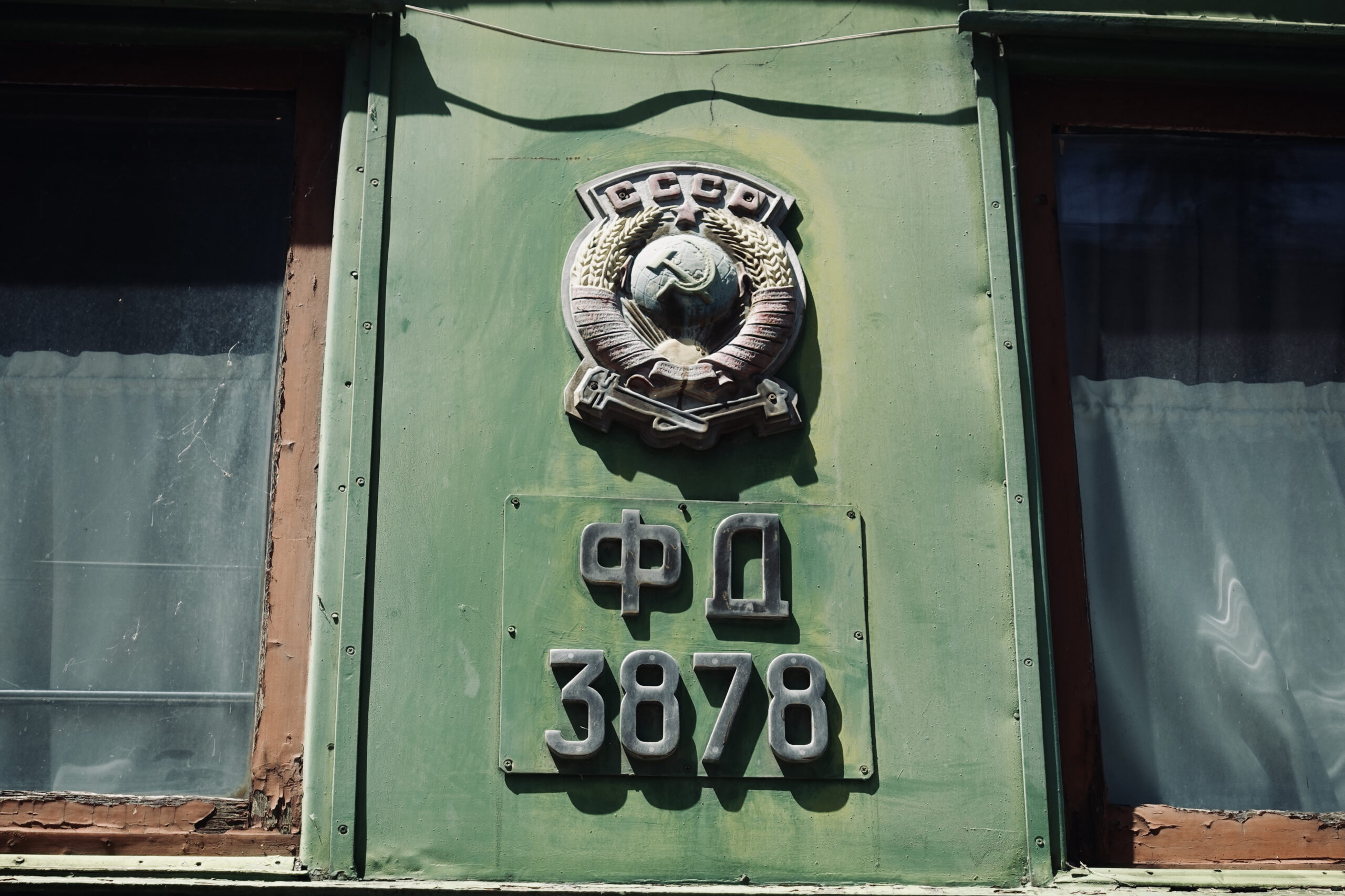
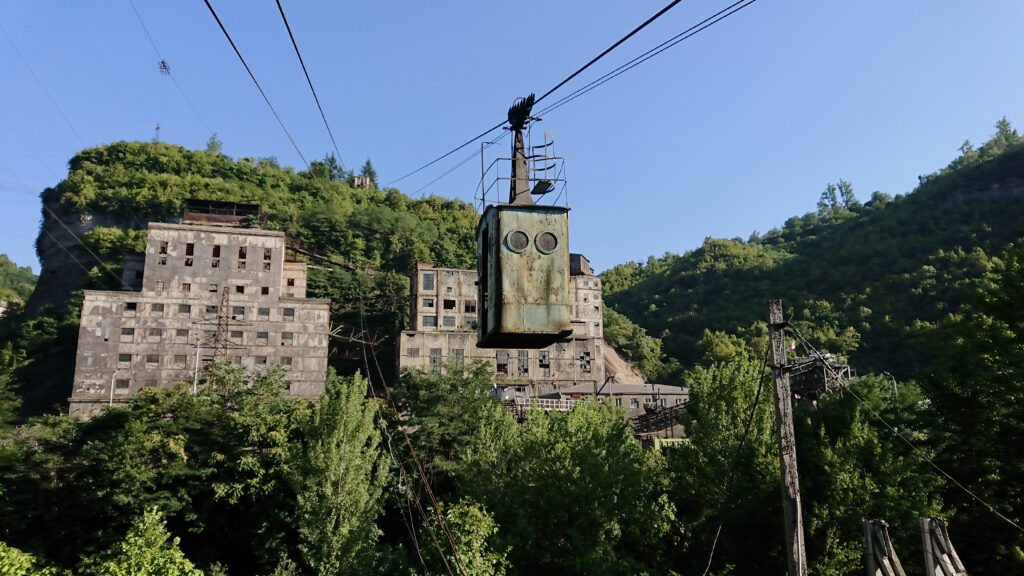
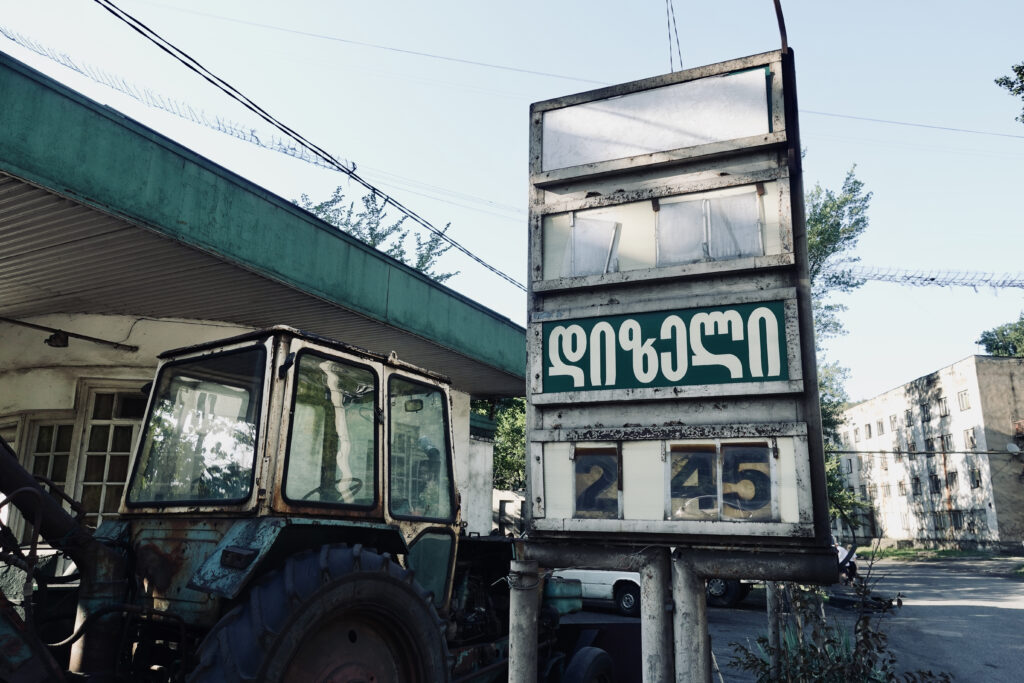
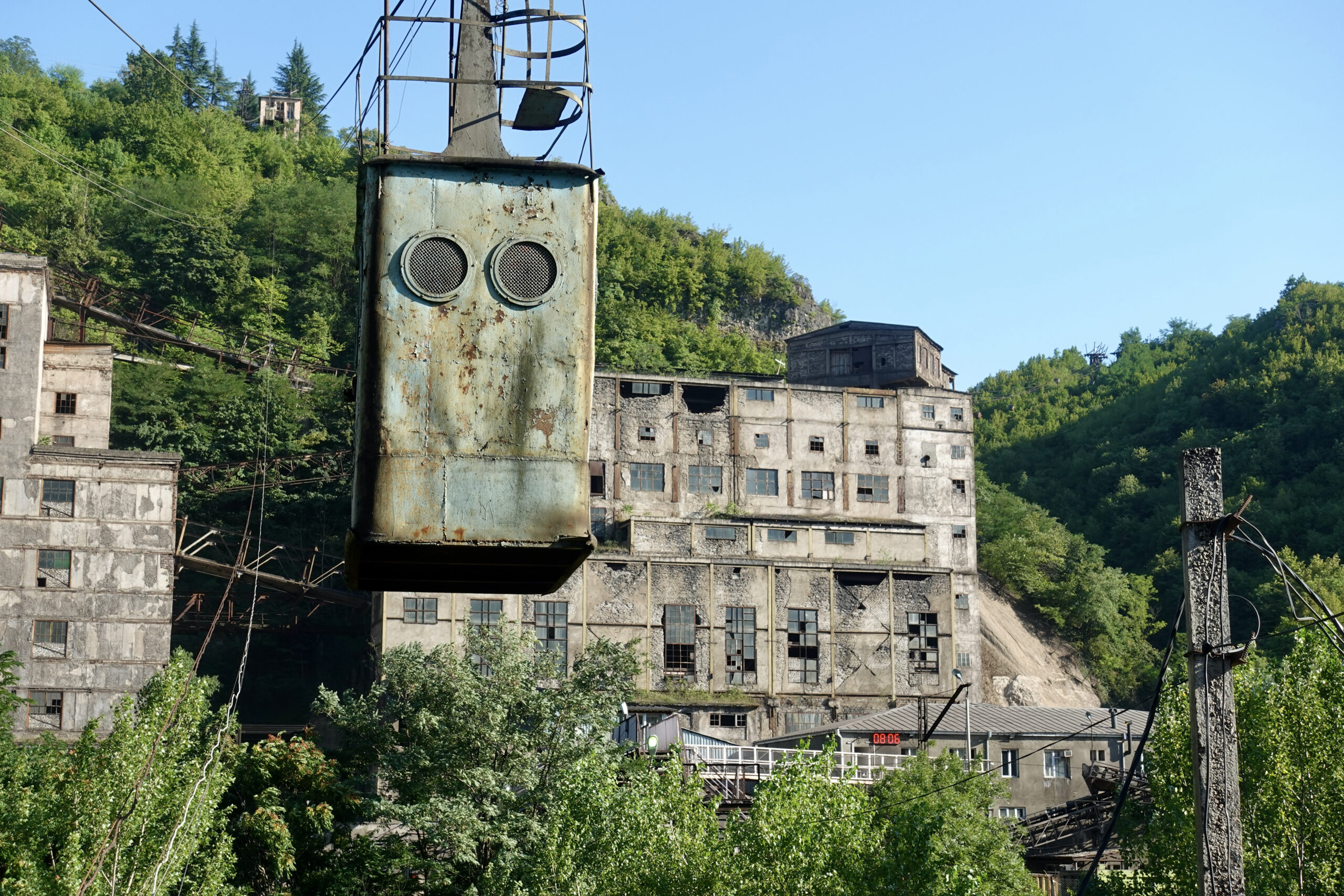
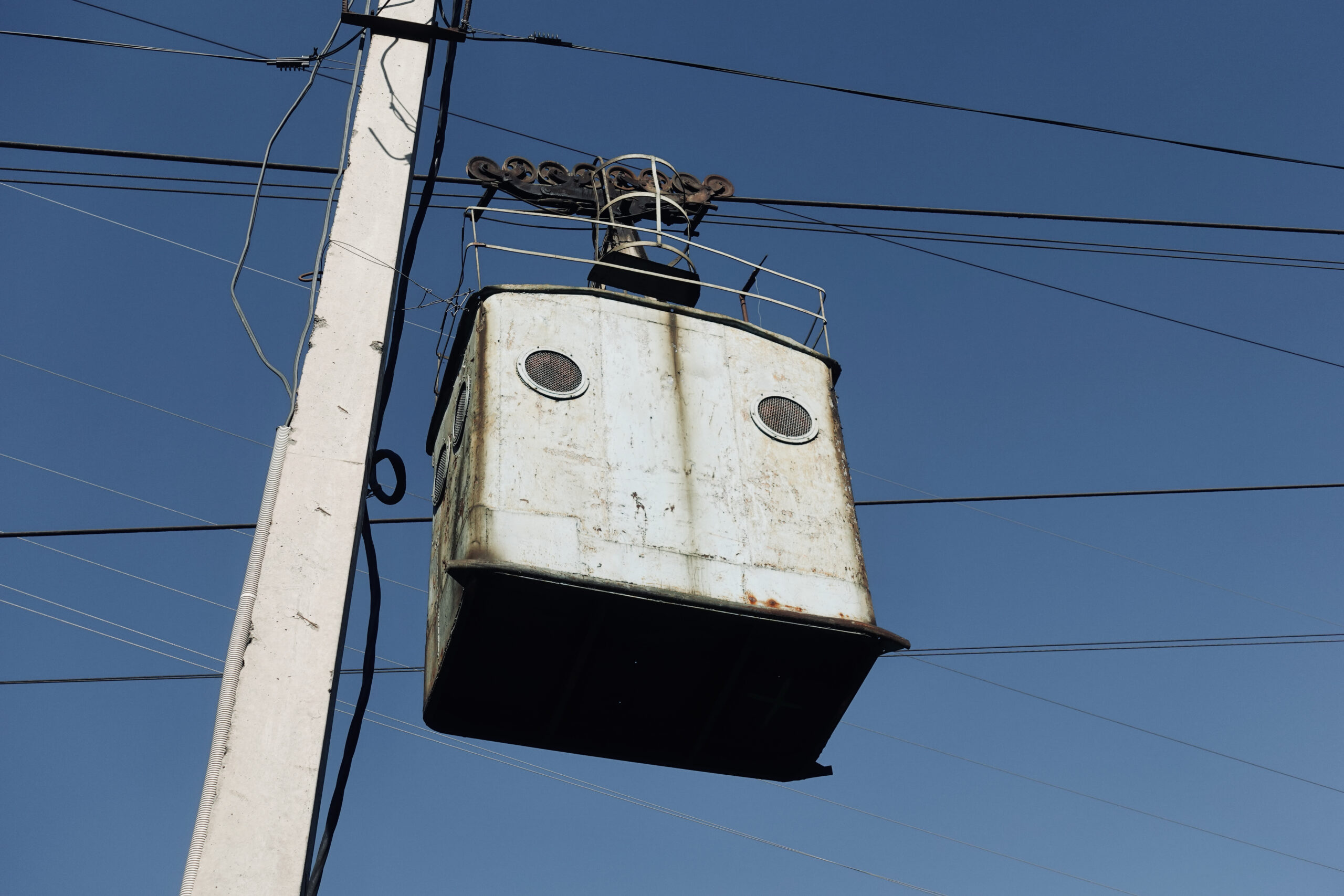
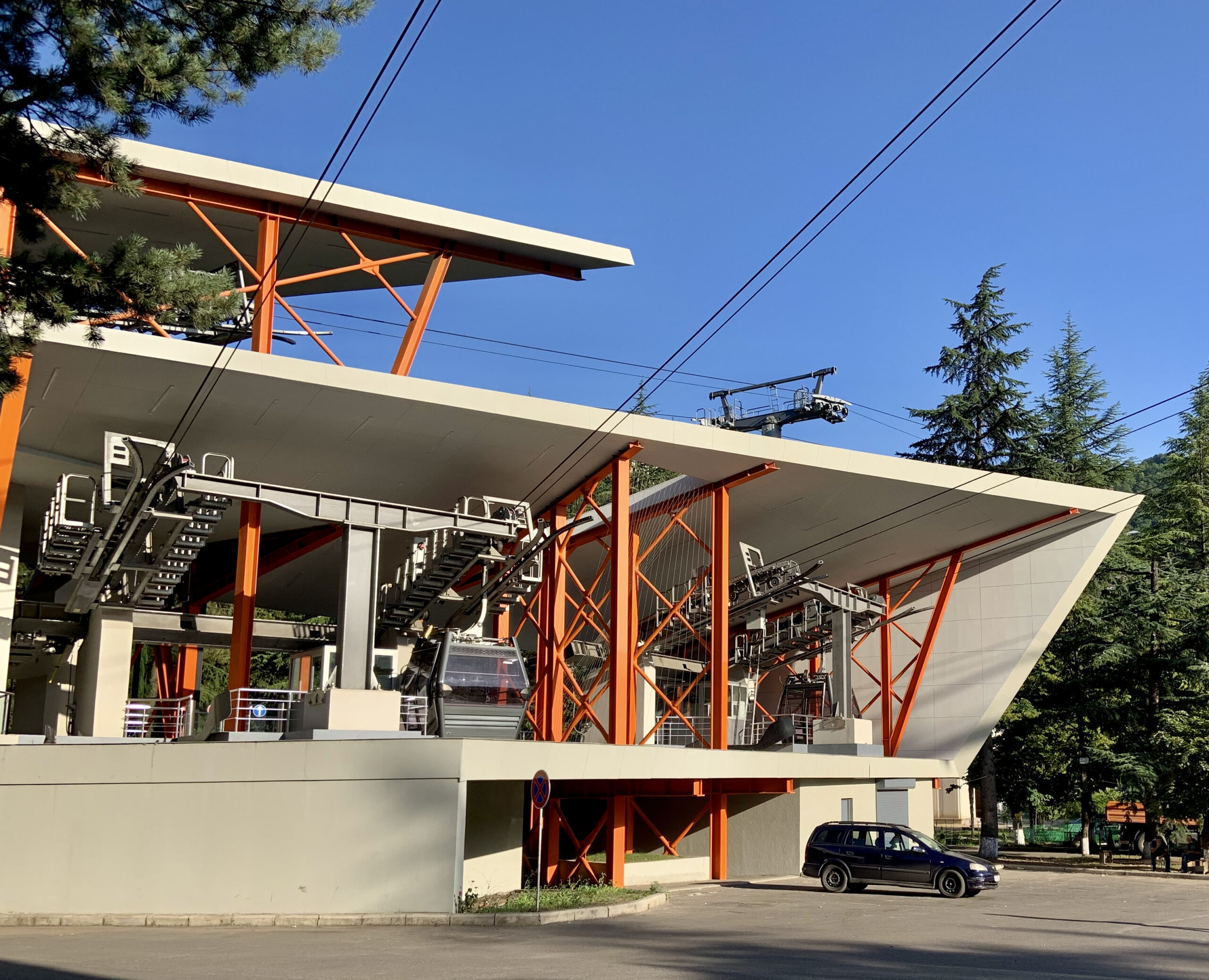
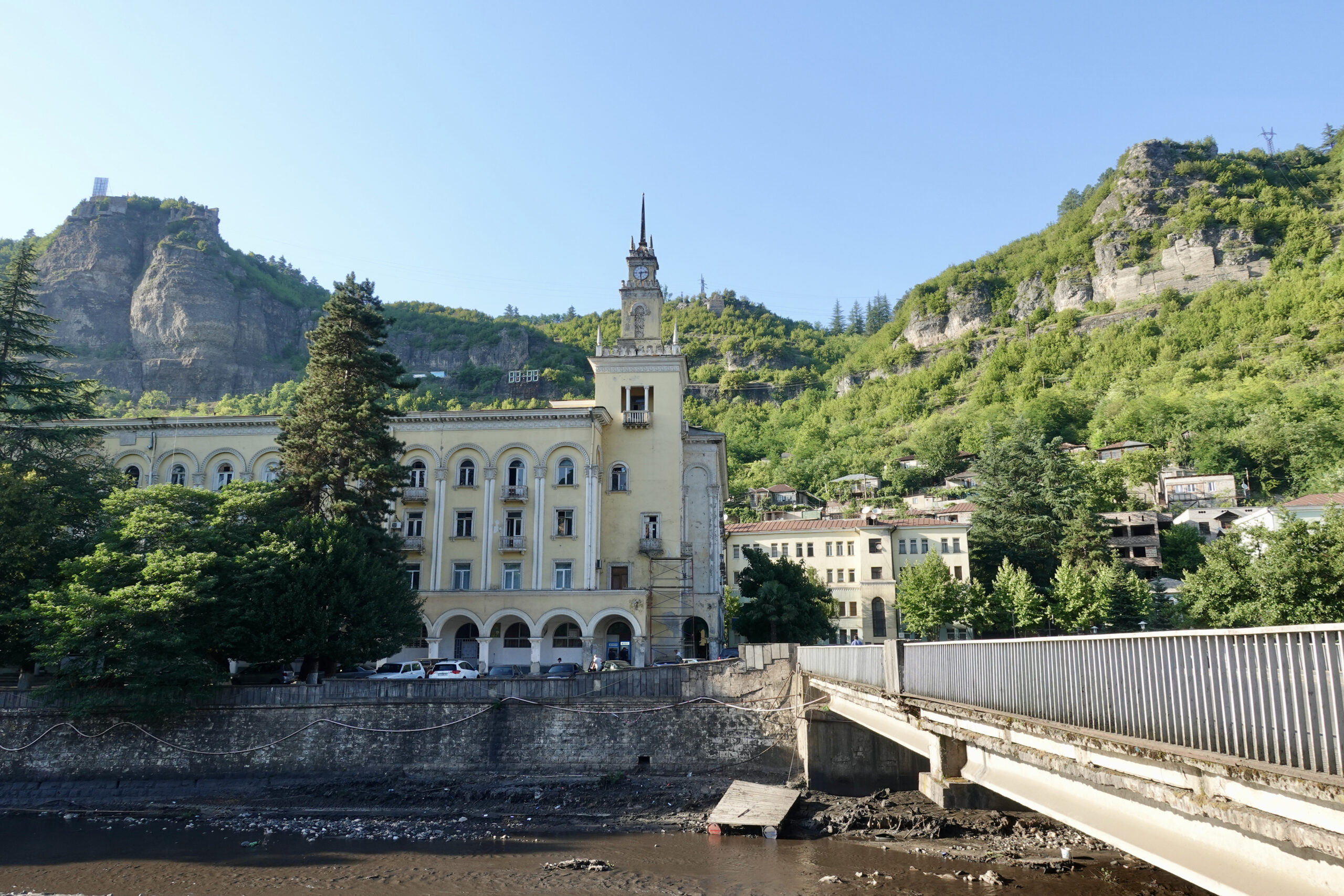
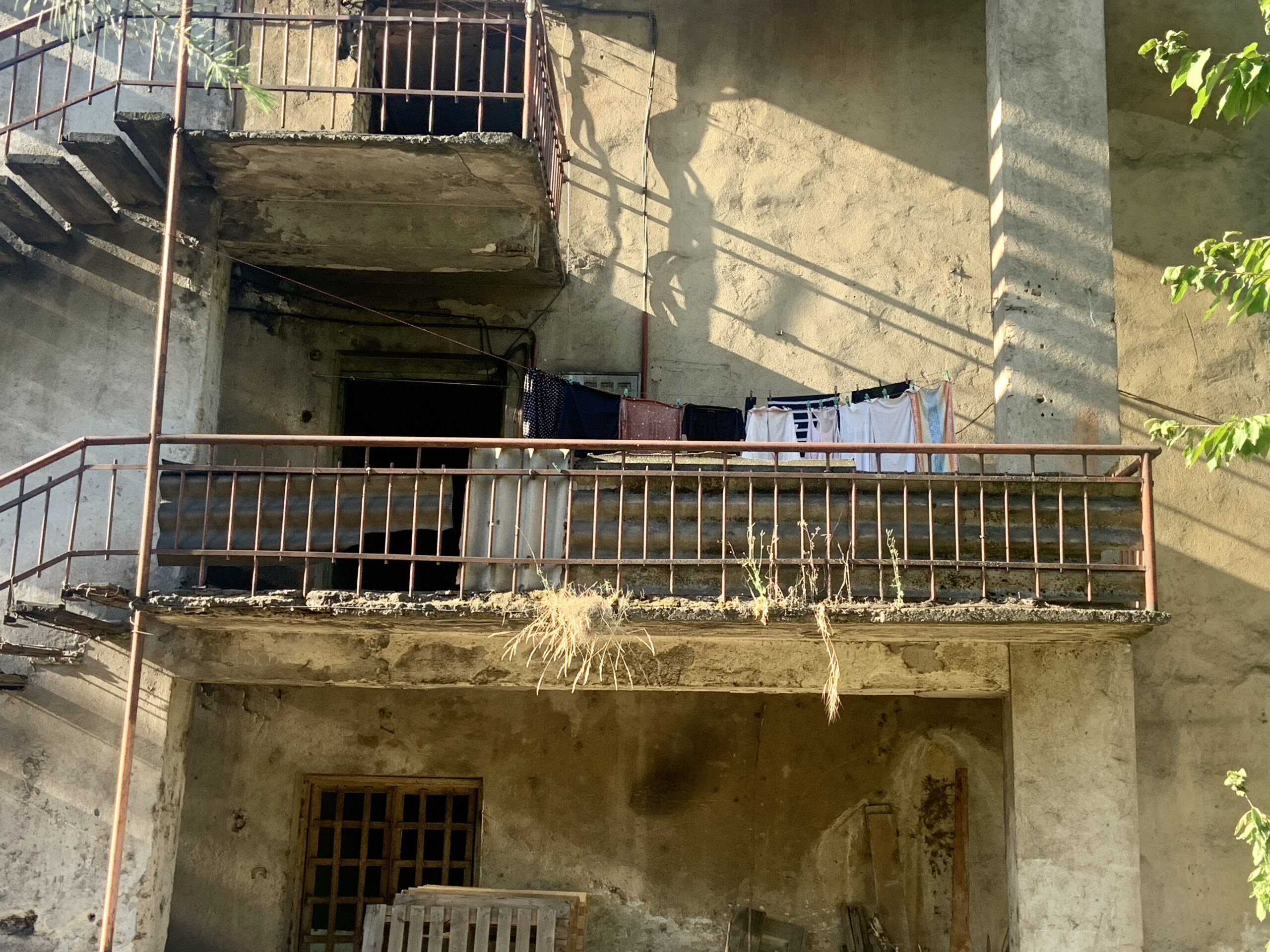
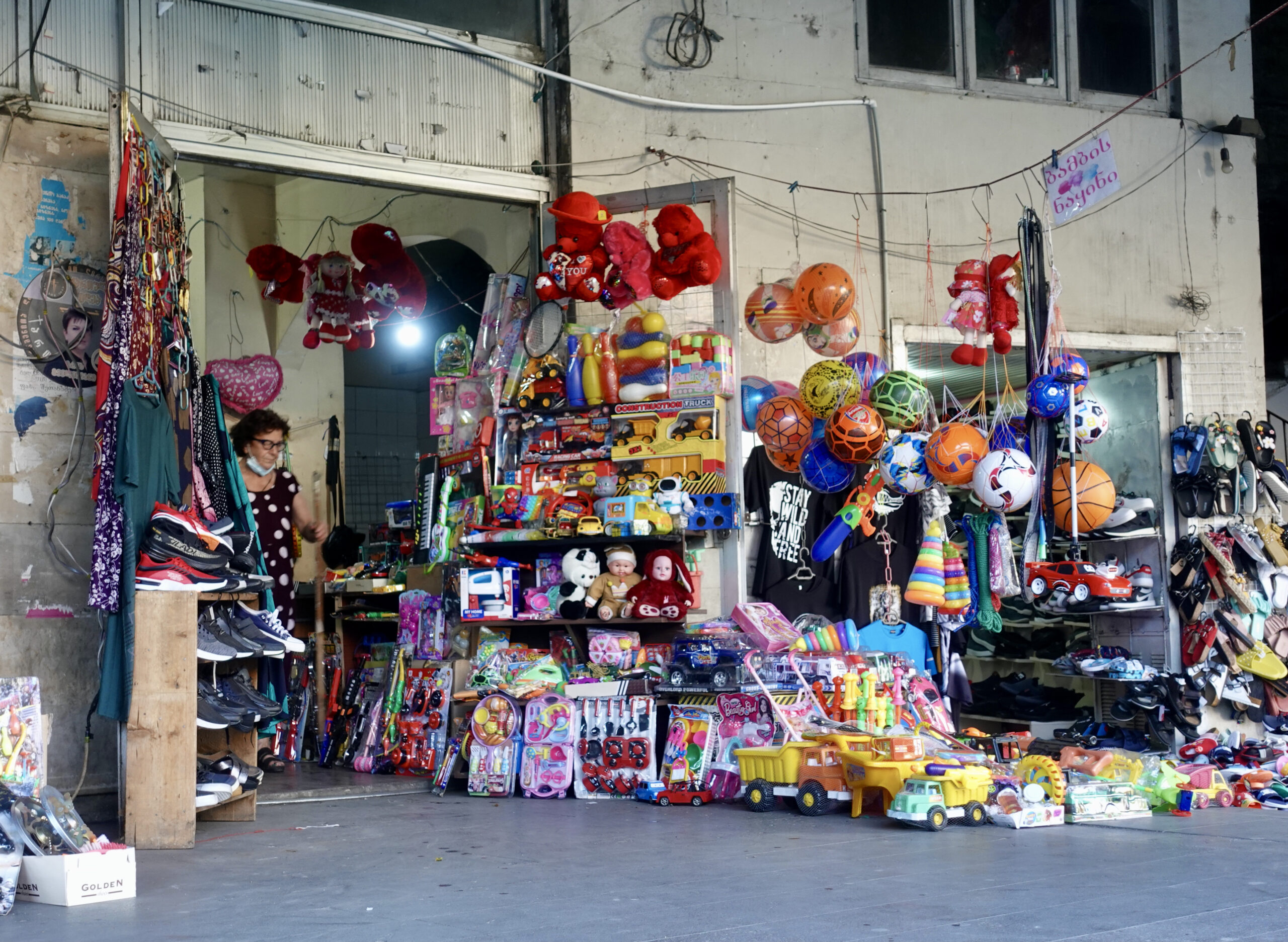
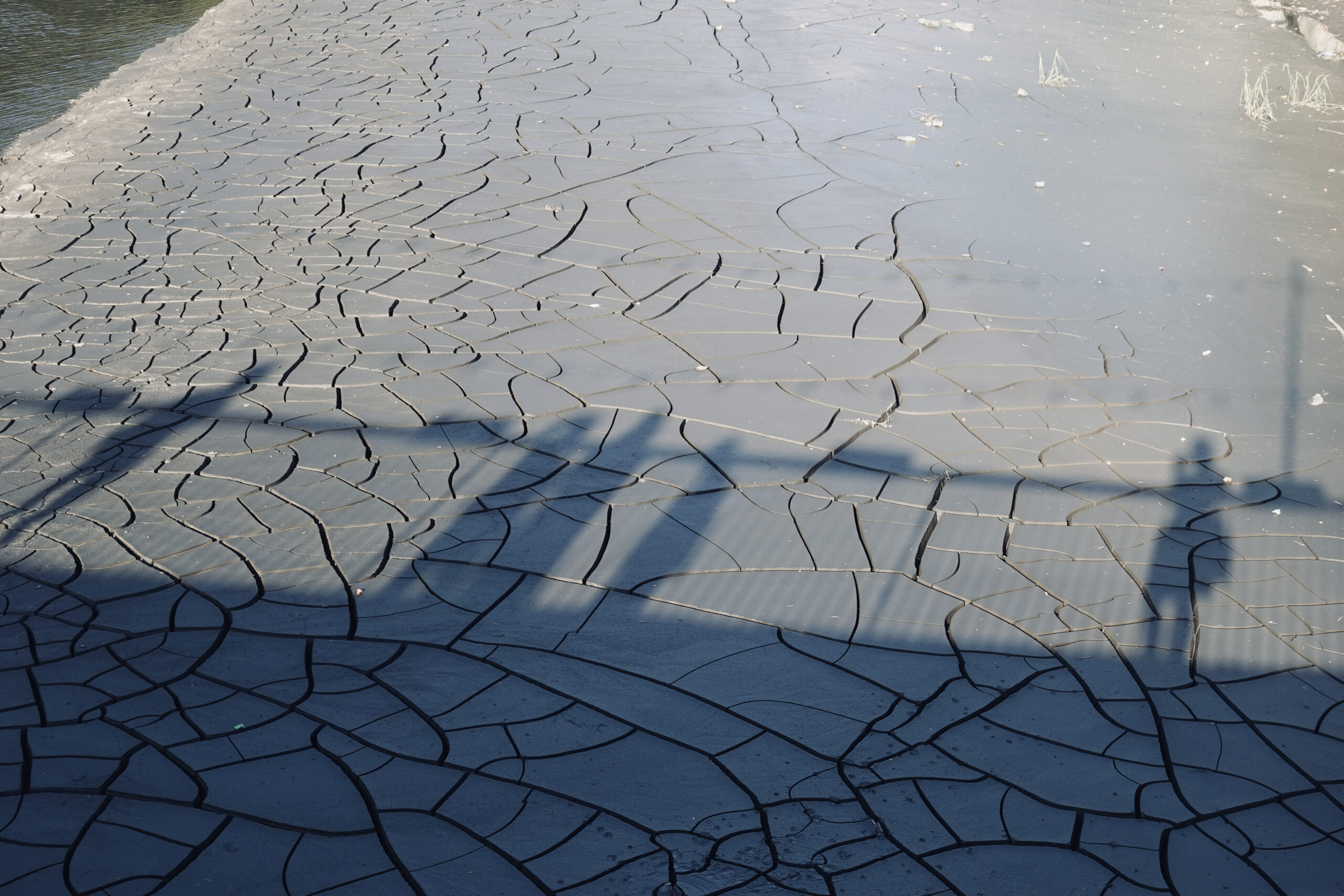
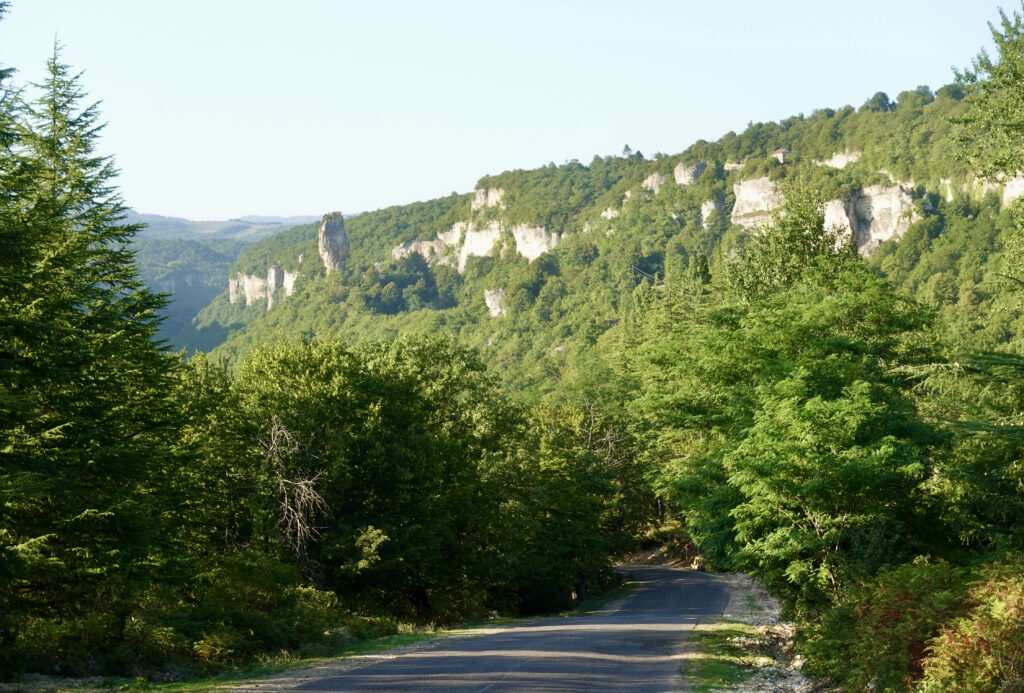
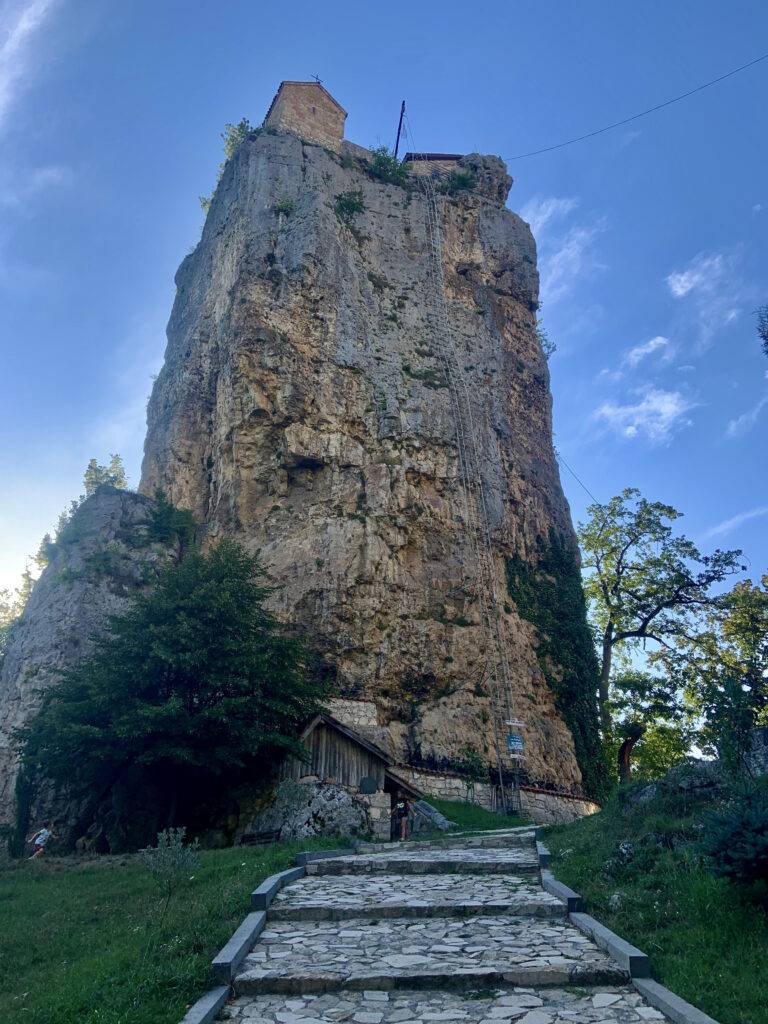
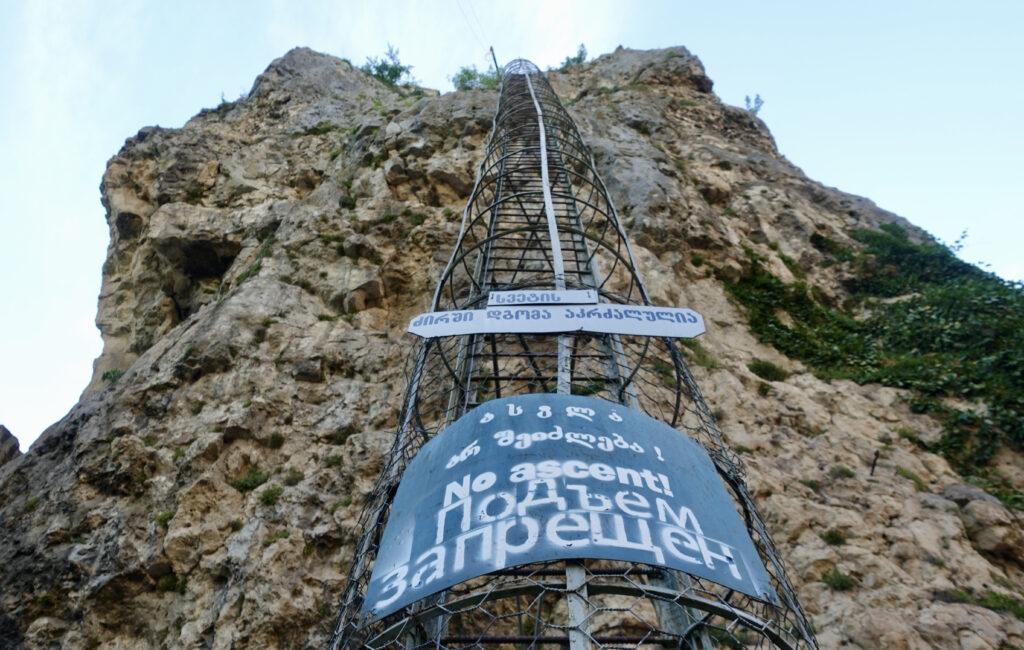
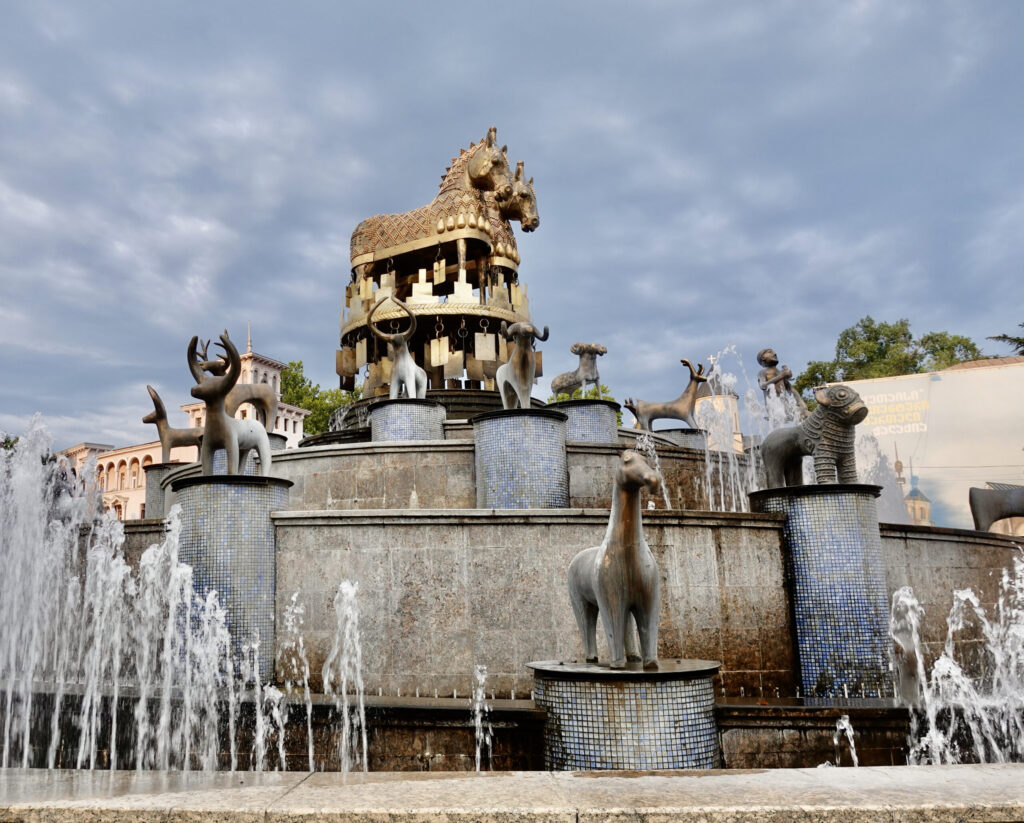
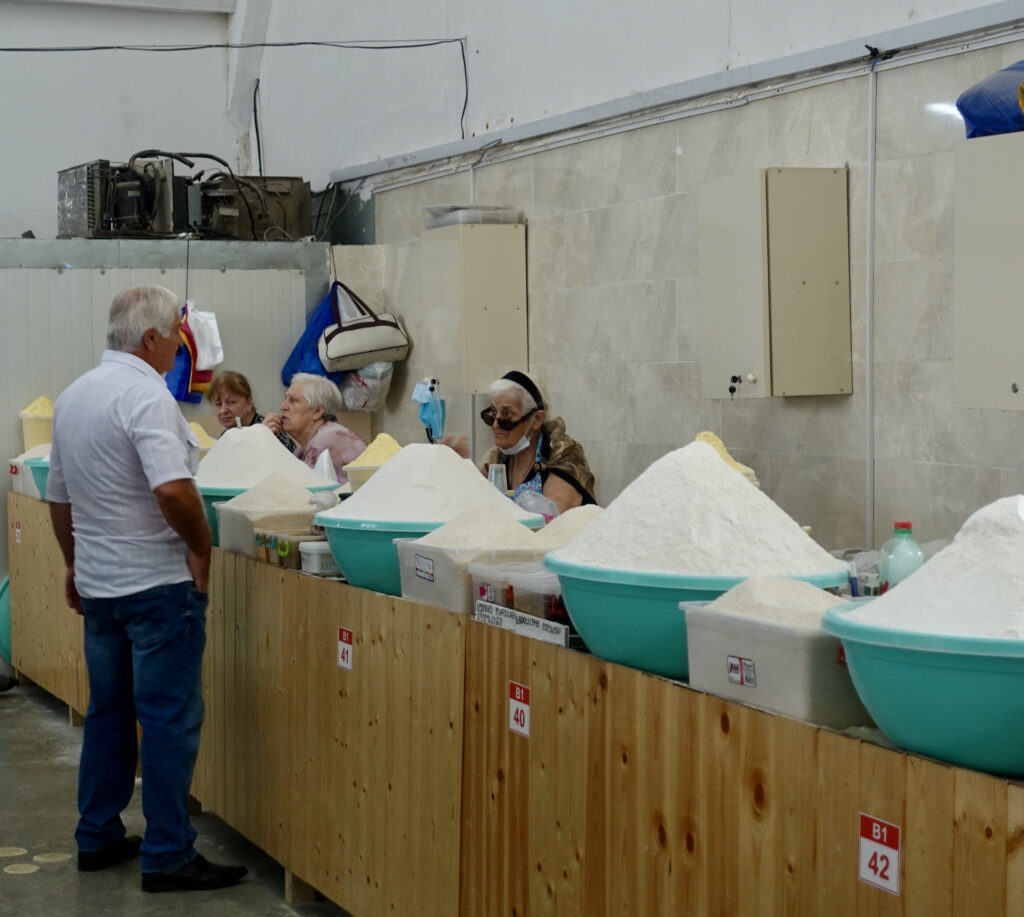
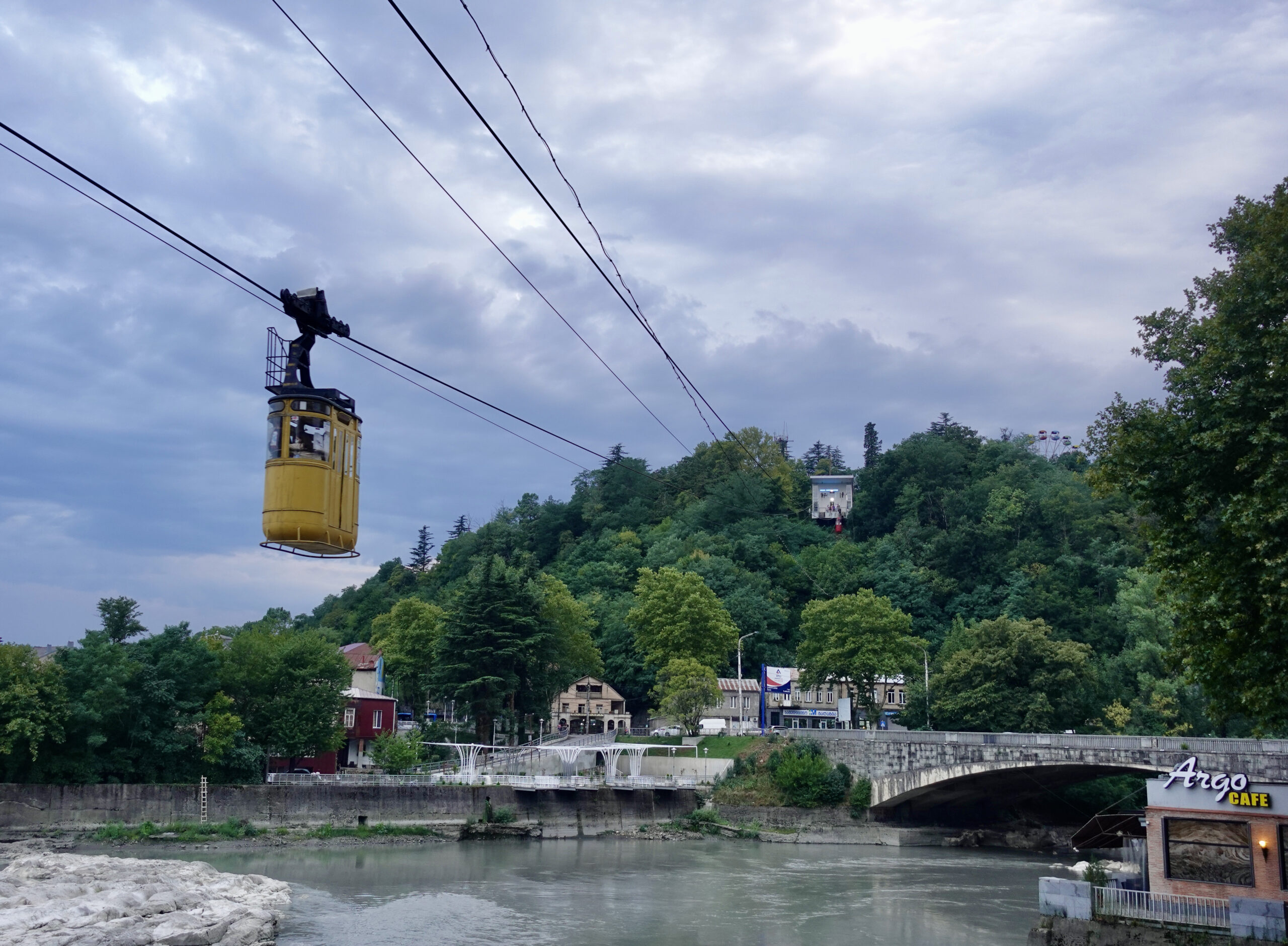
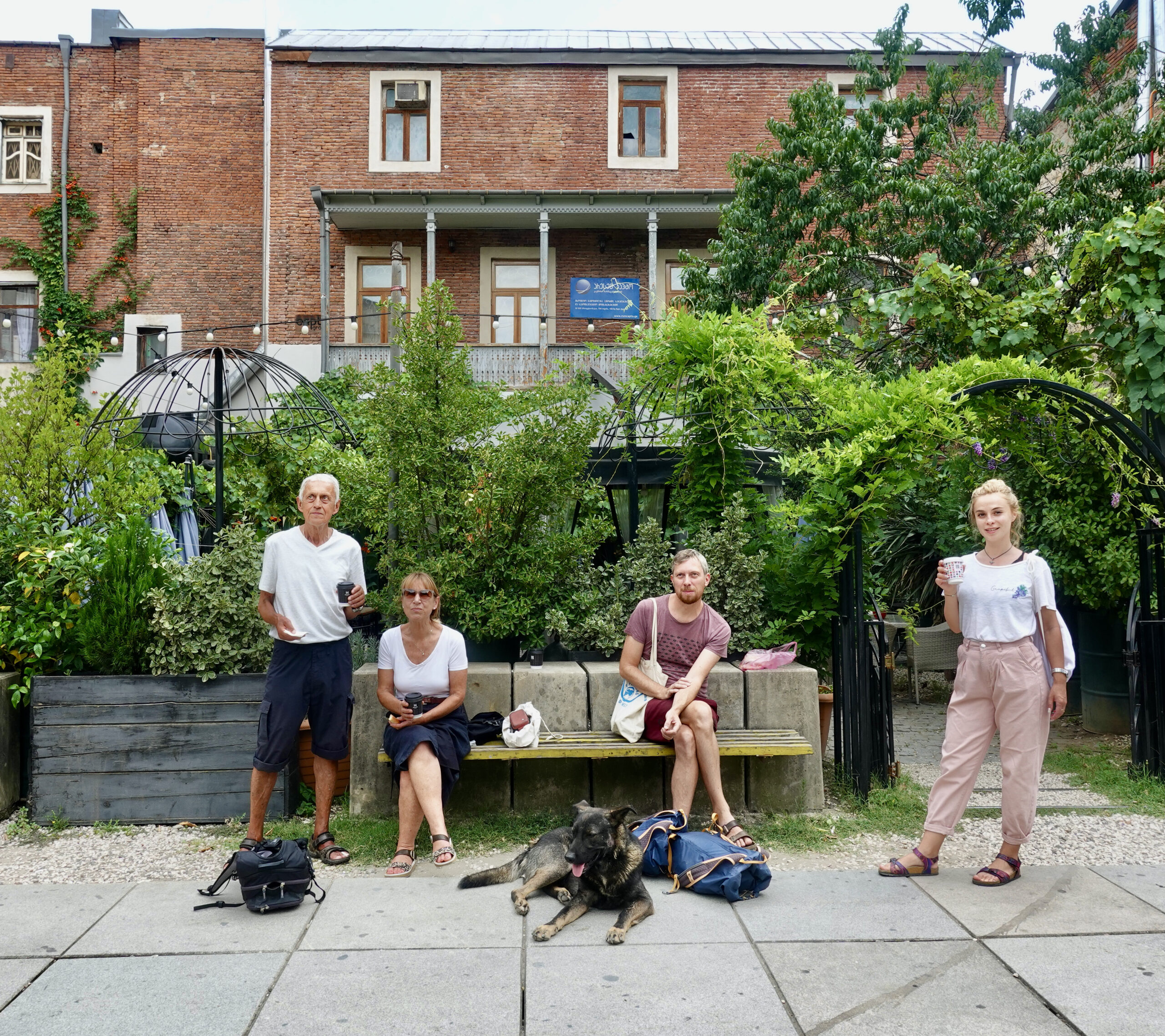
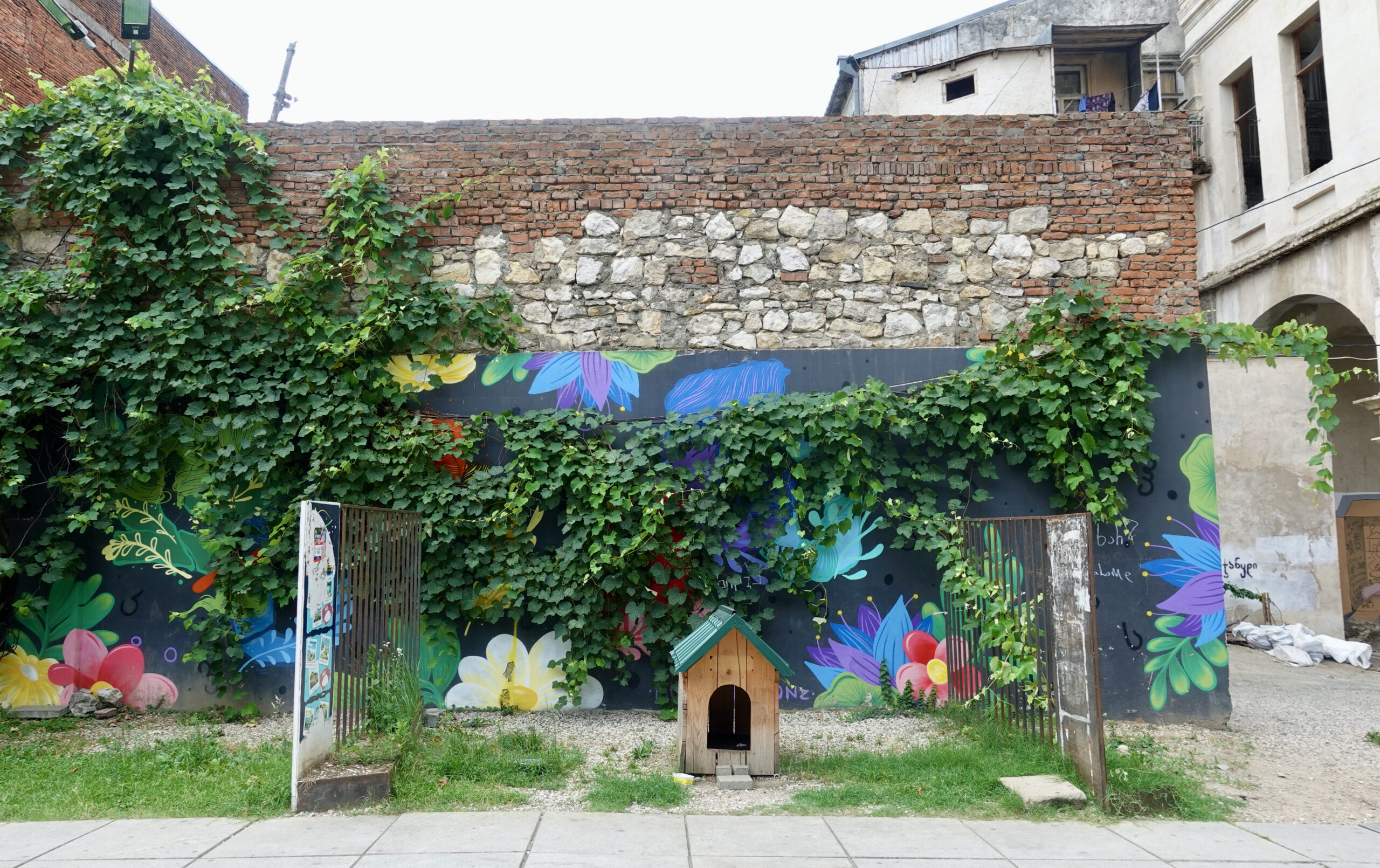
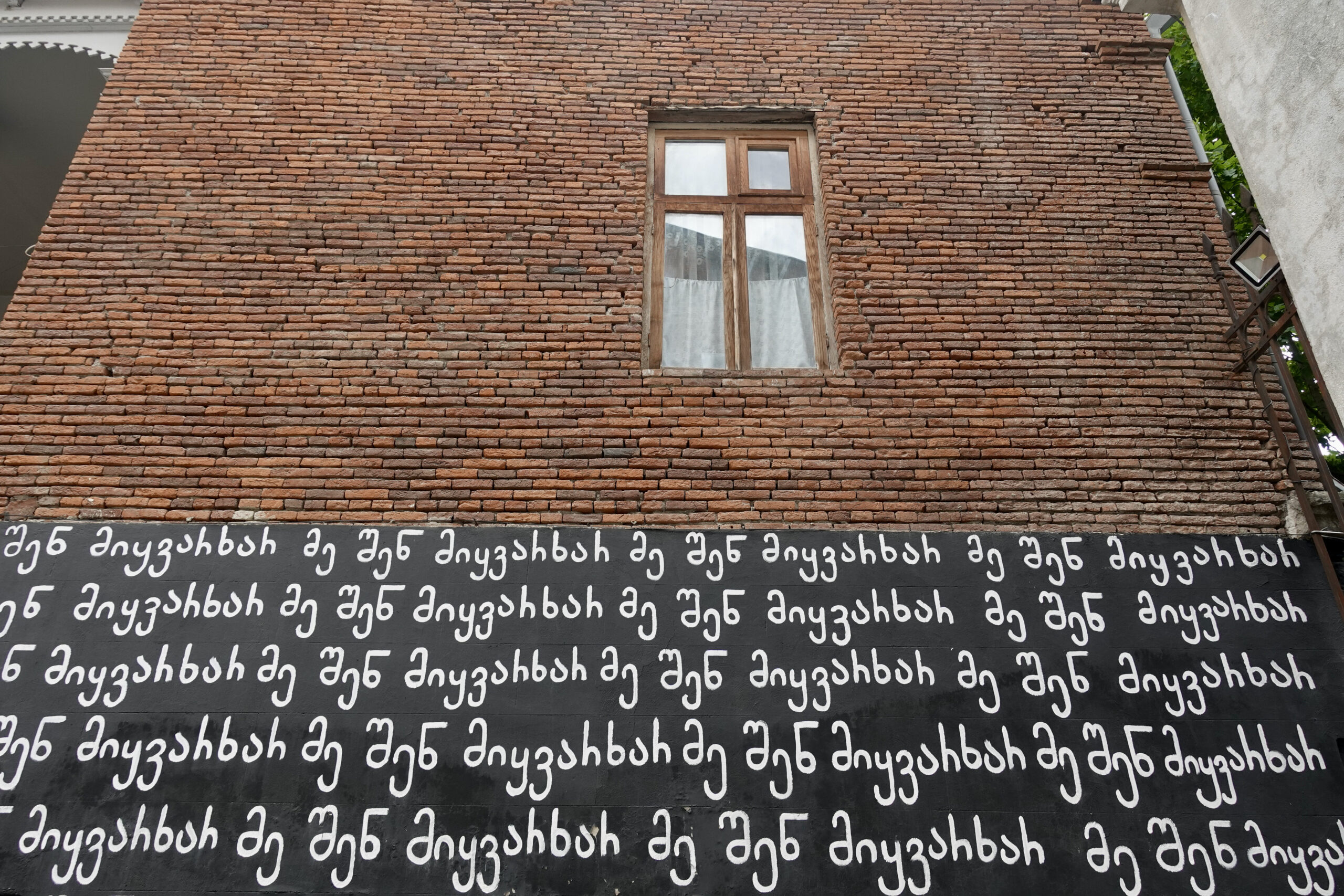
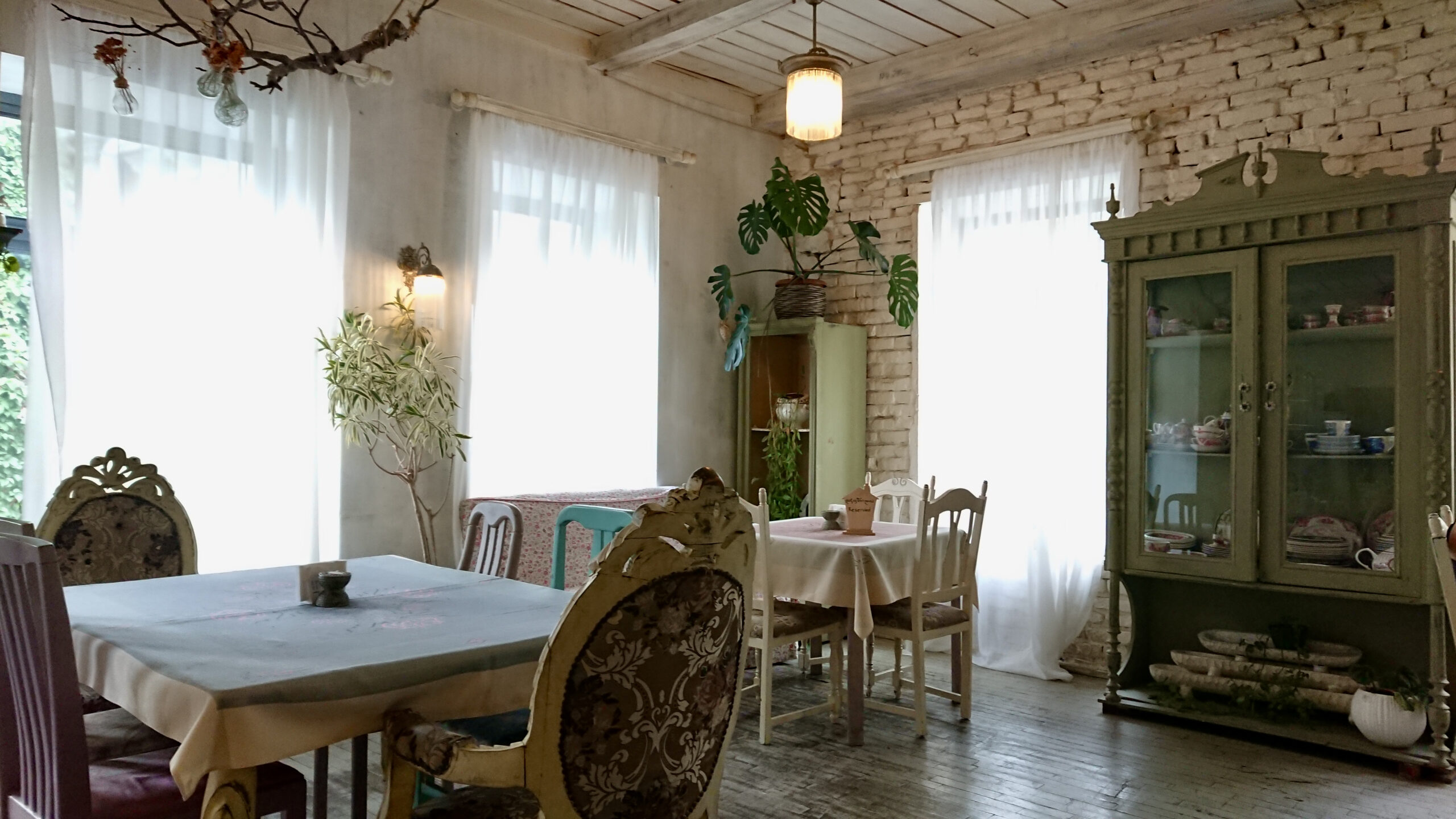
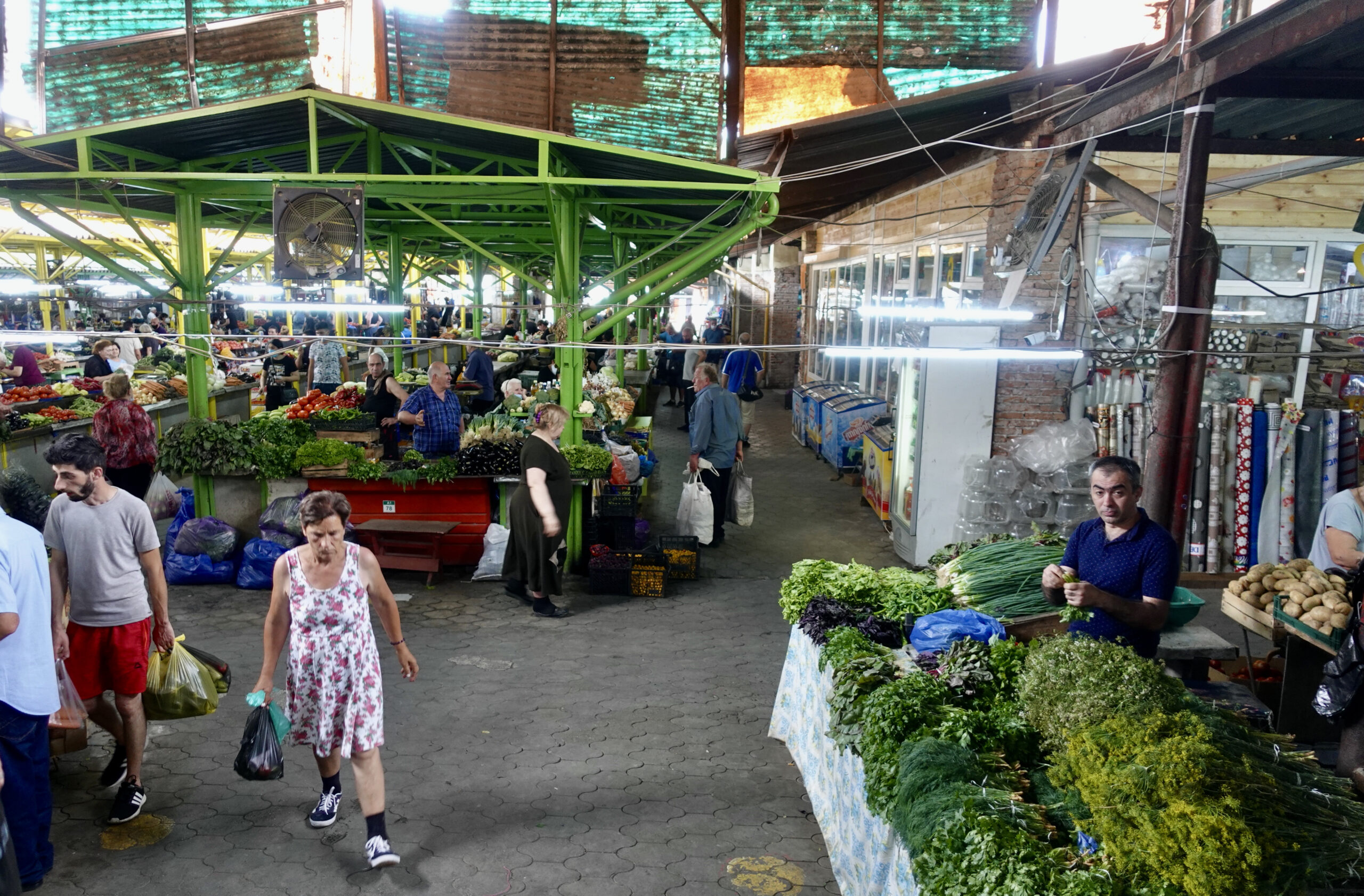
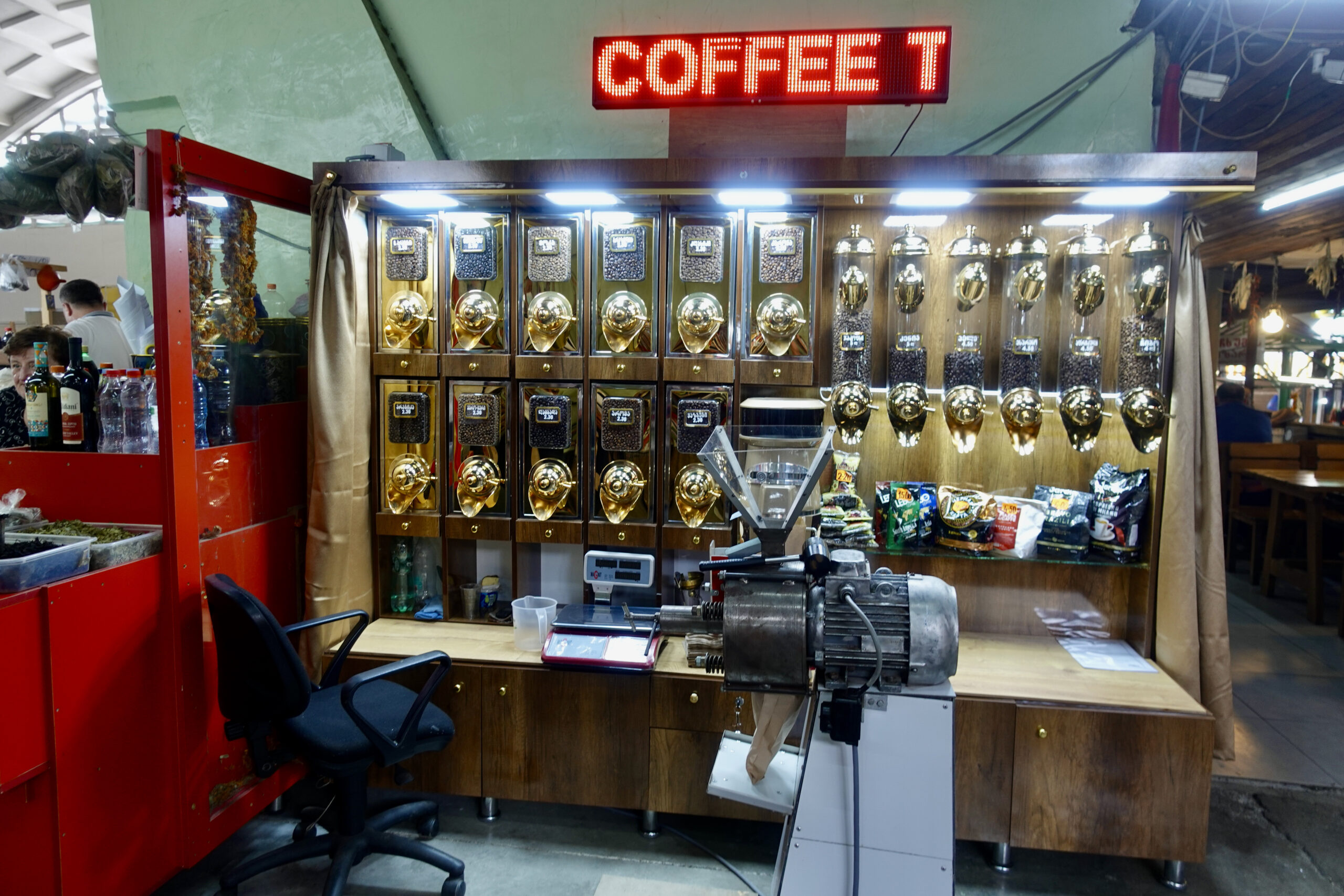
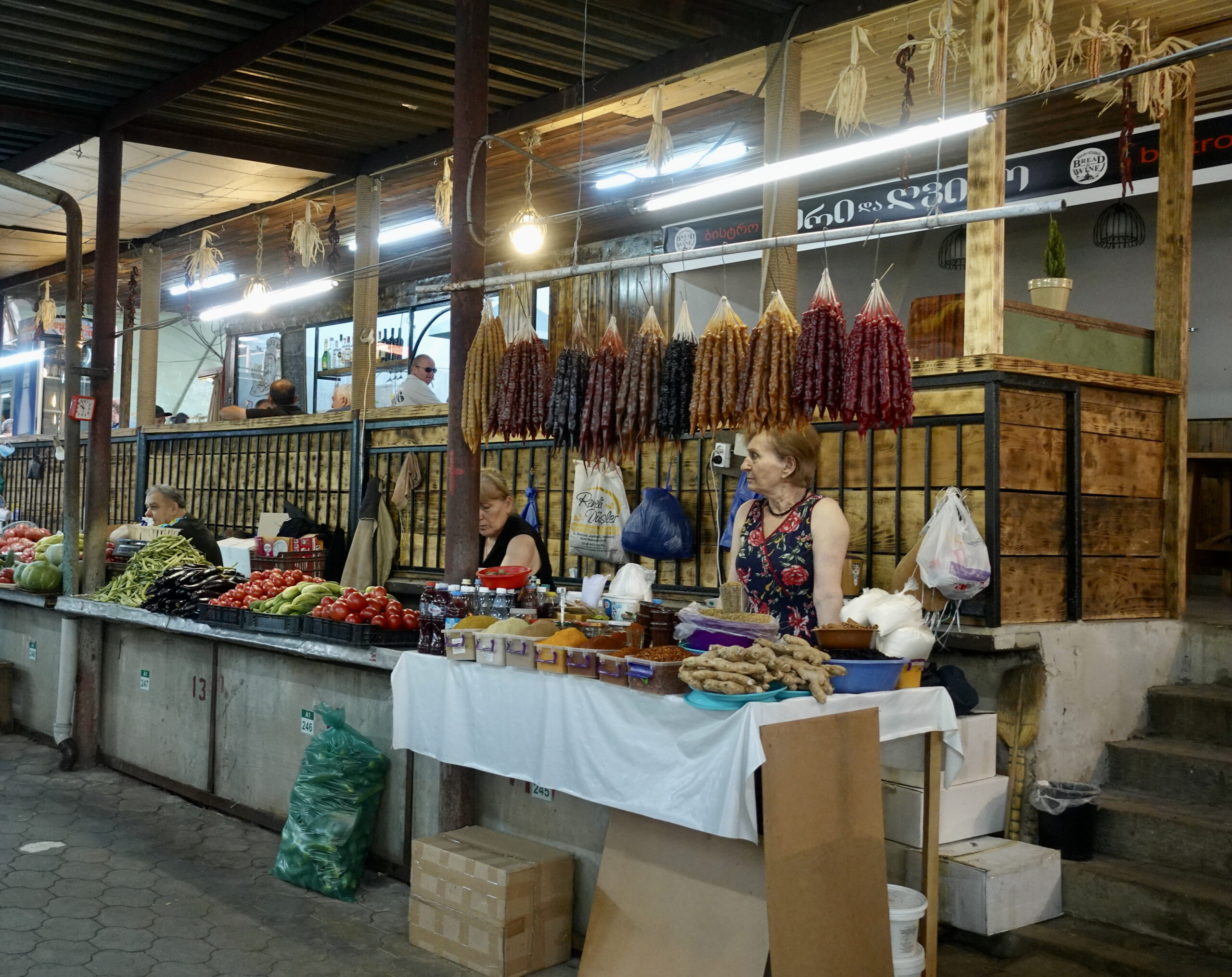
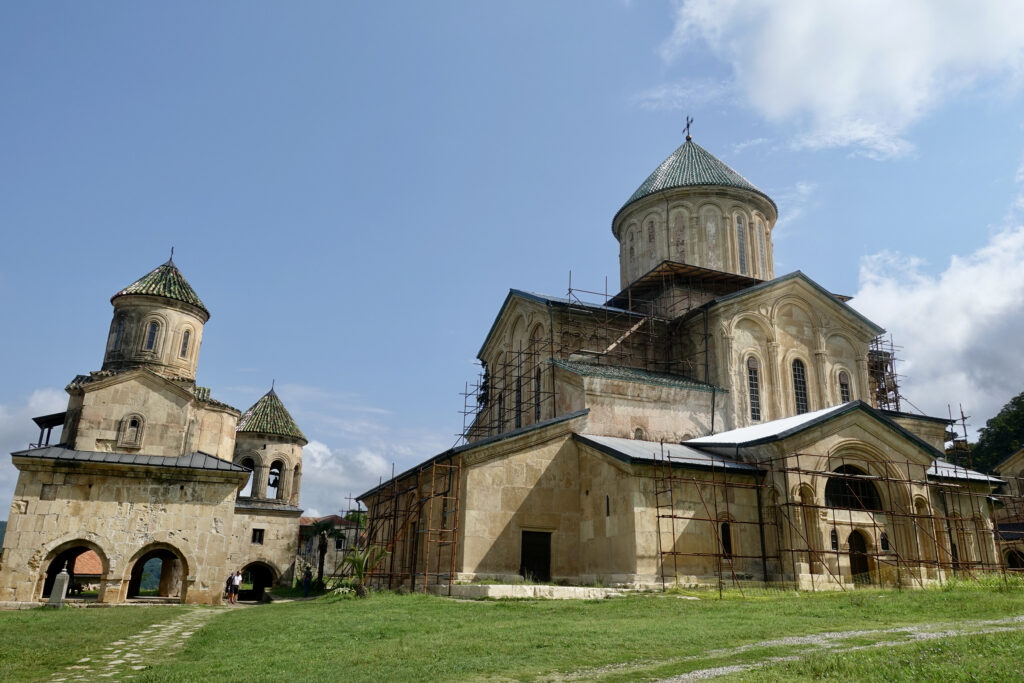
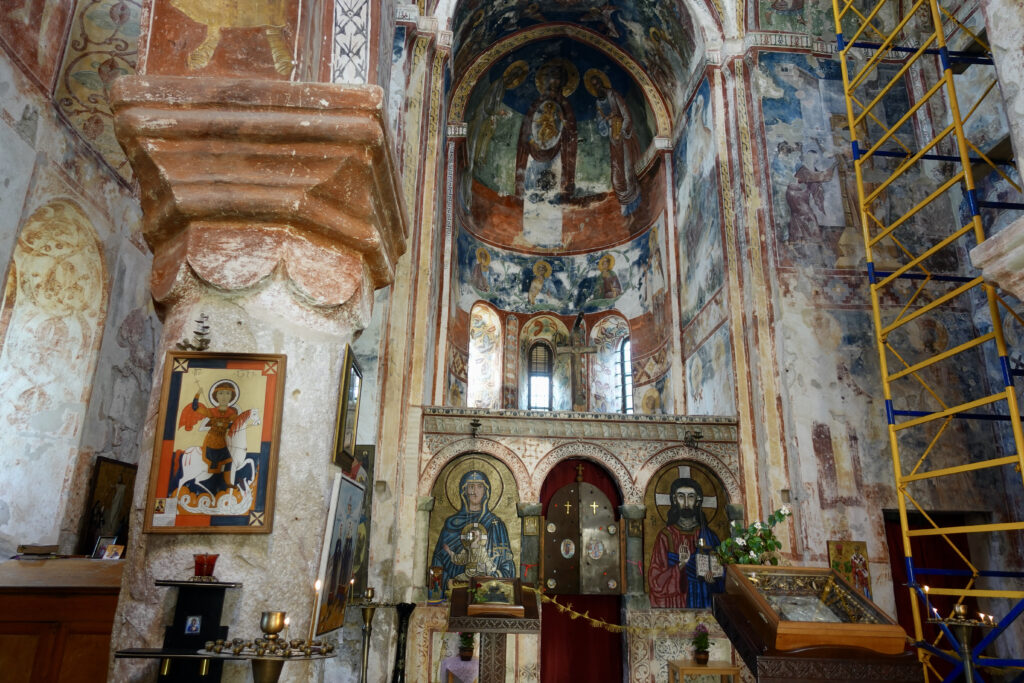
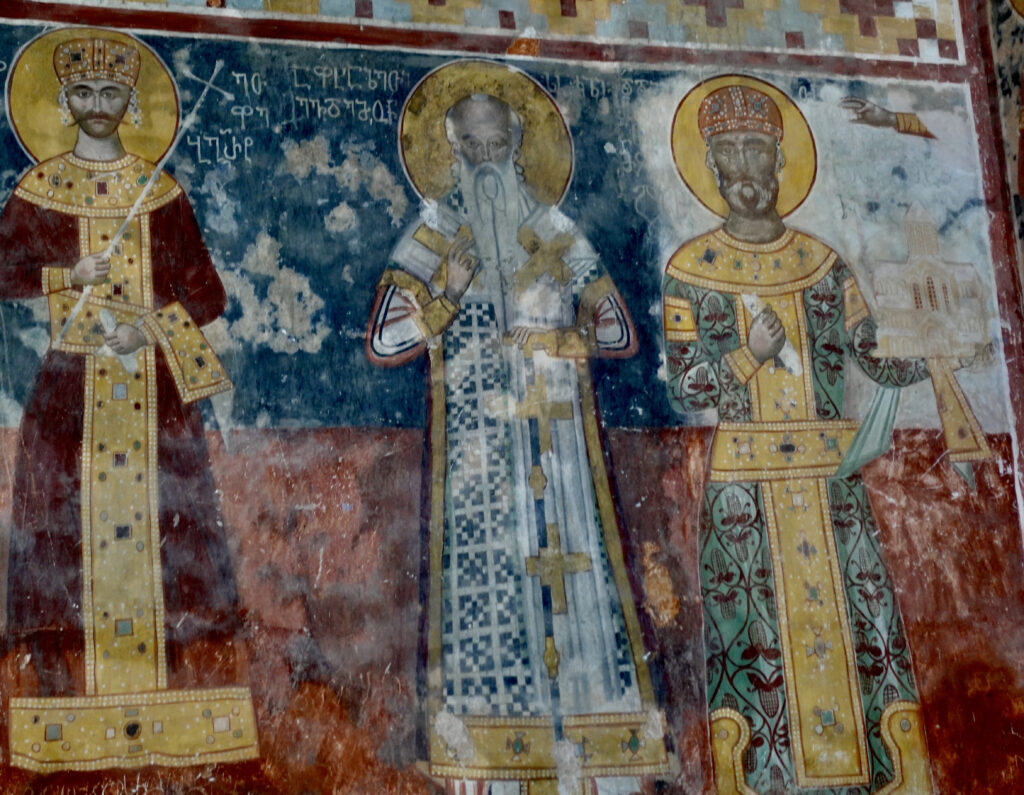
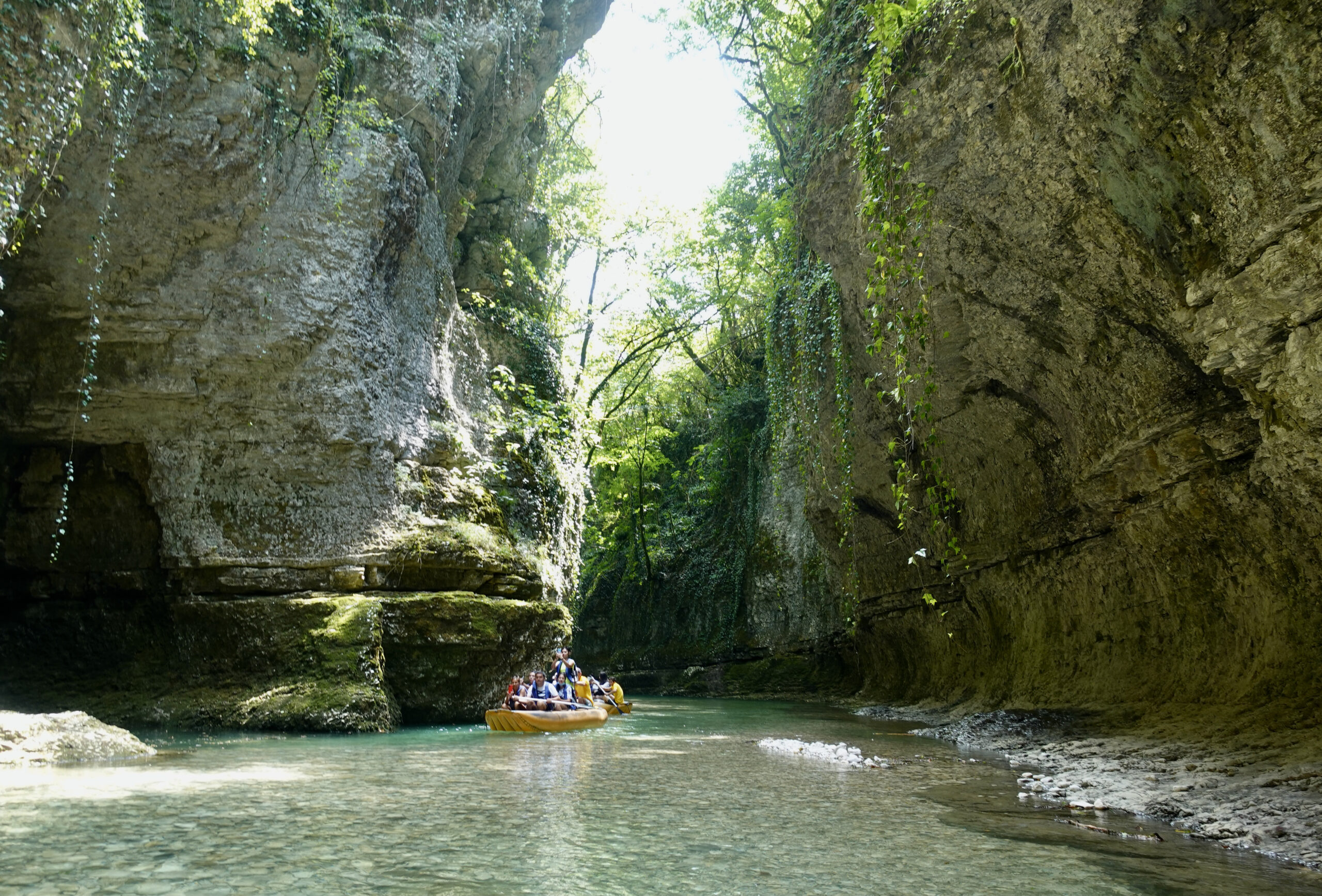
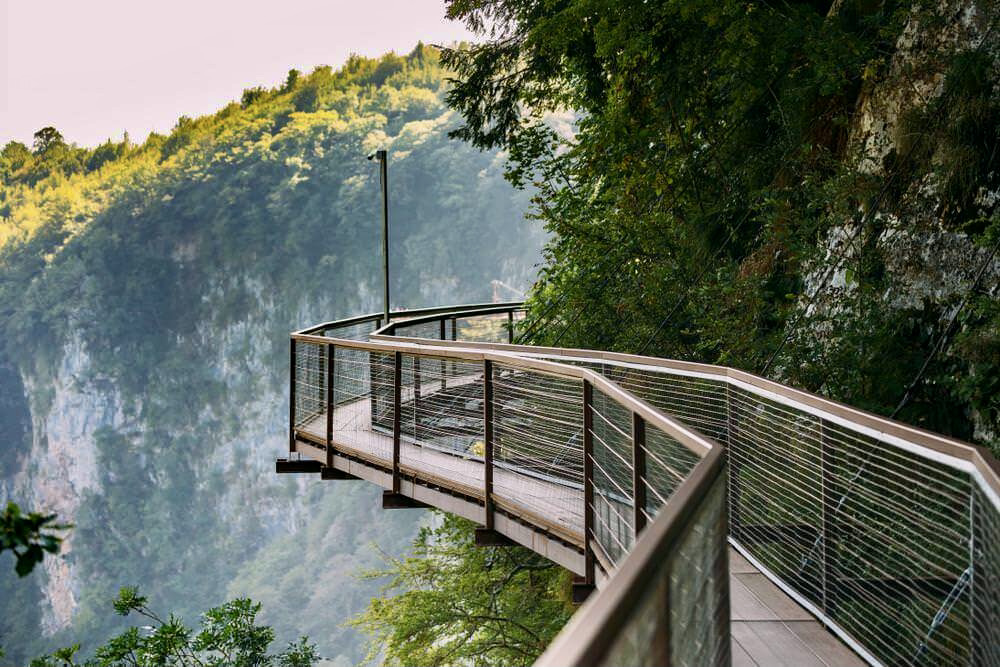
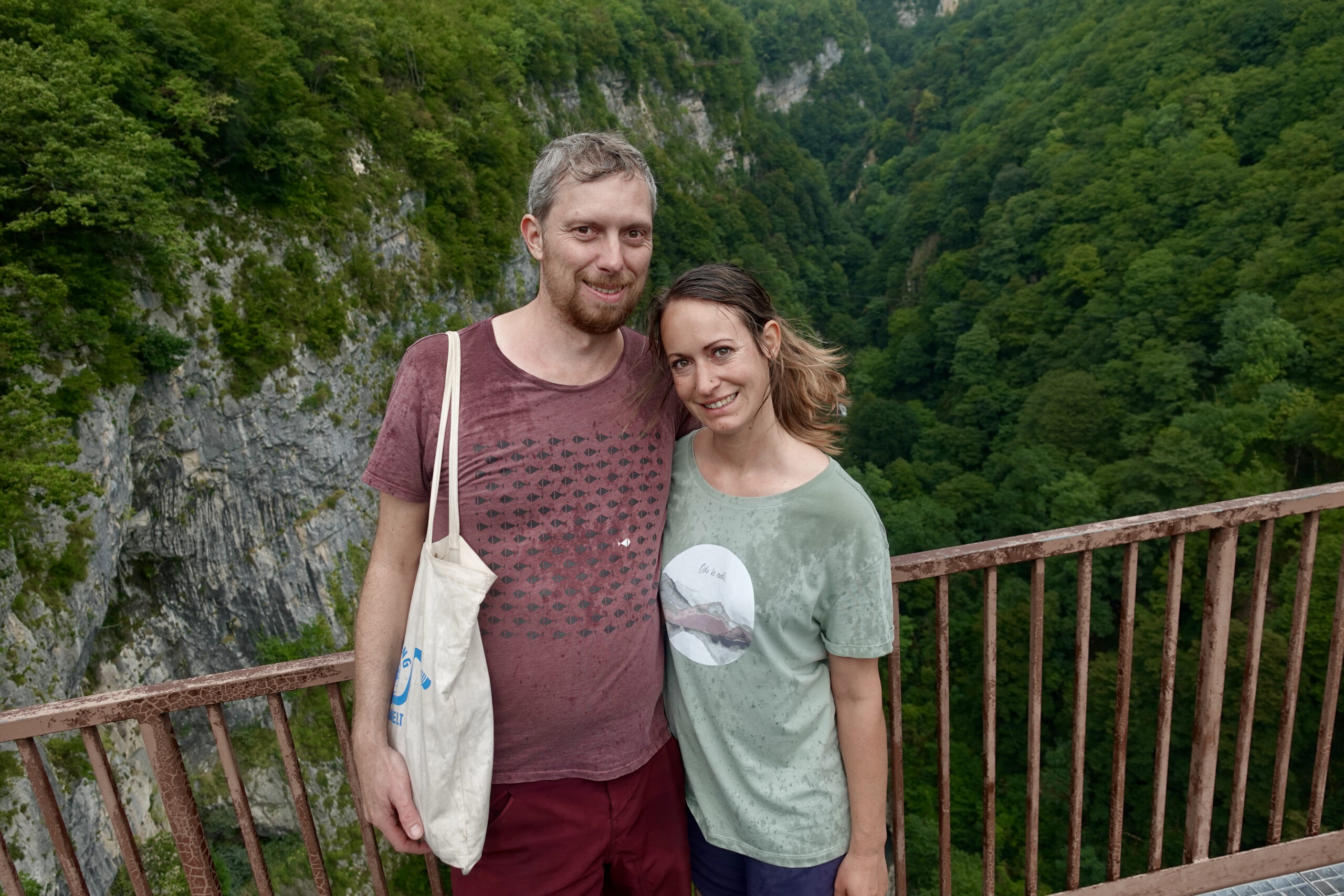

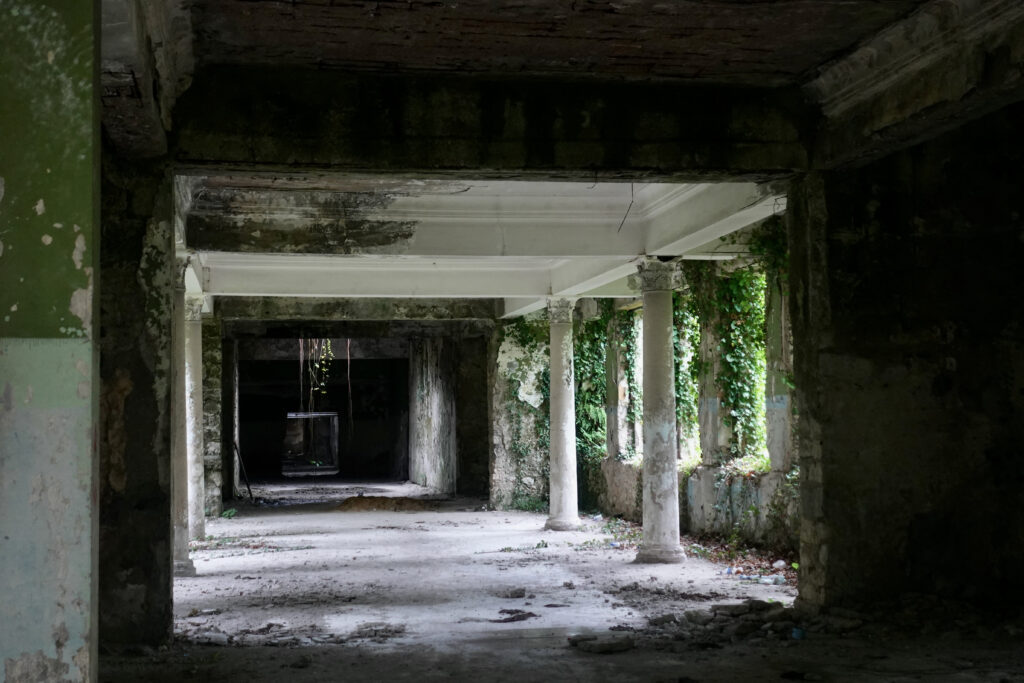
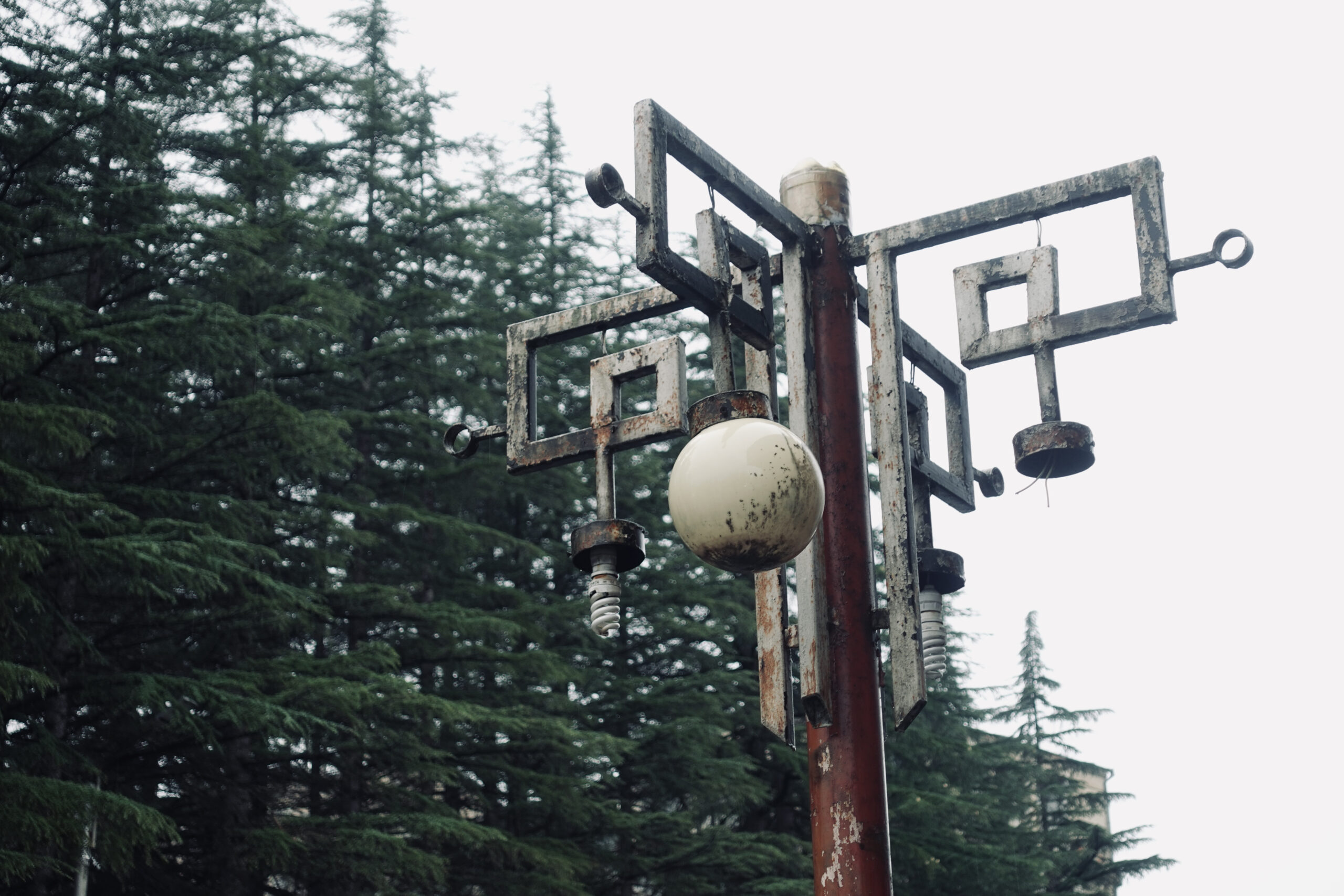
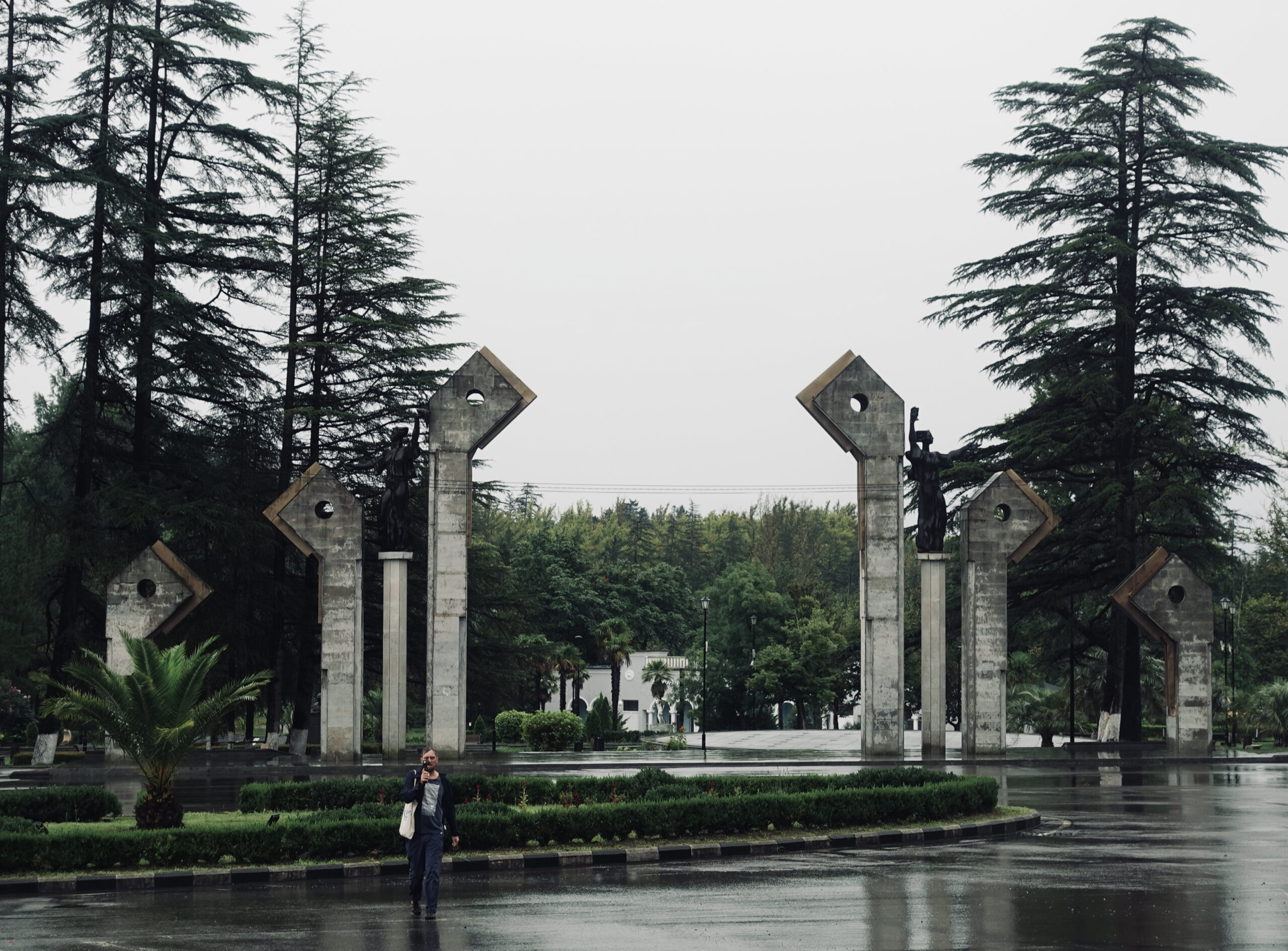
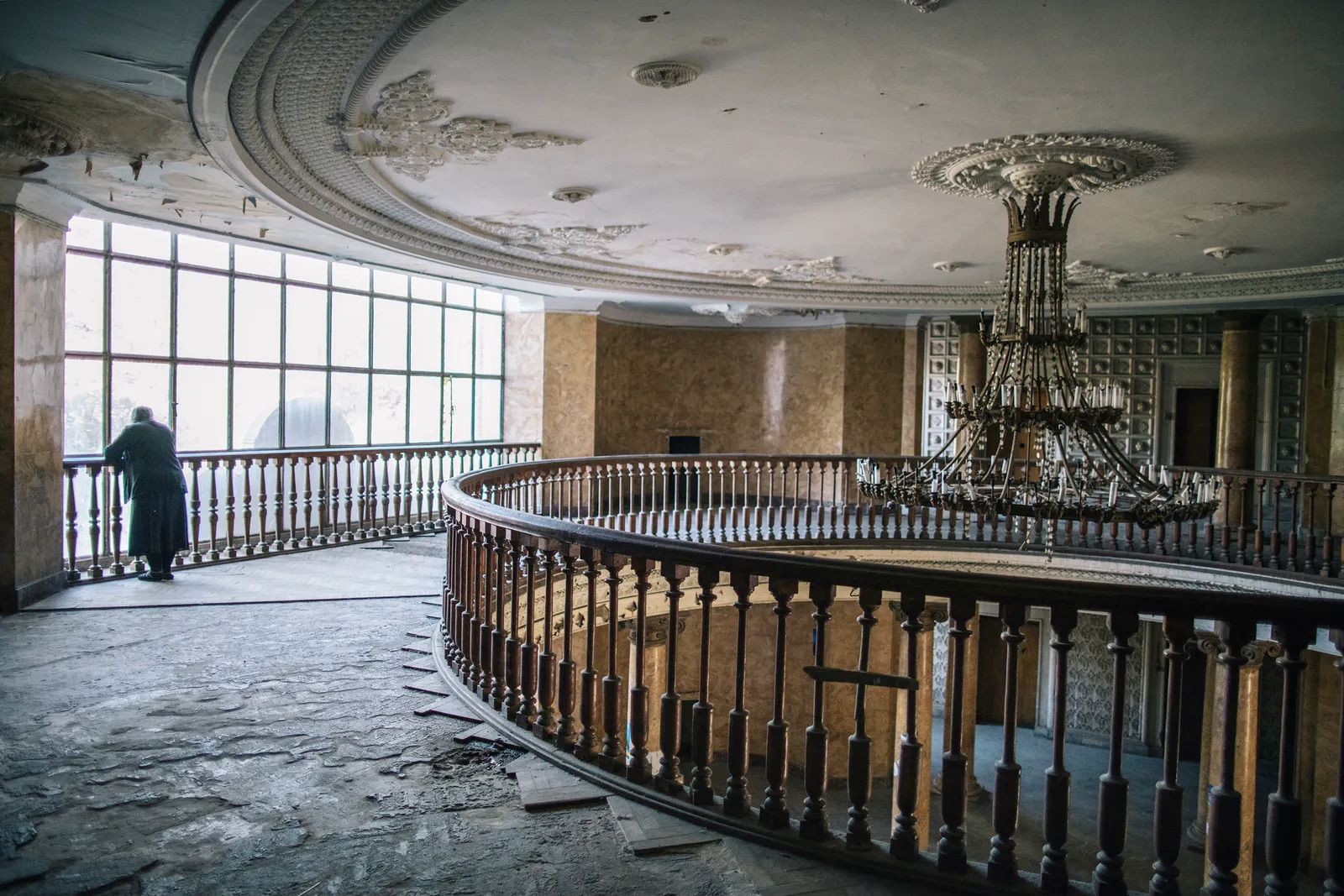
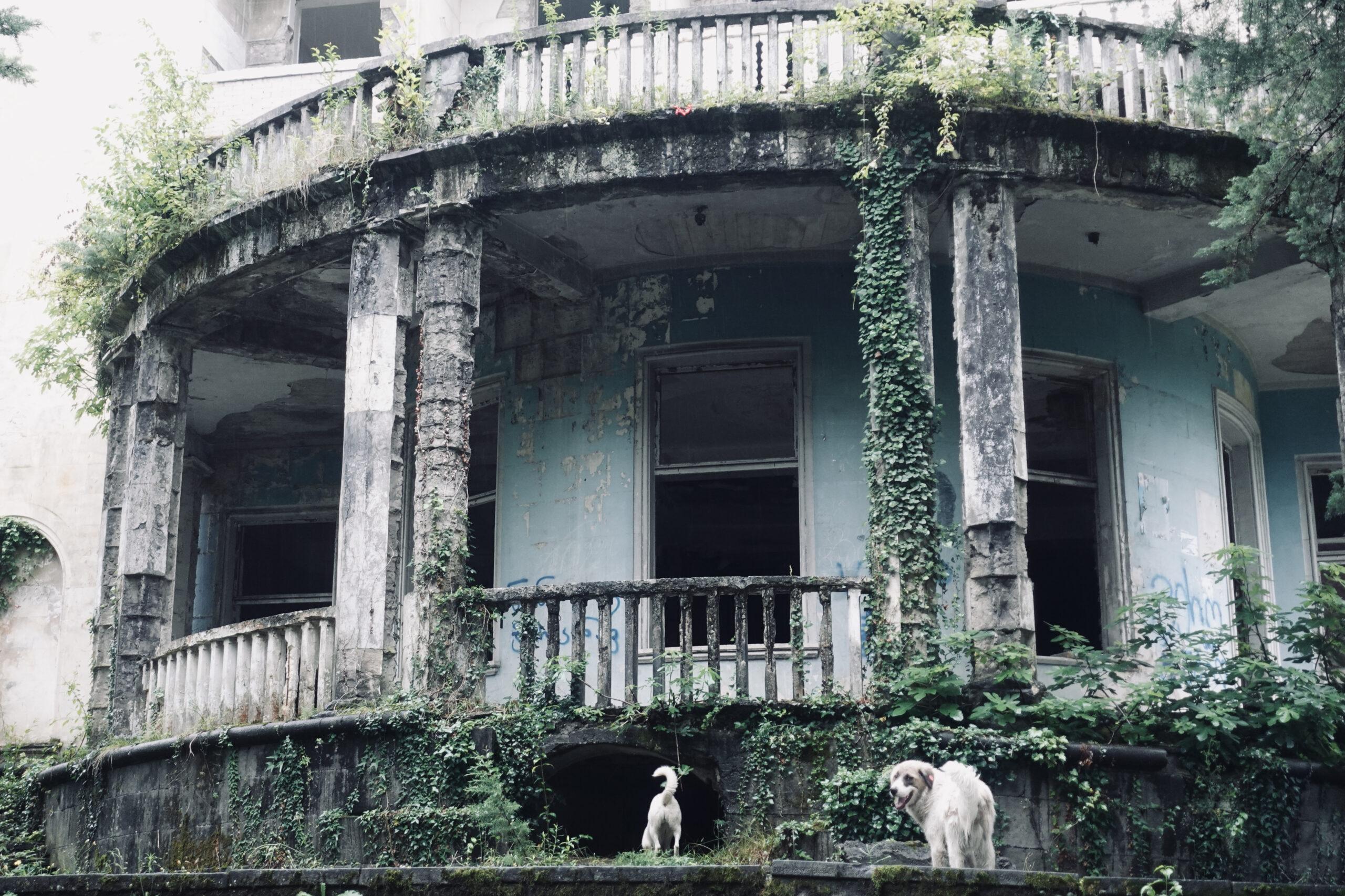
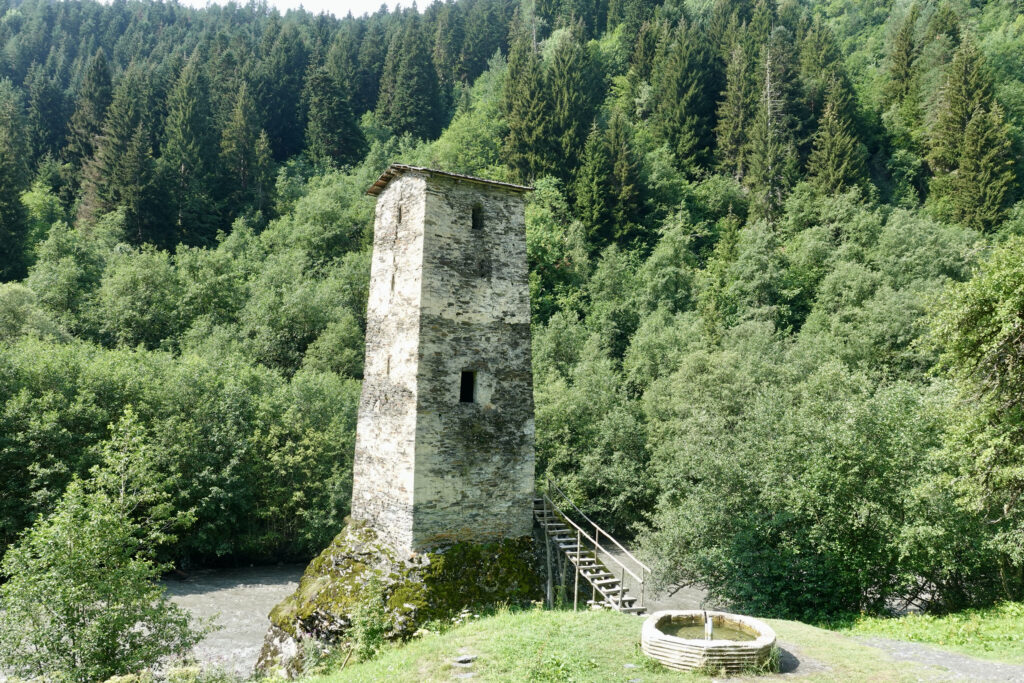
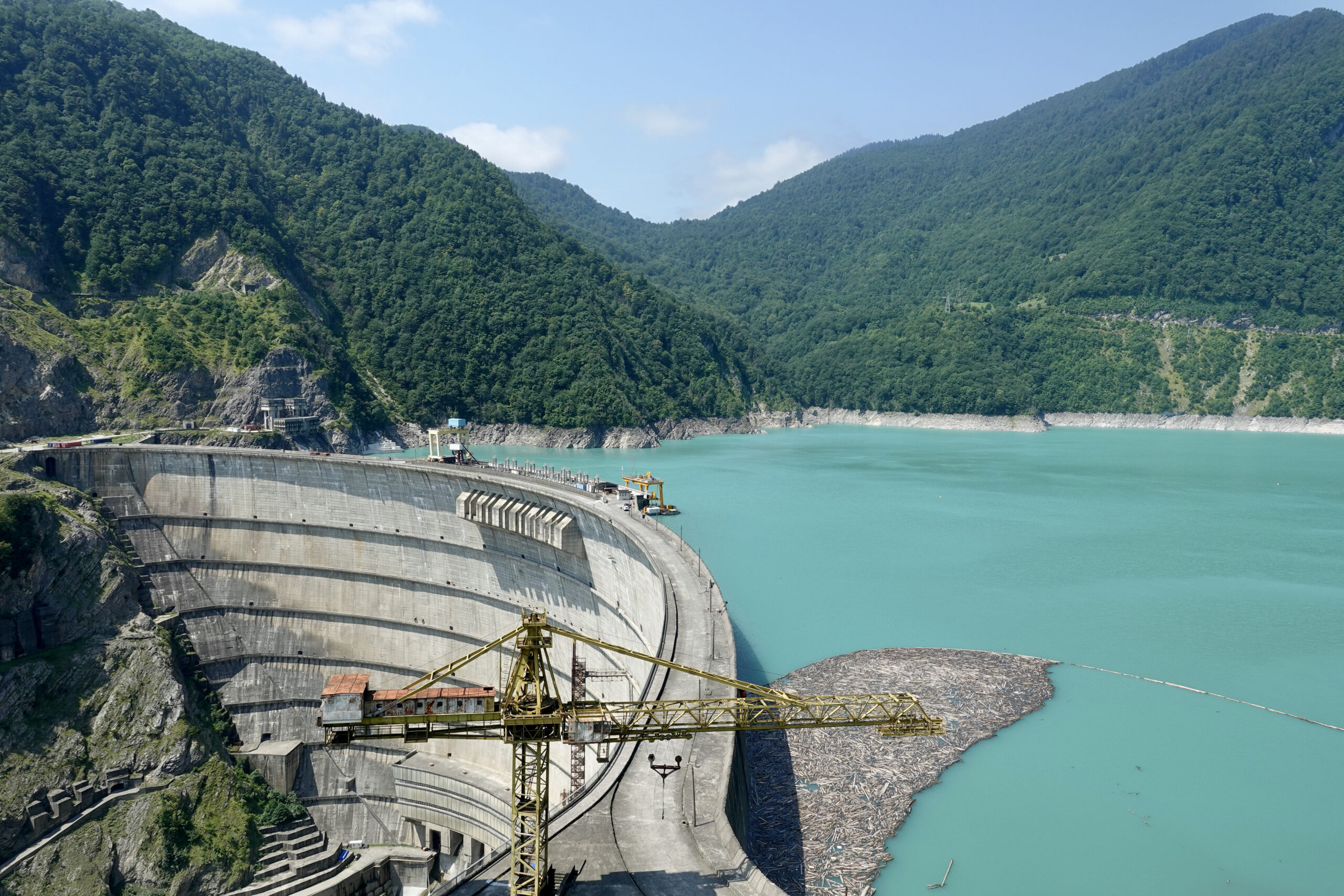
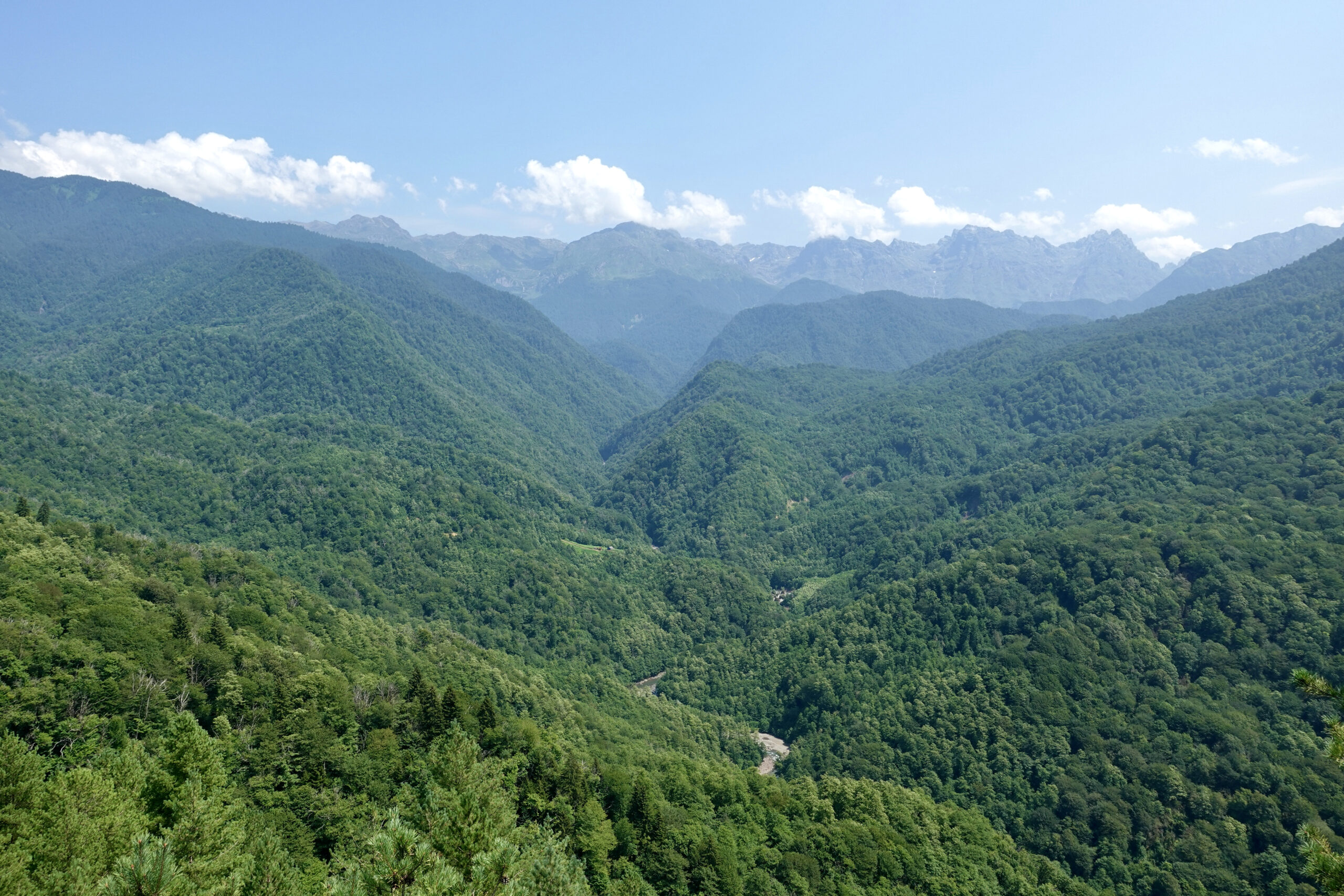
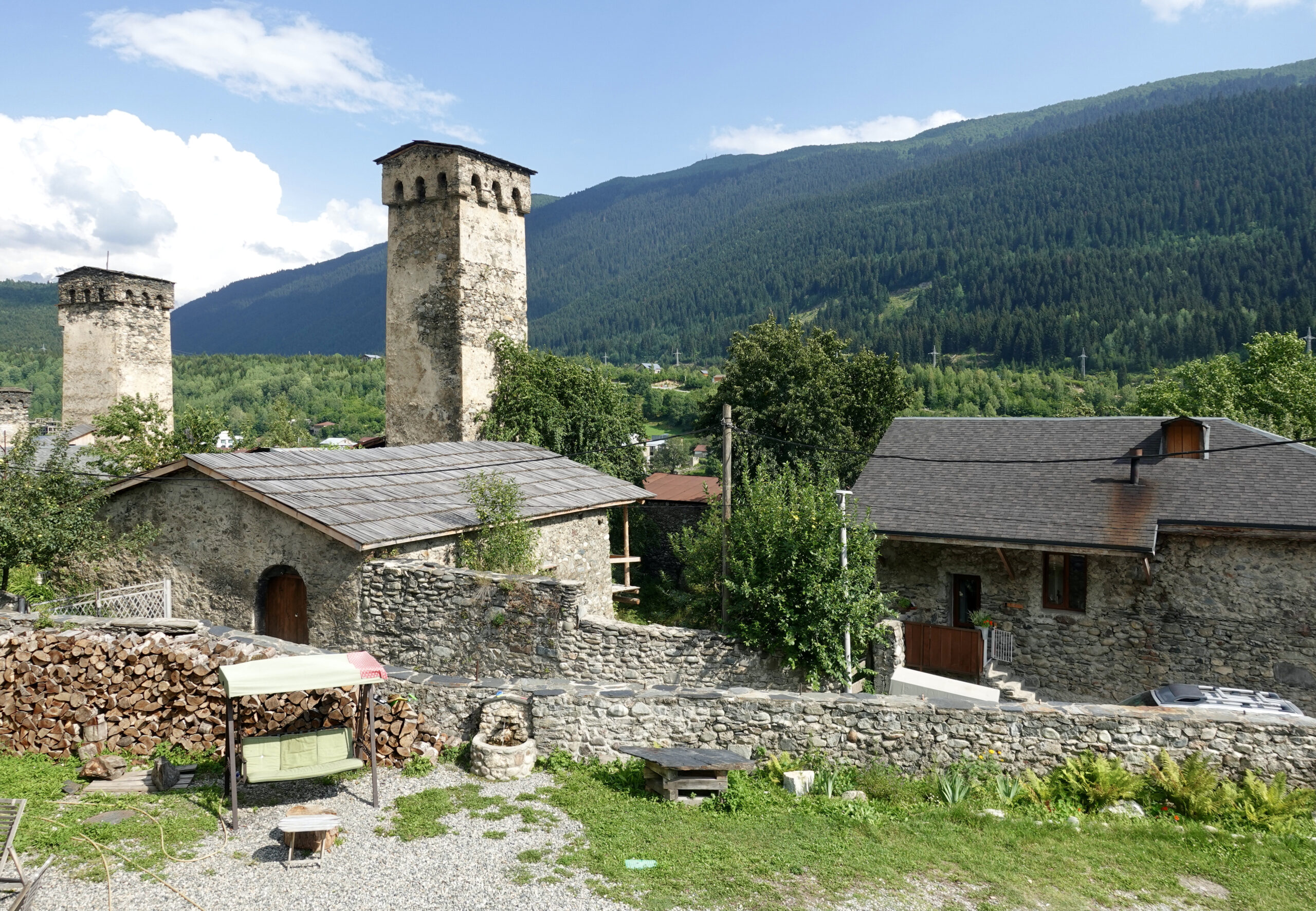
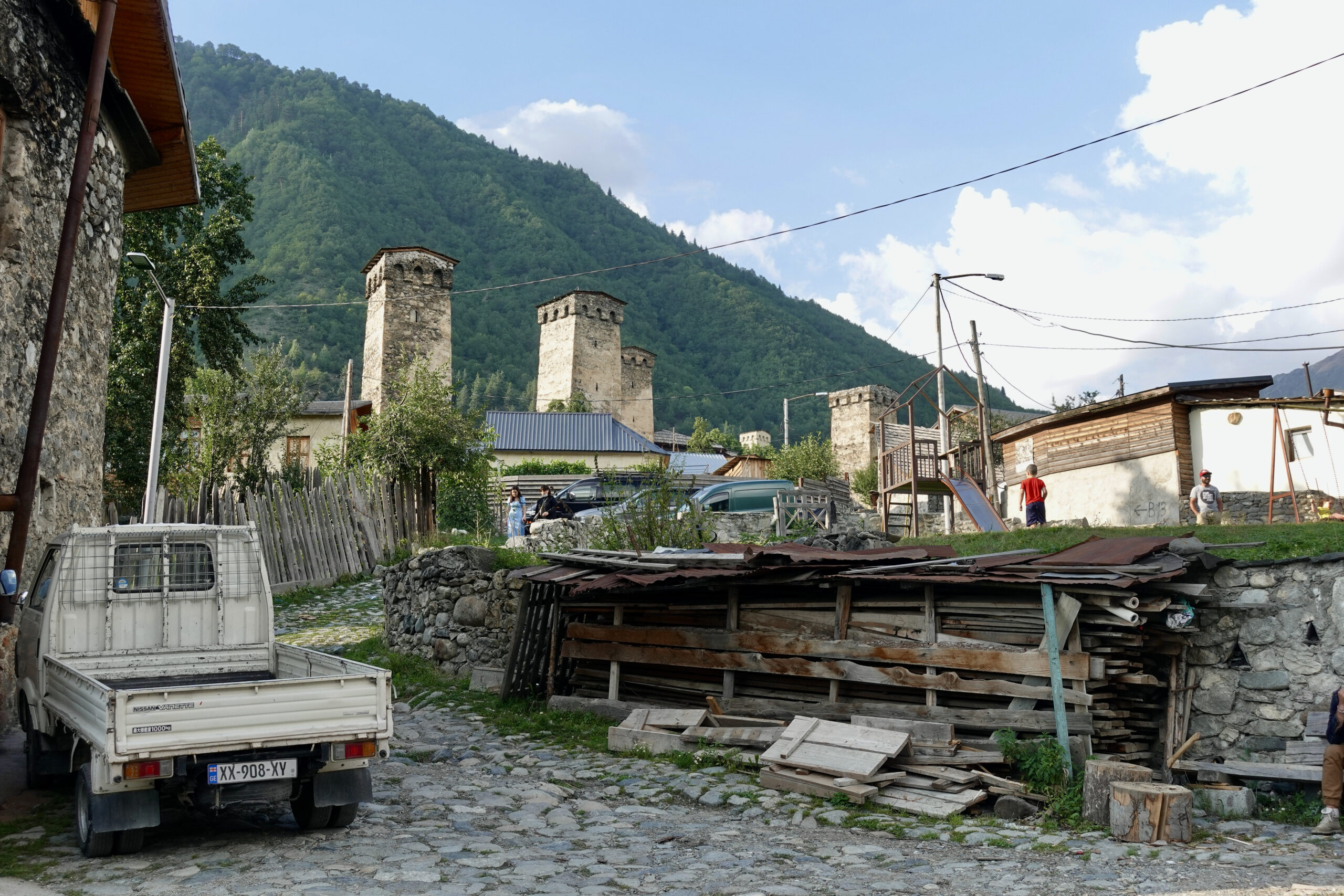
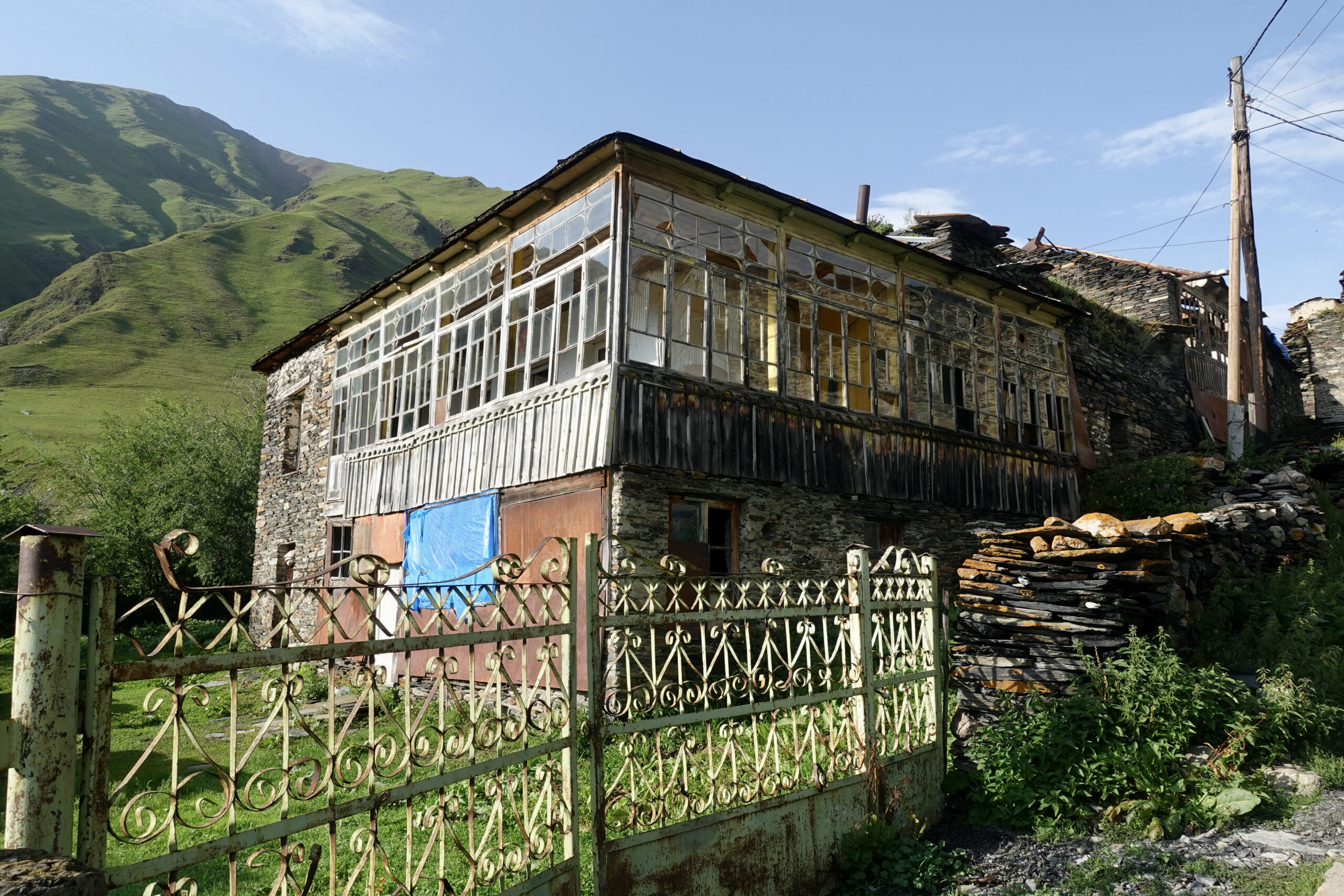
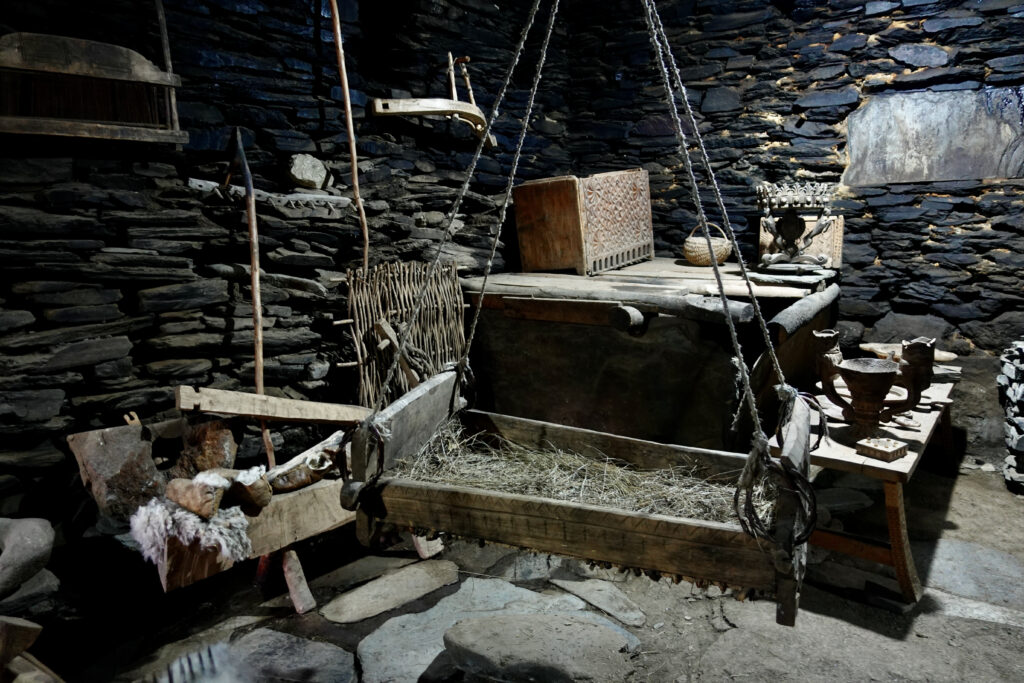
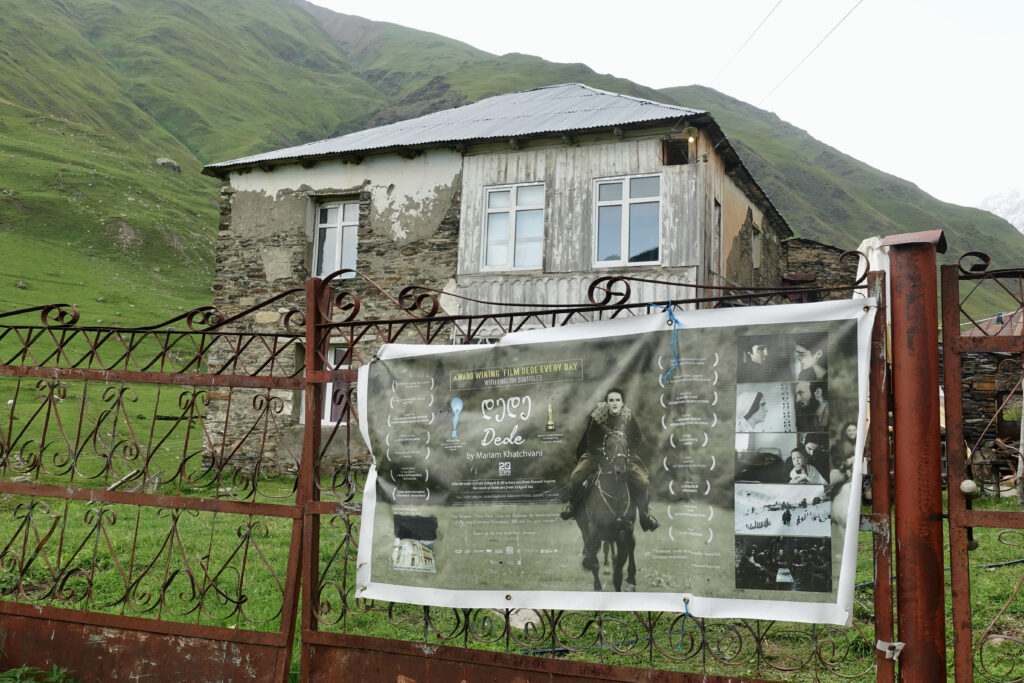
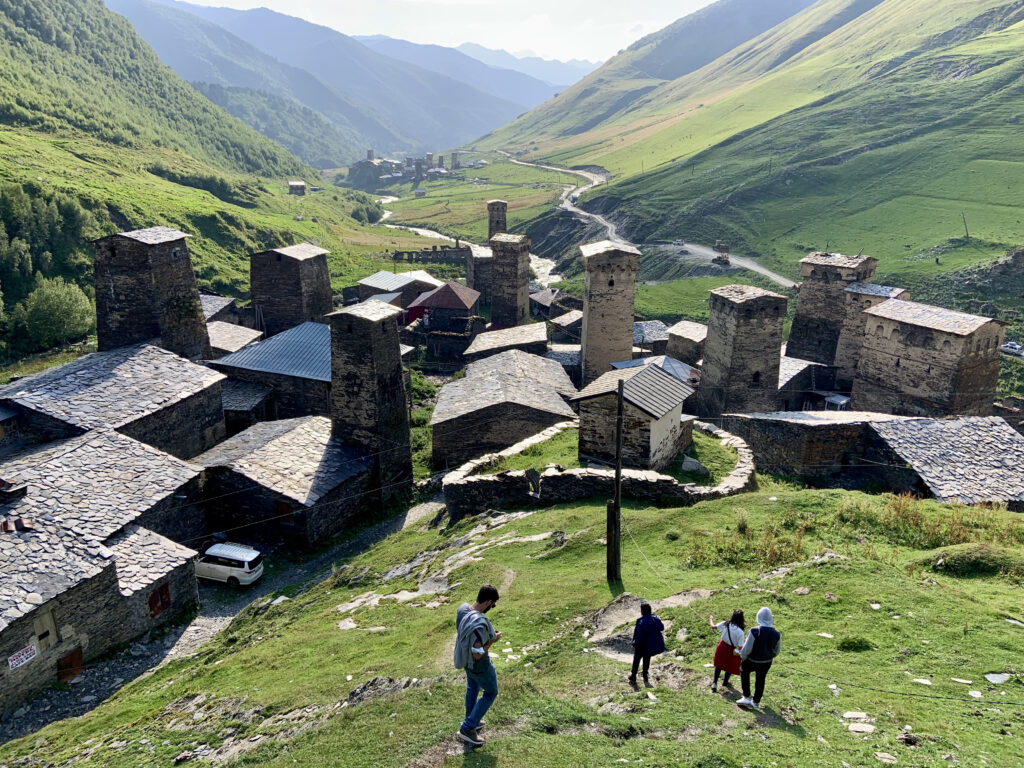
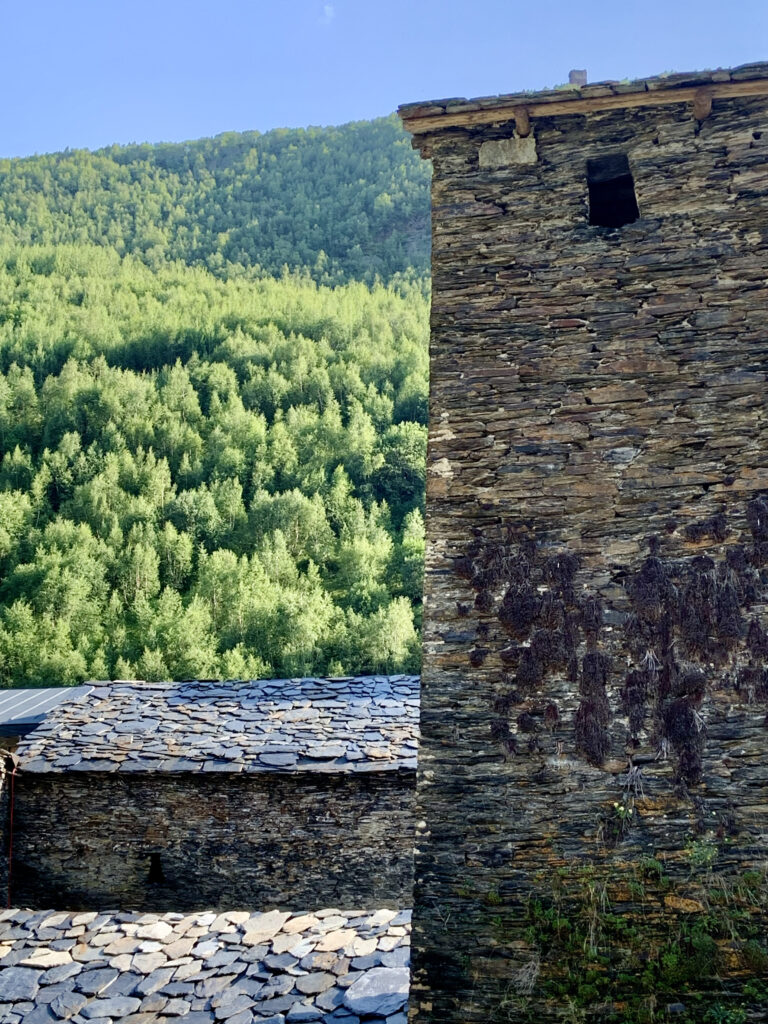
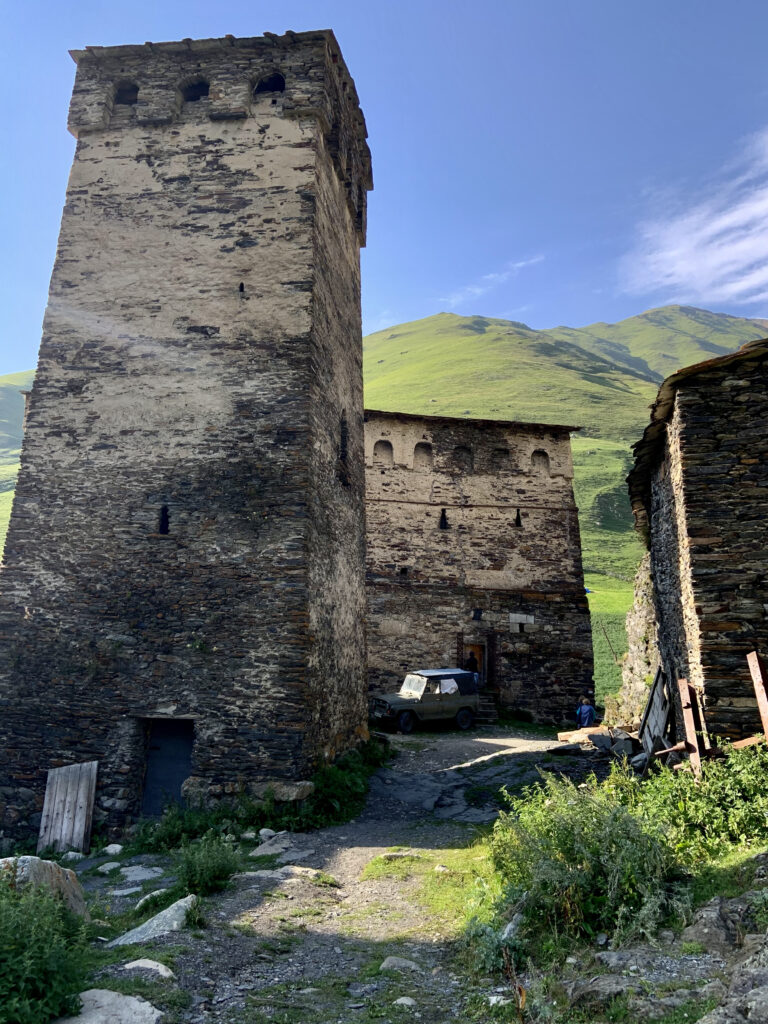
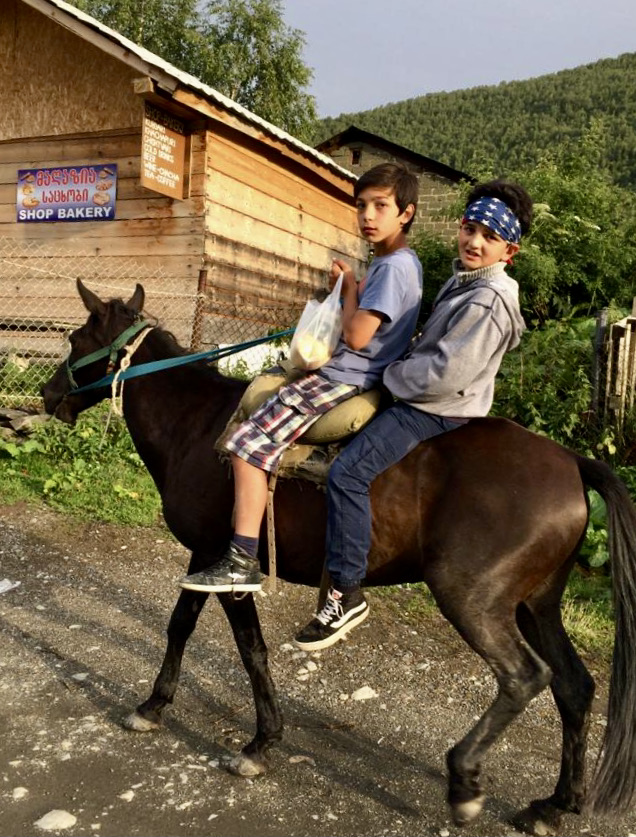
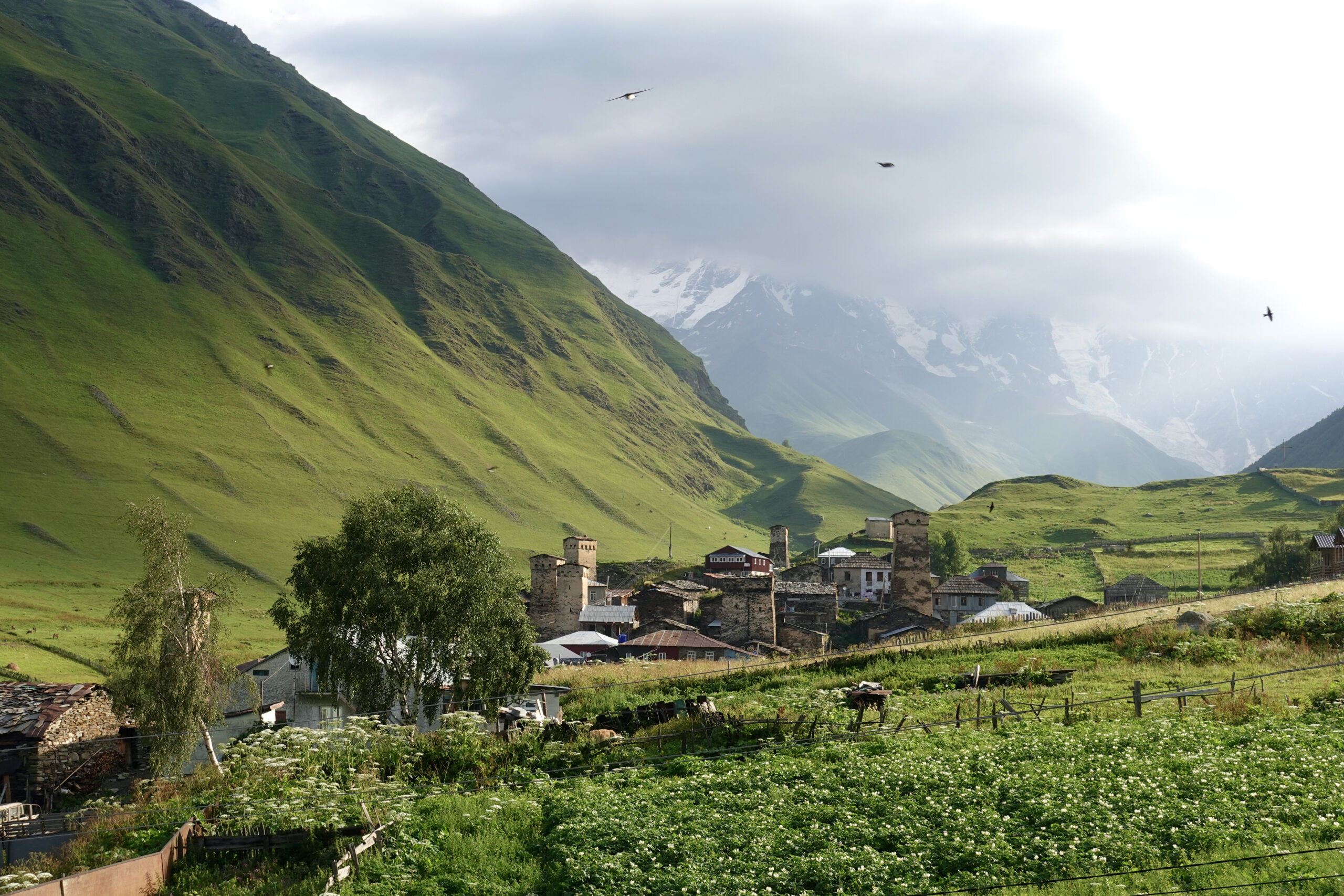
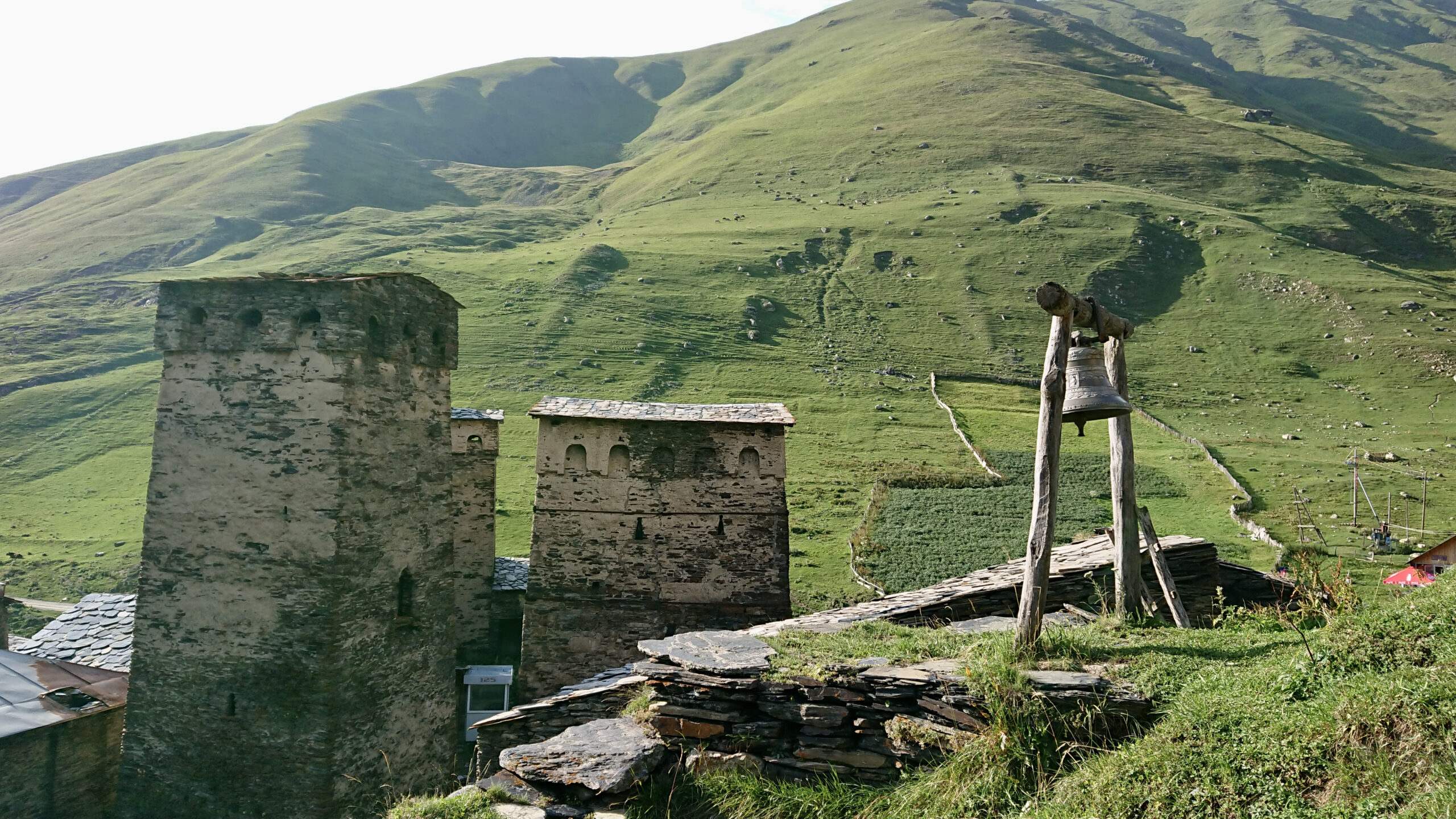
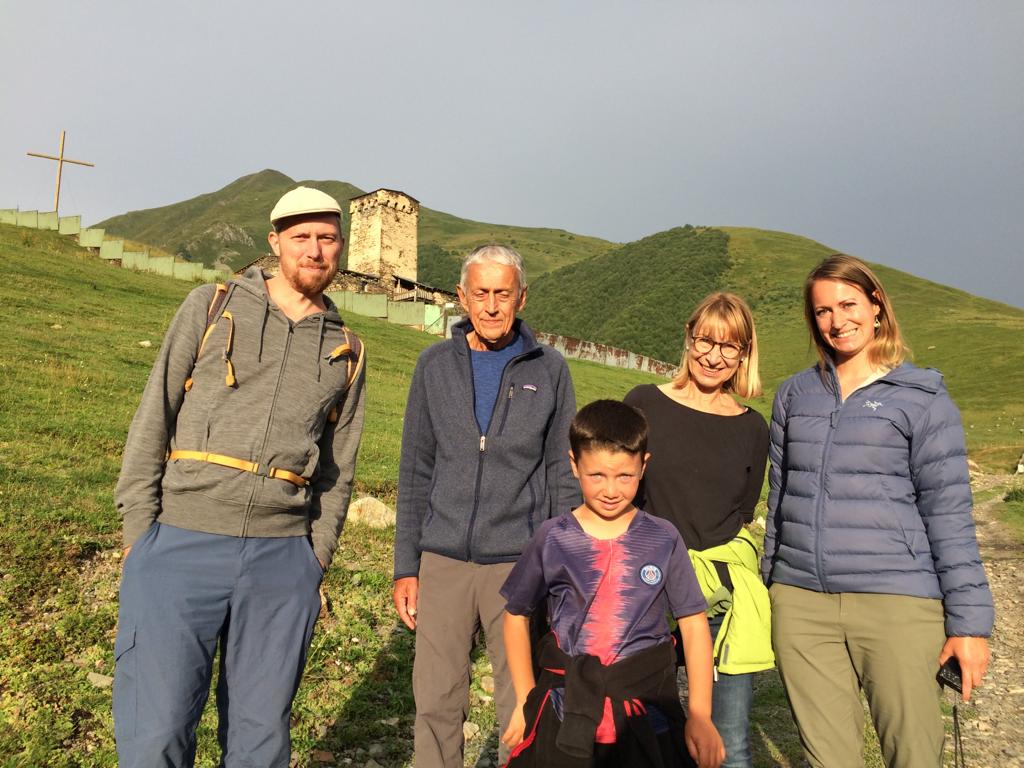
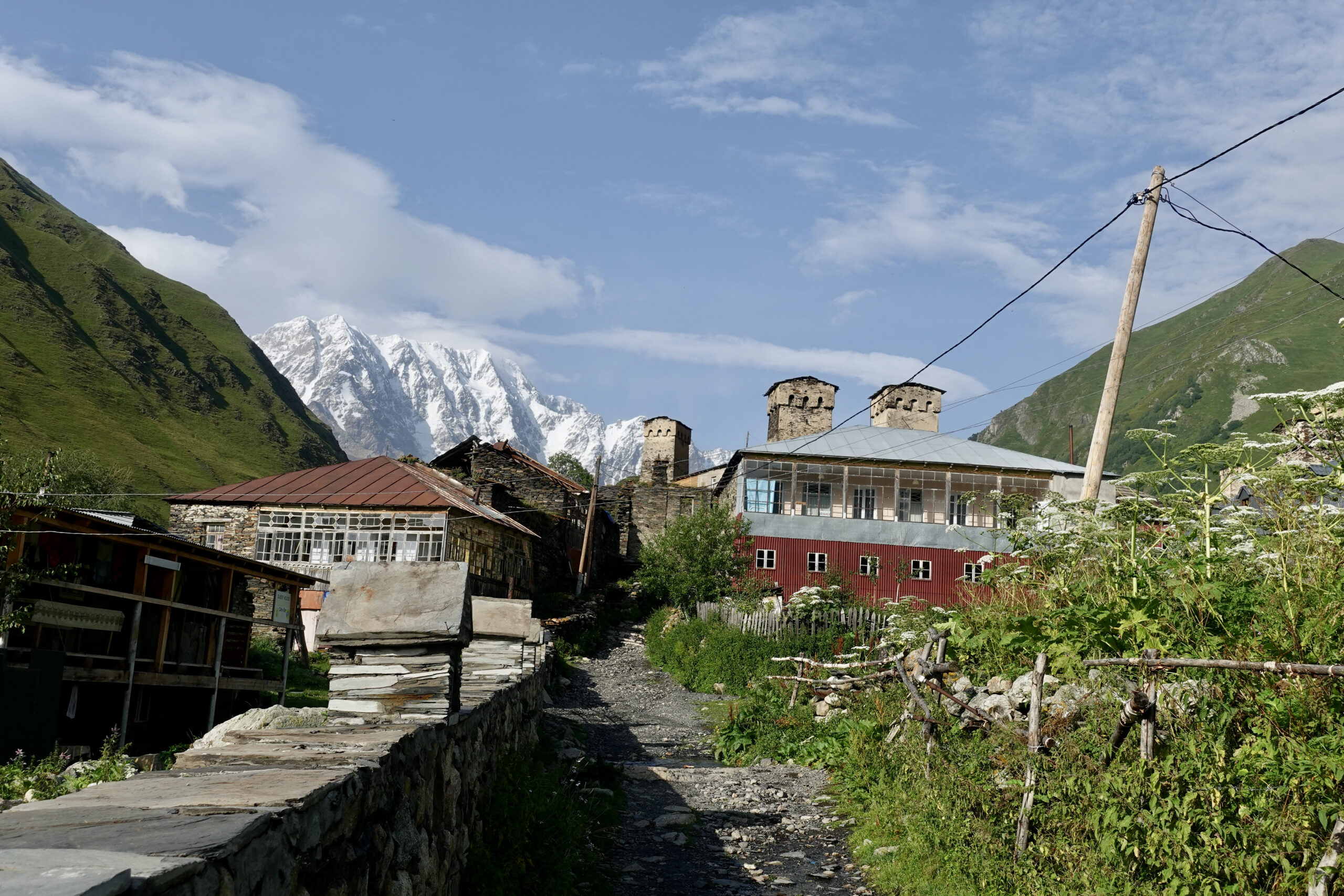

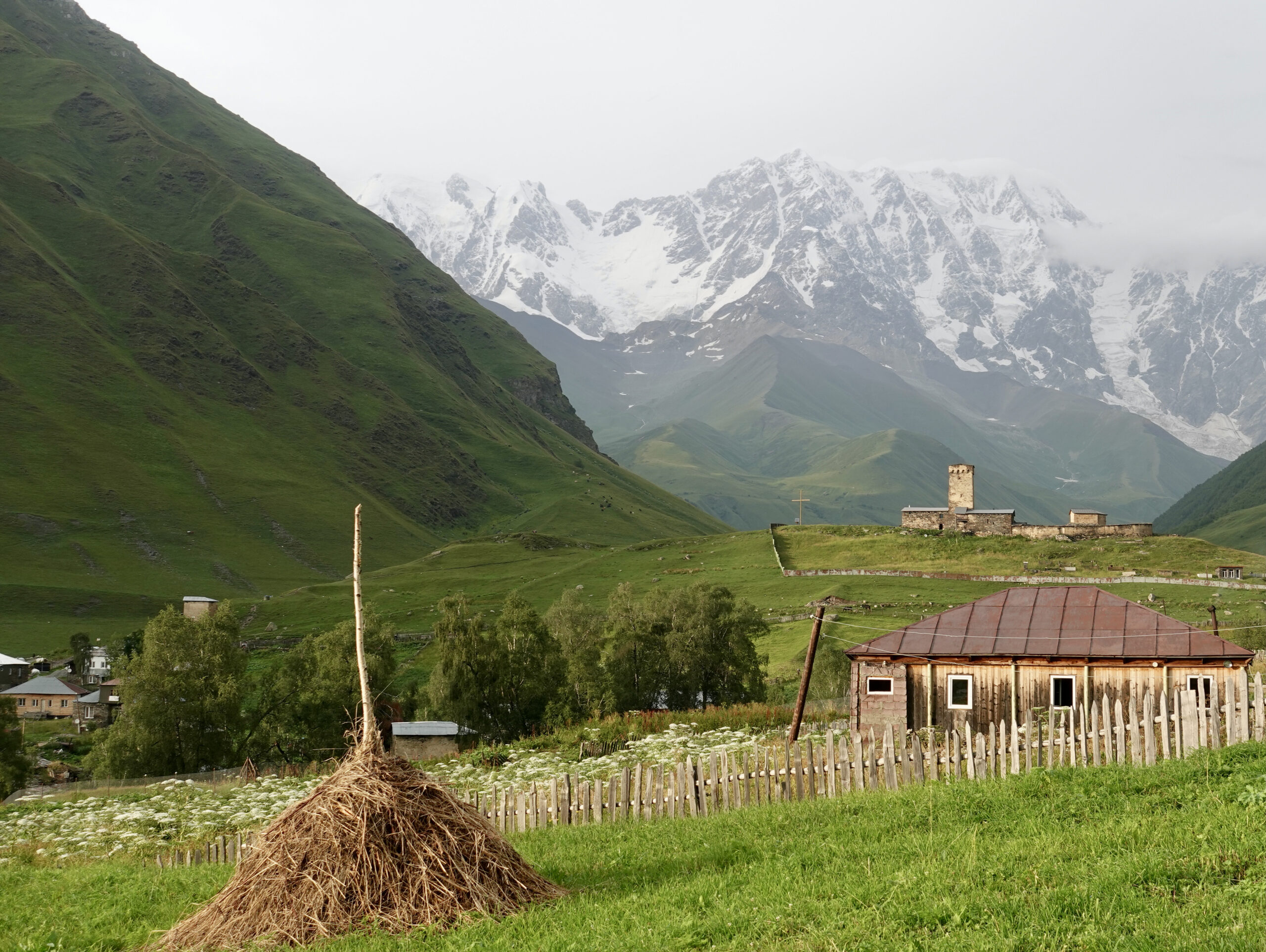
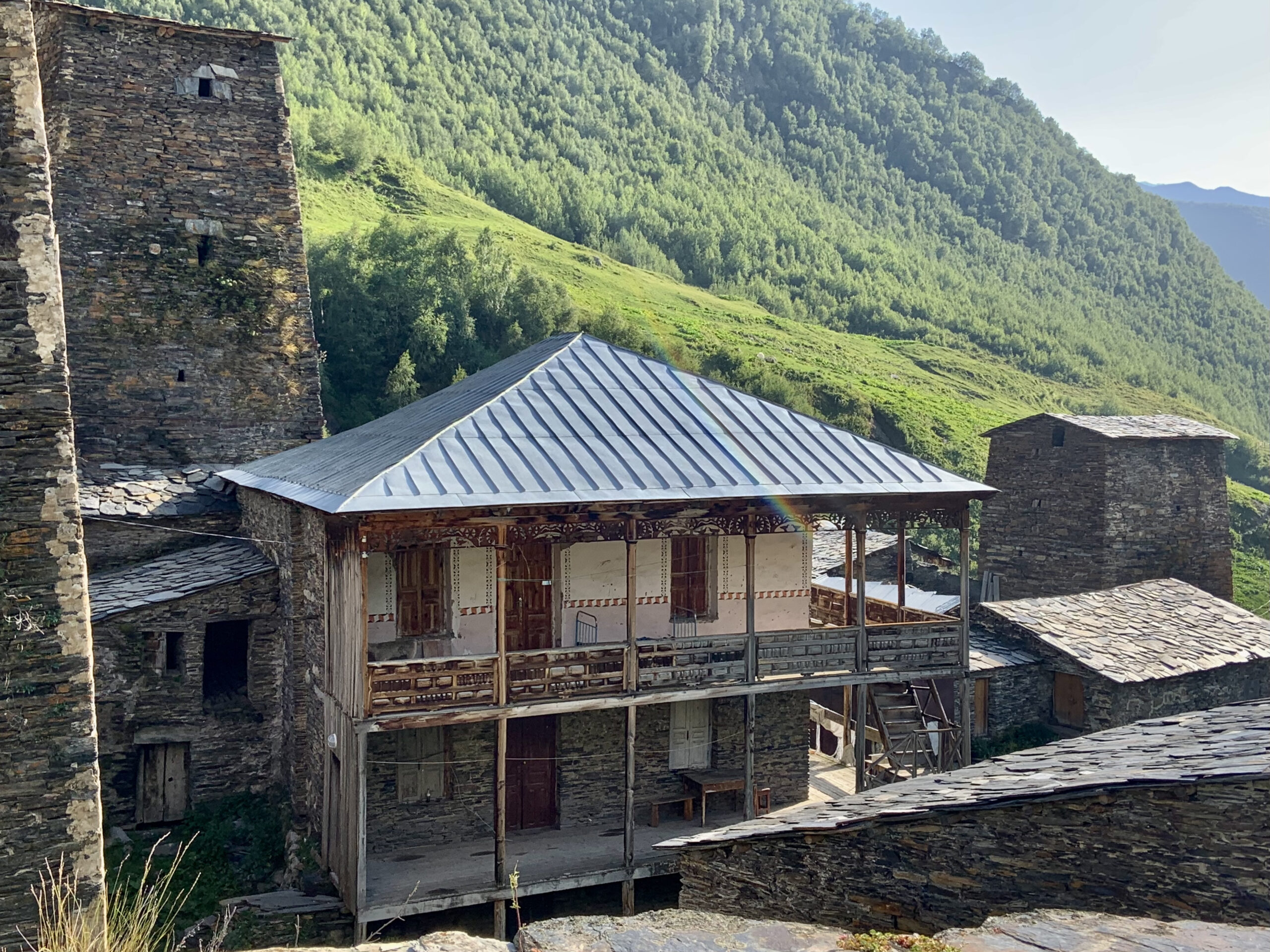
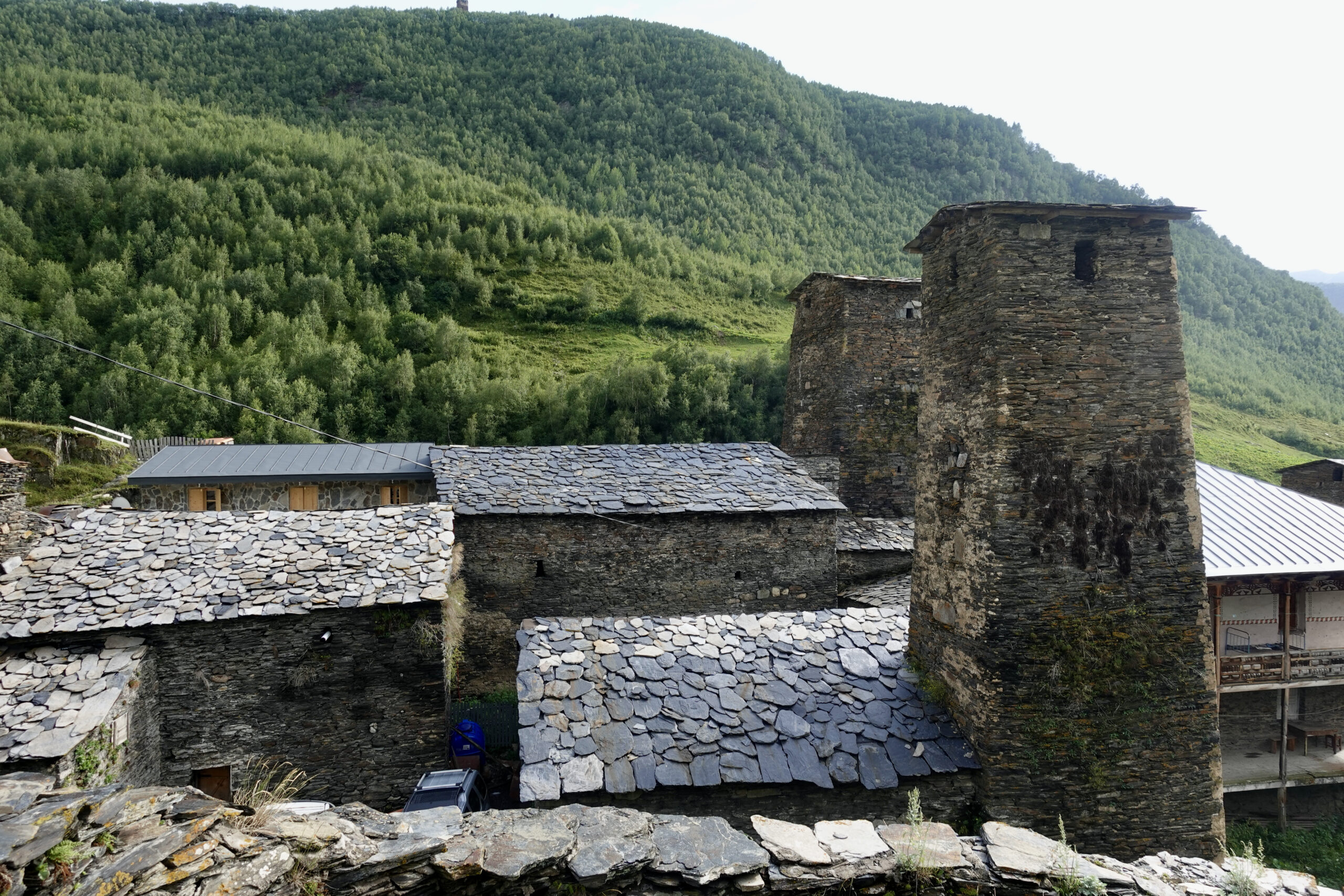
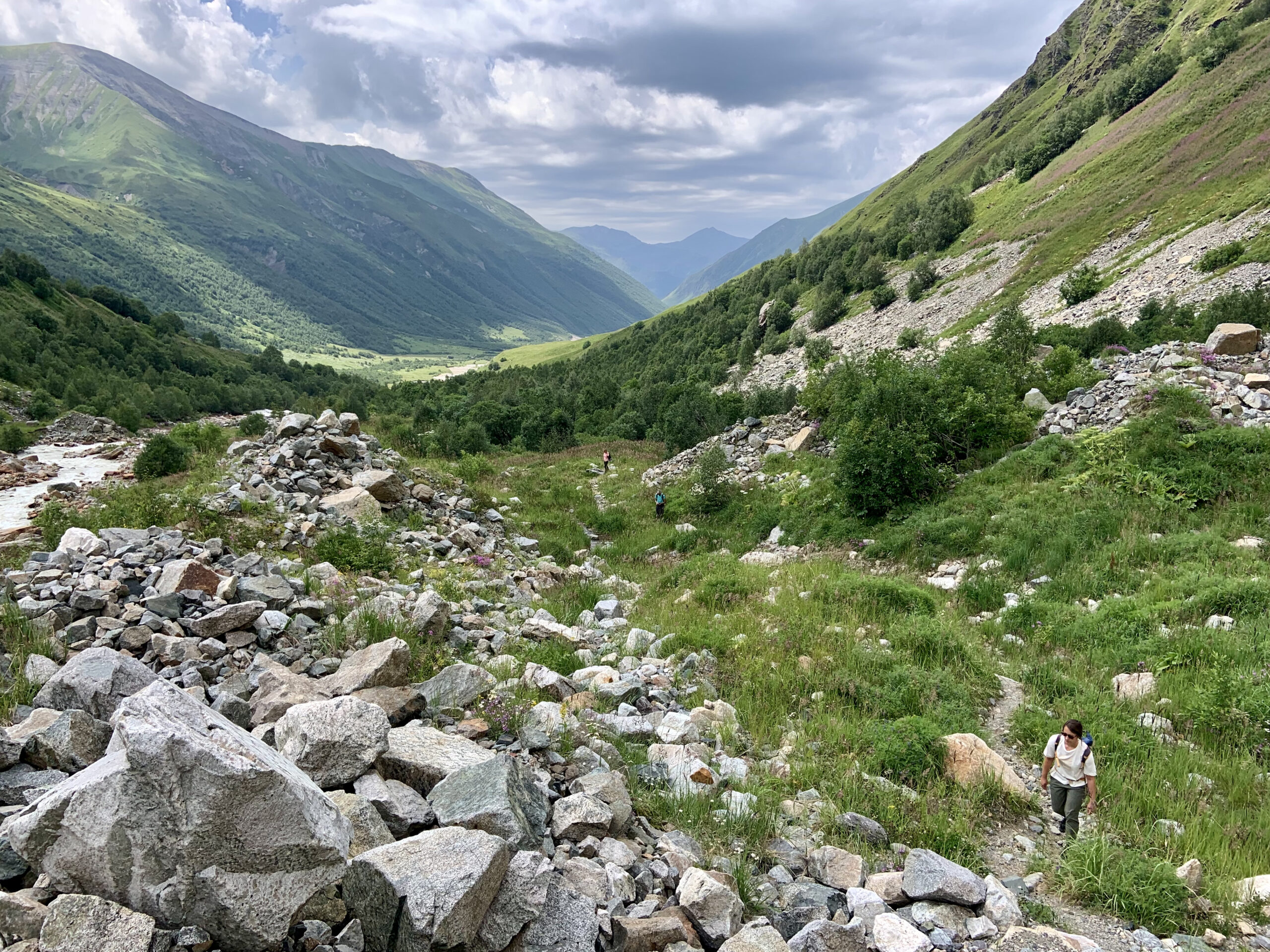
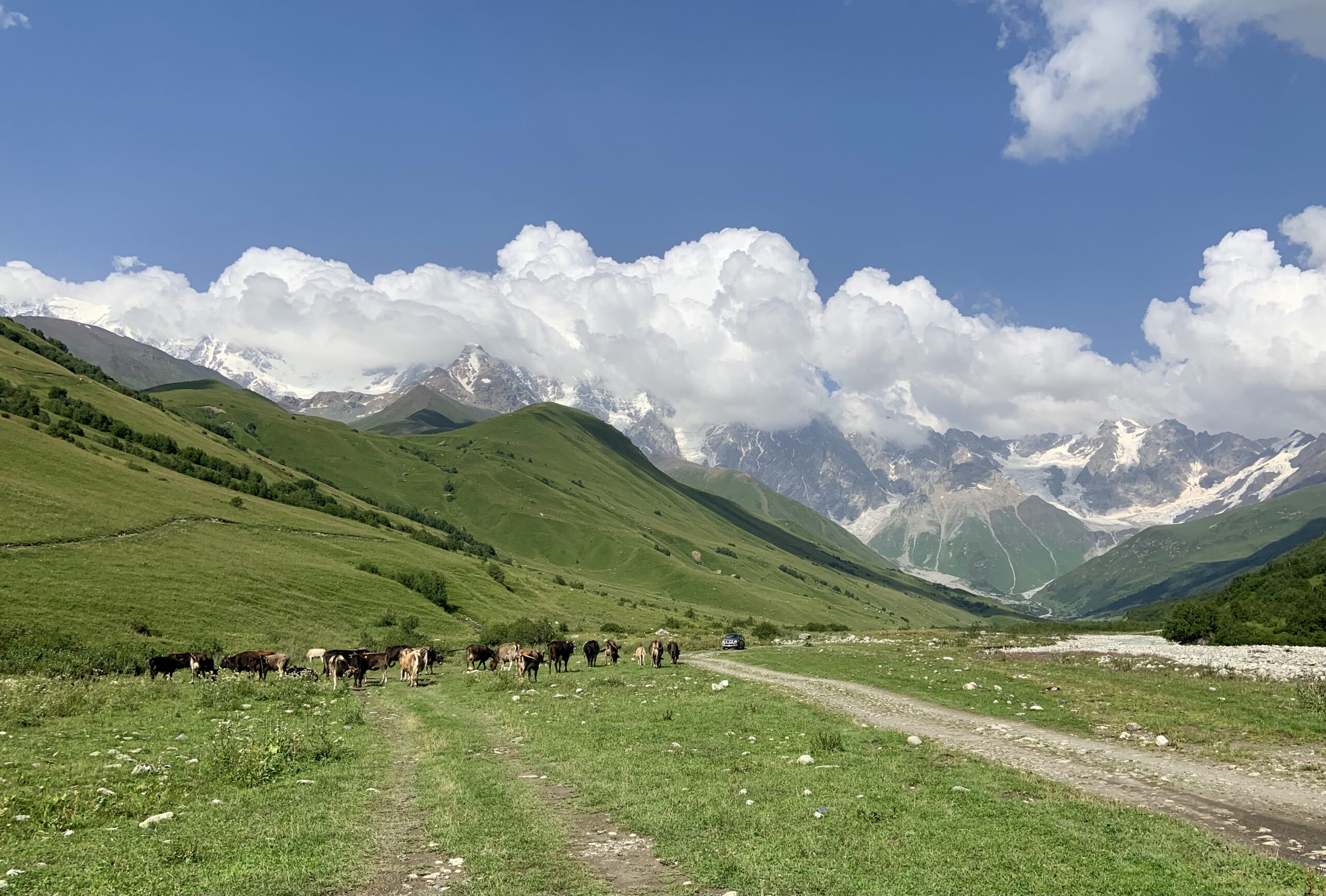
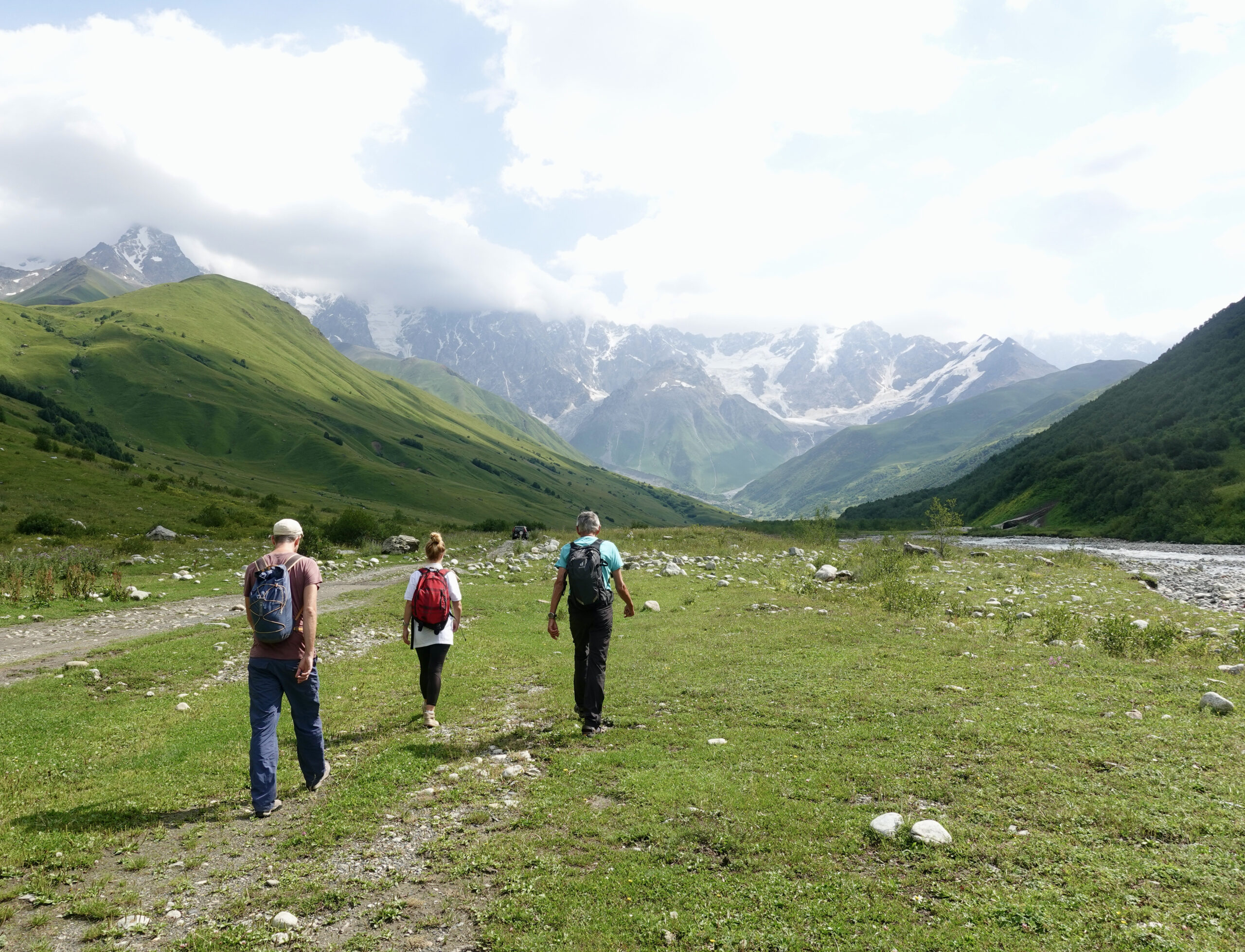
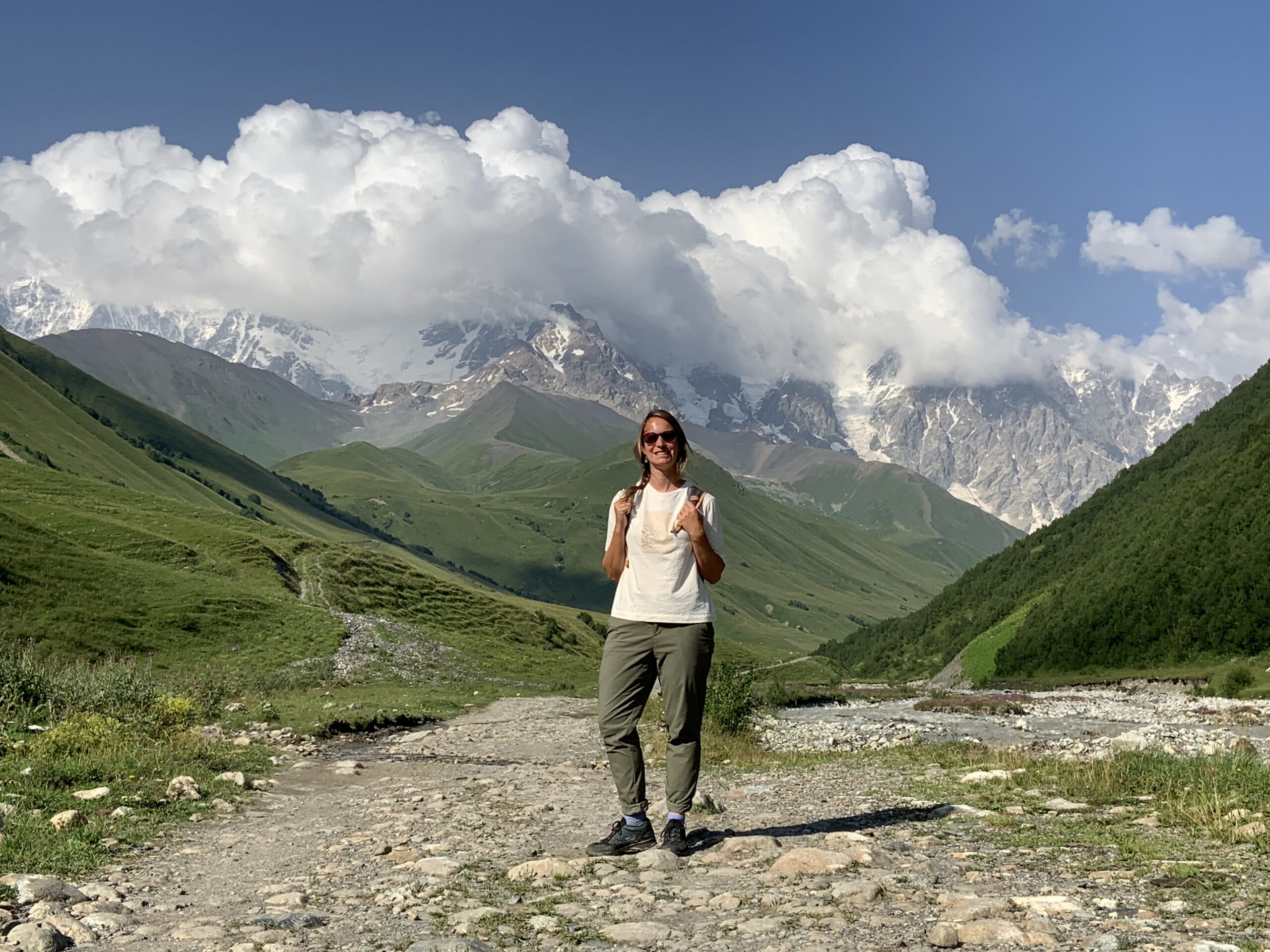
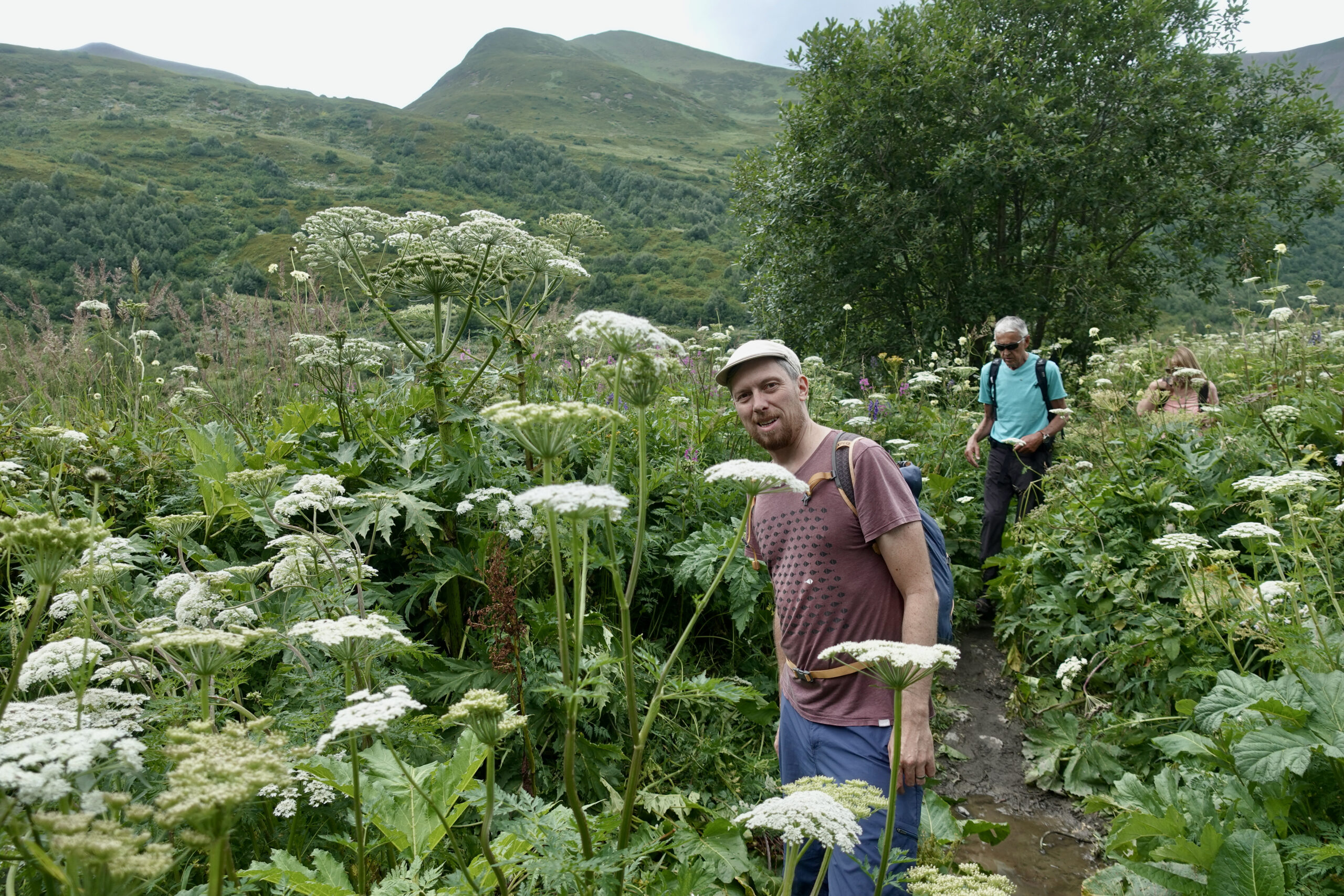
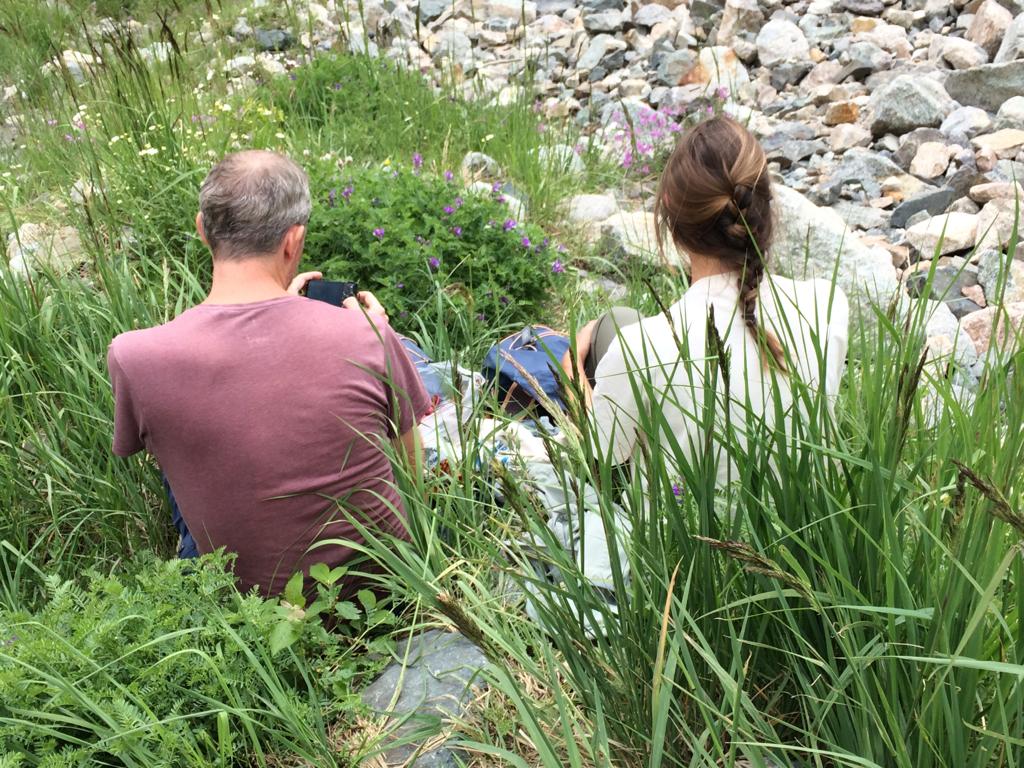
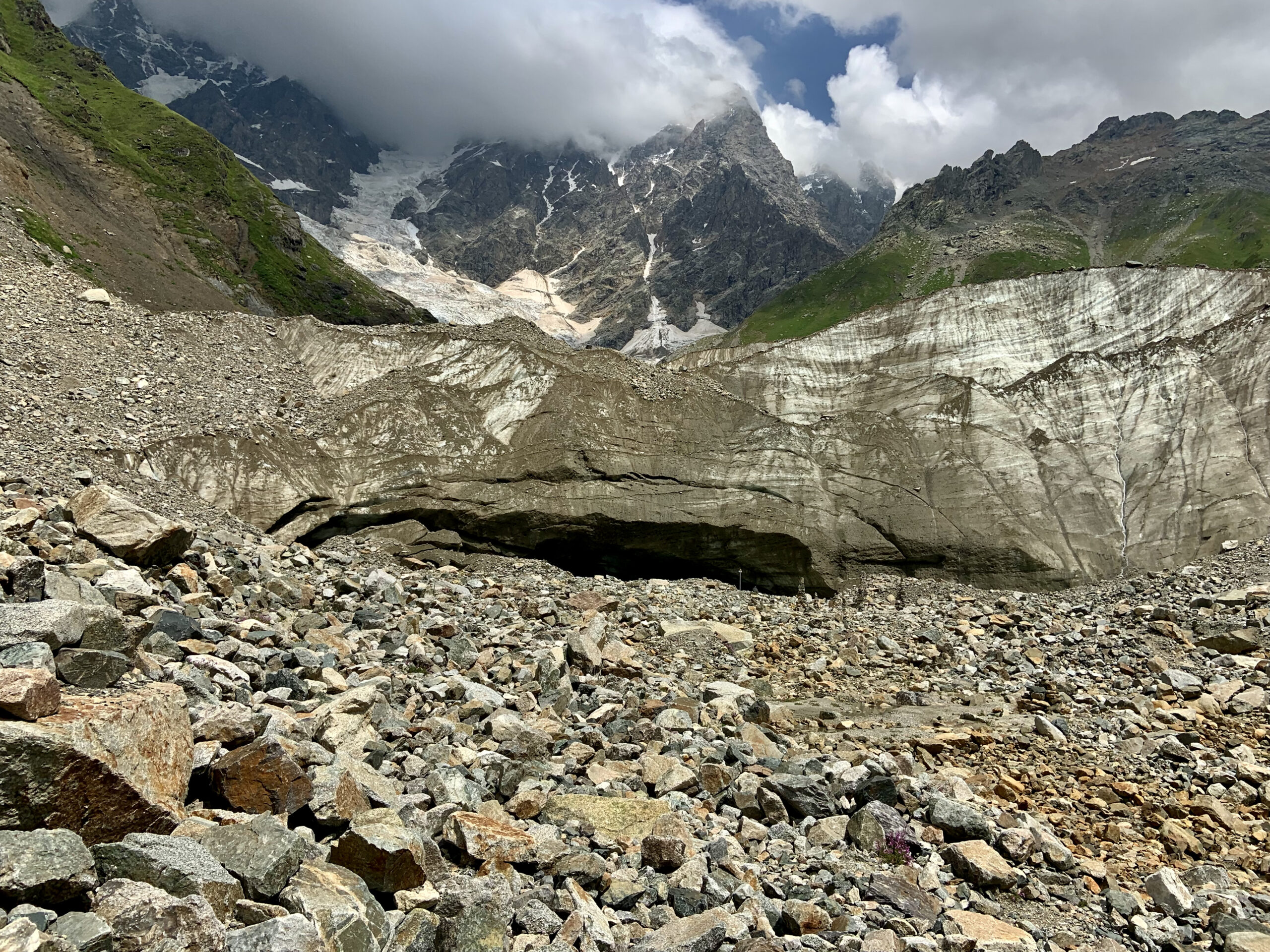
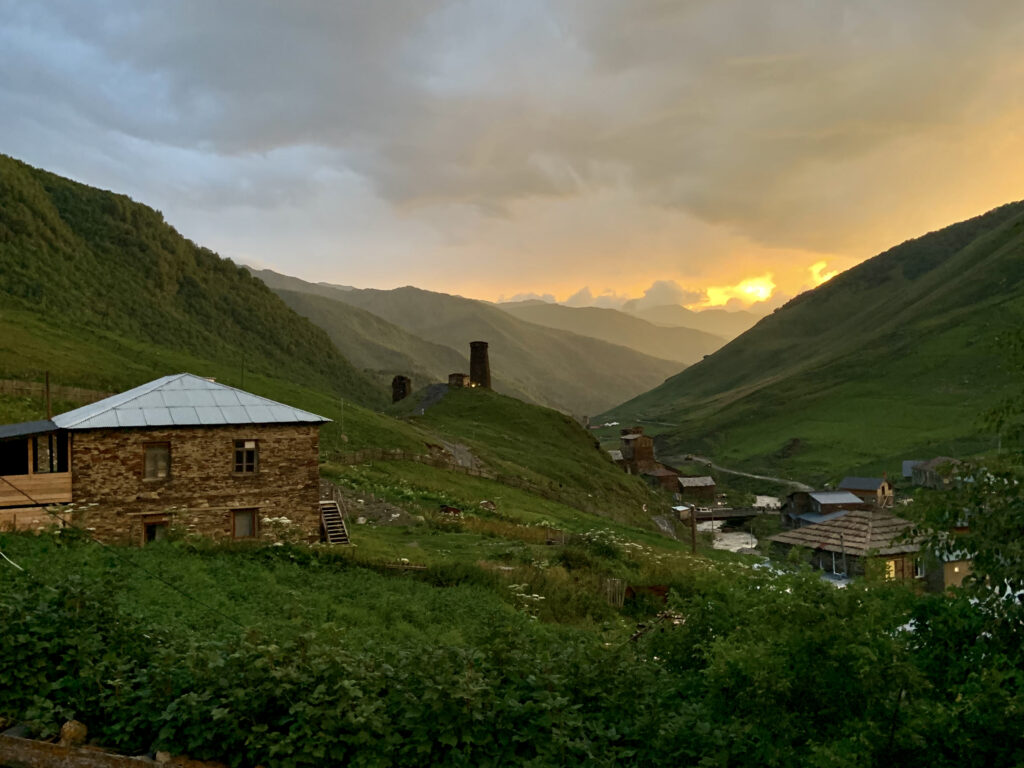
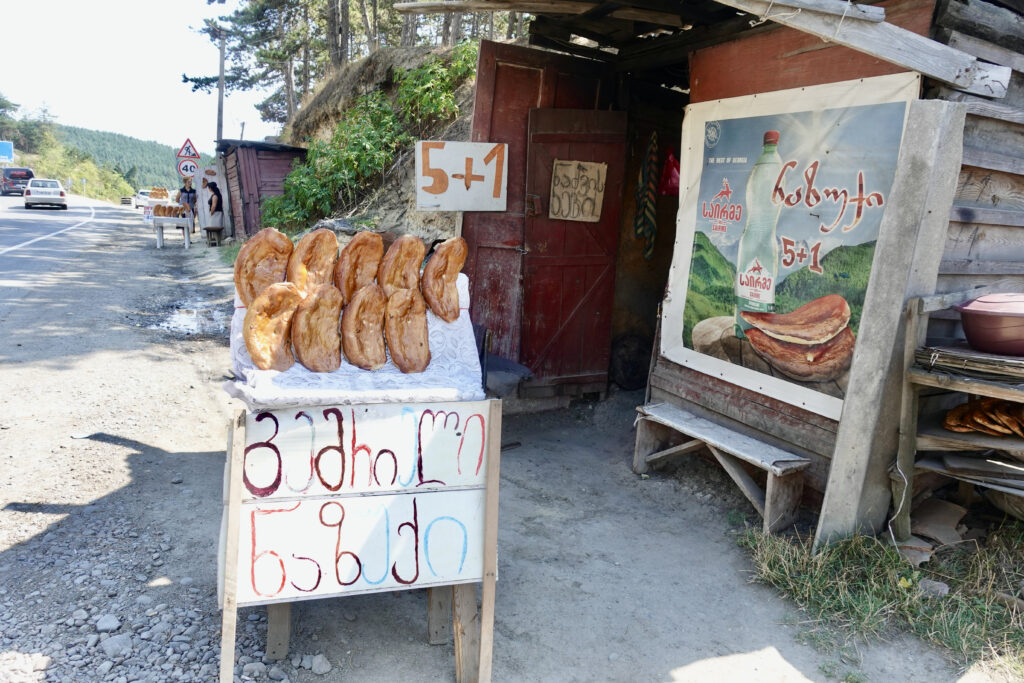
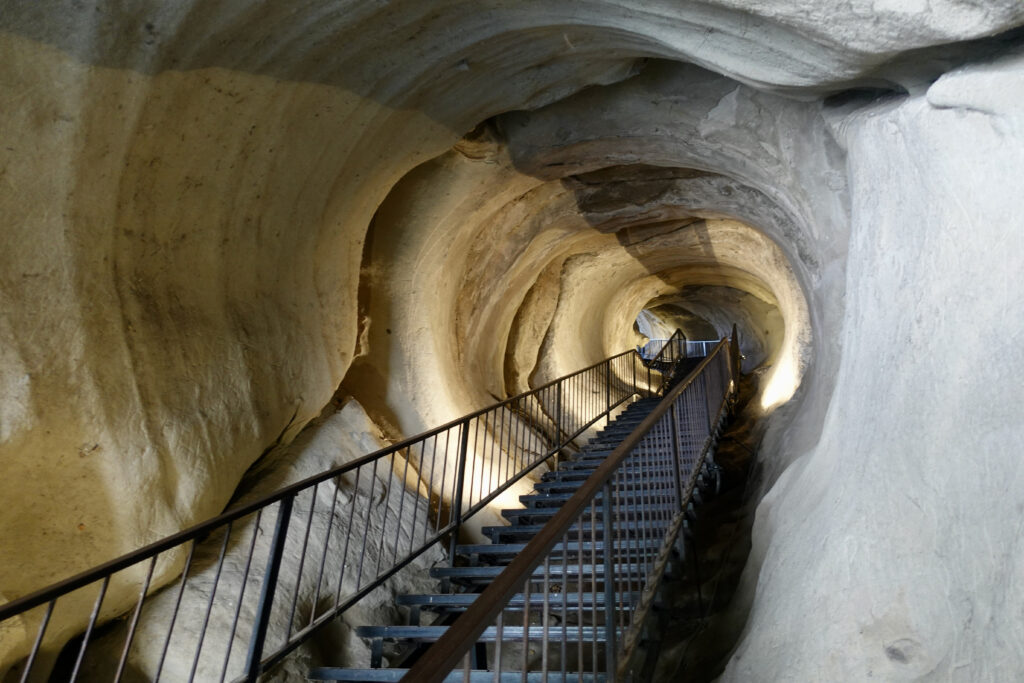
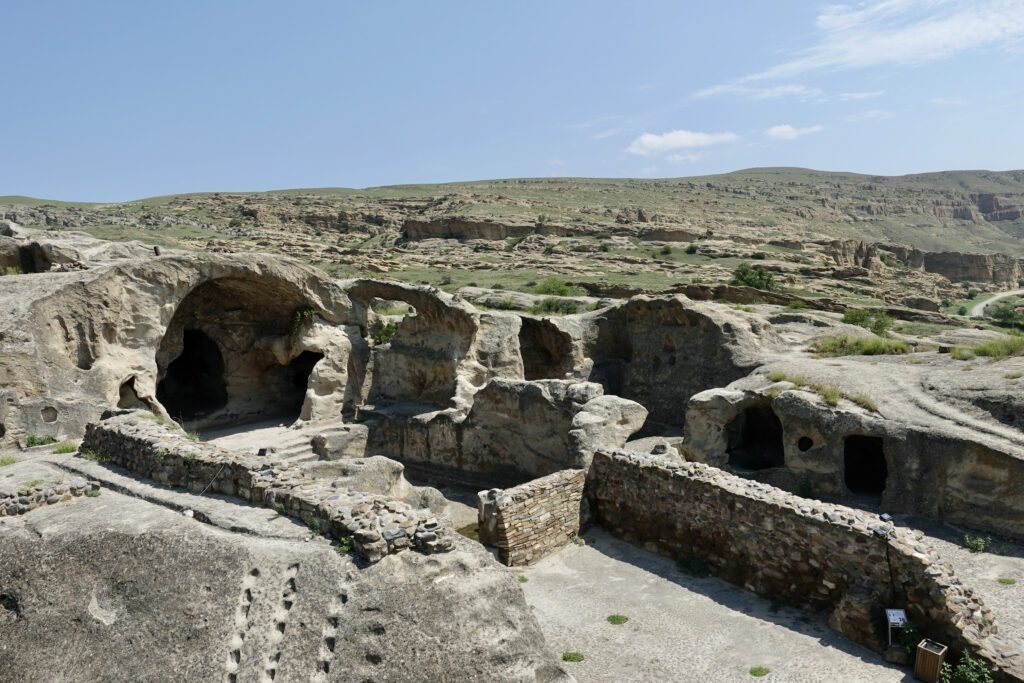
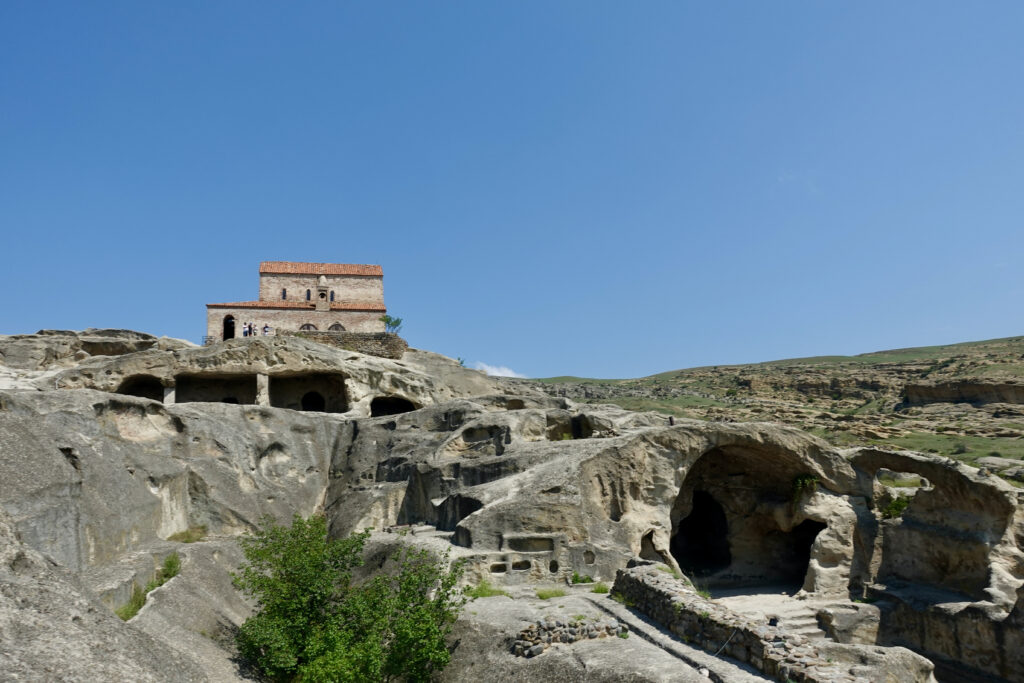
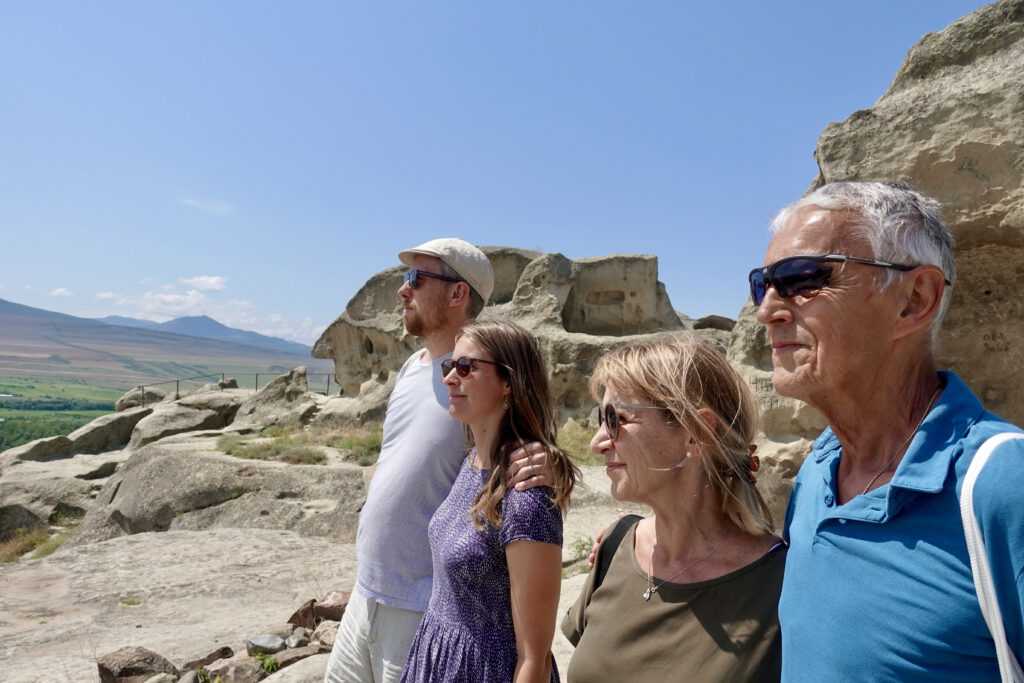
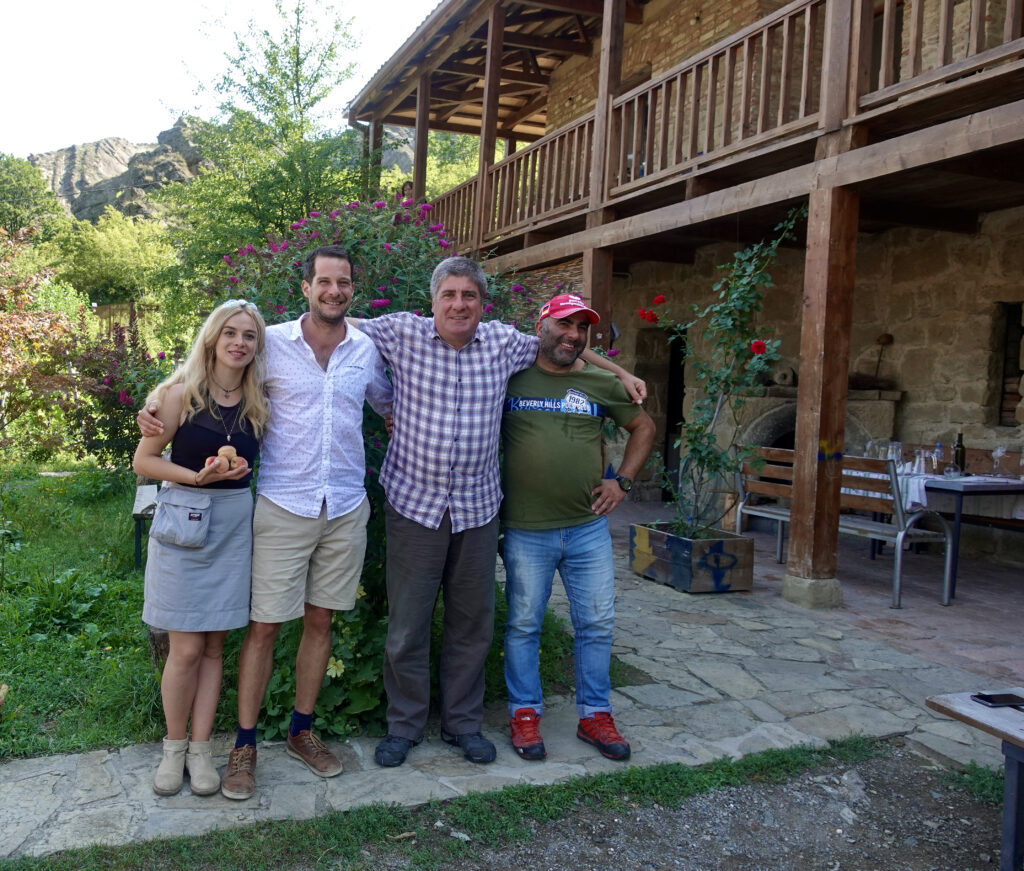
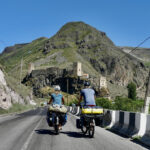
Leave a Reply